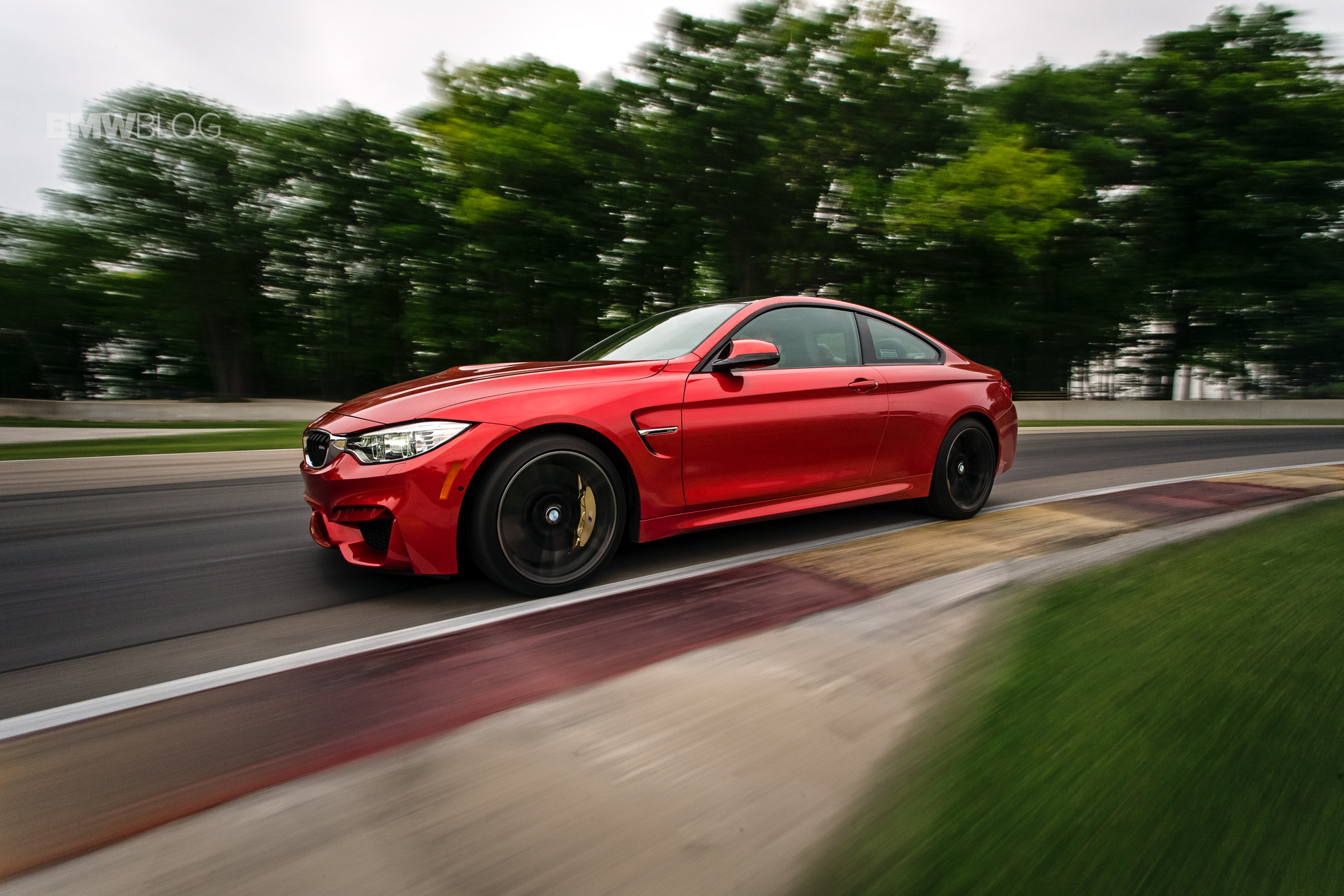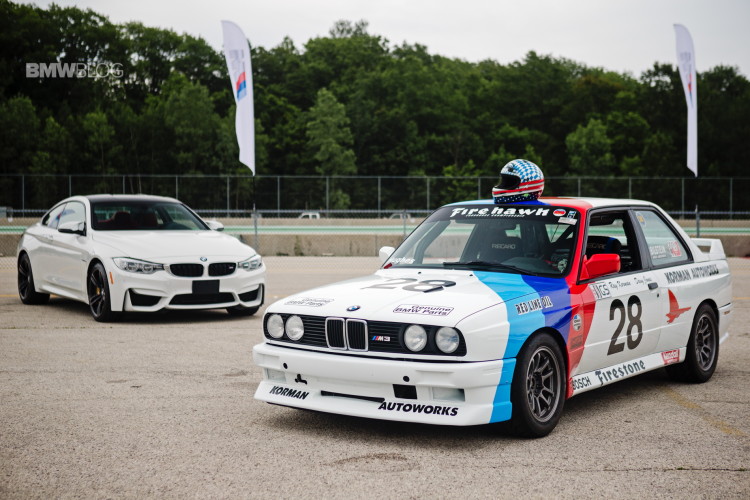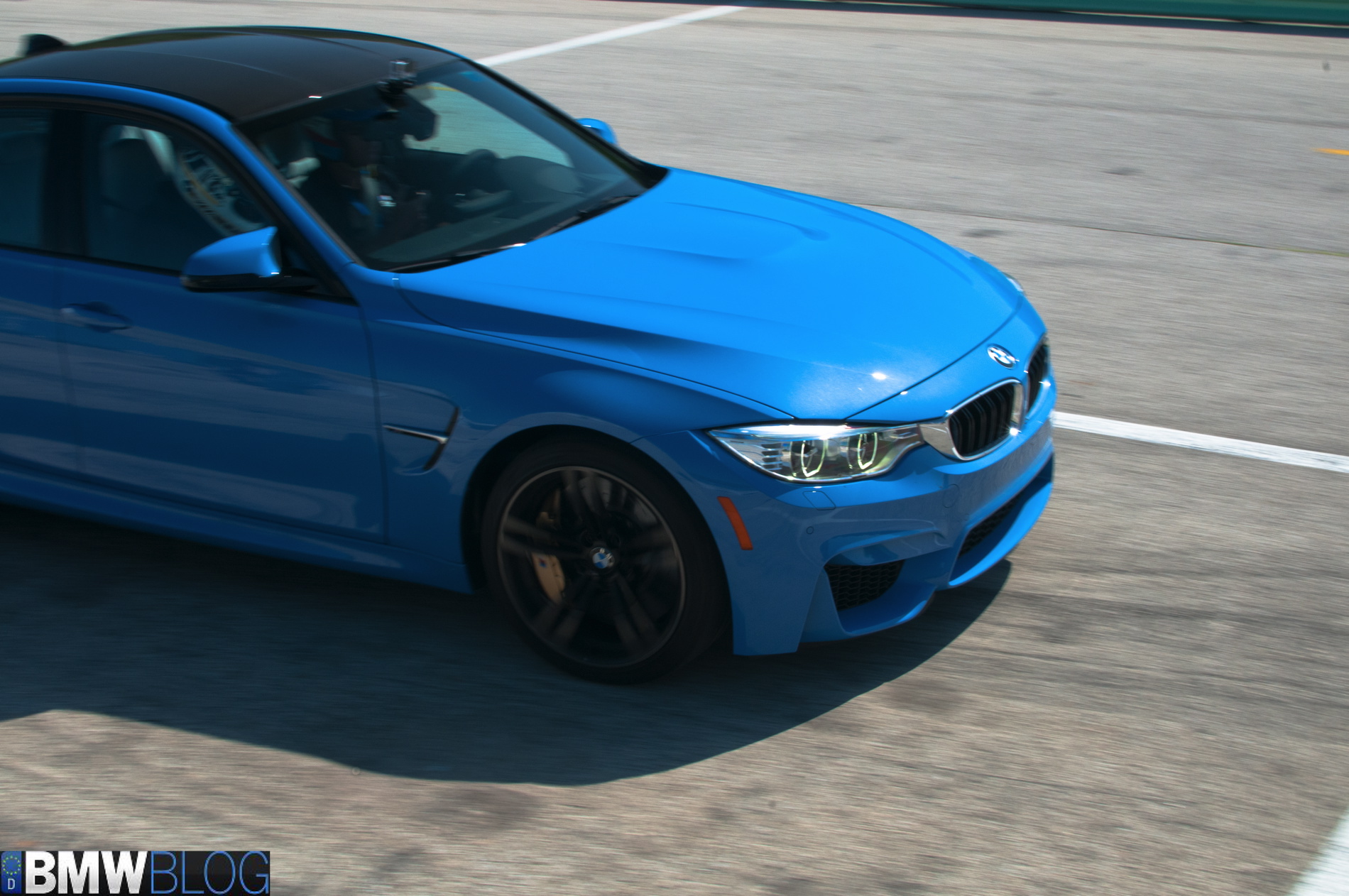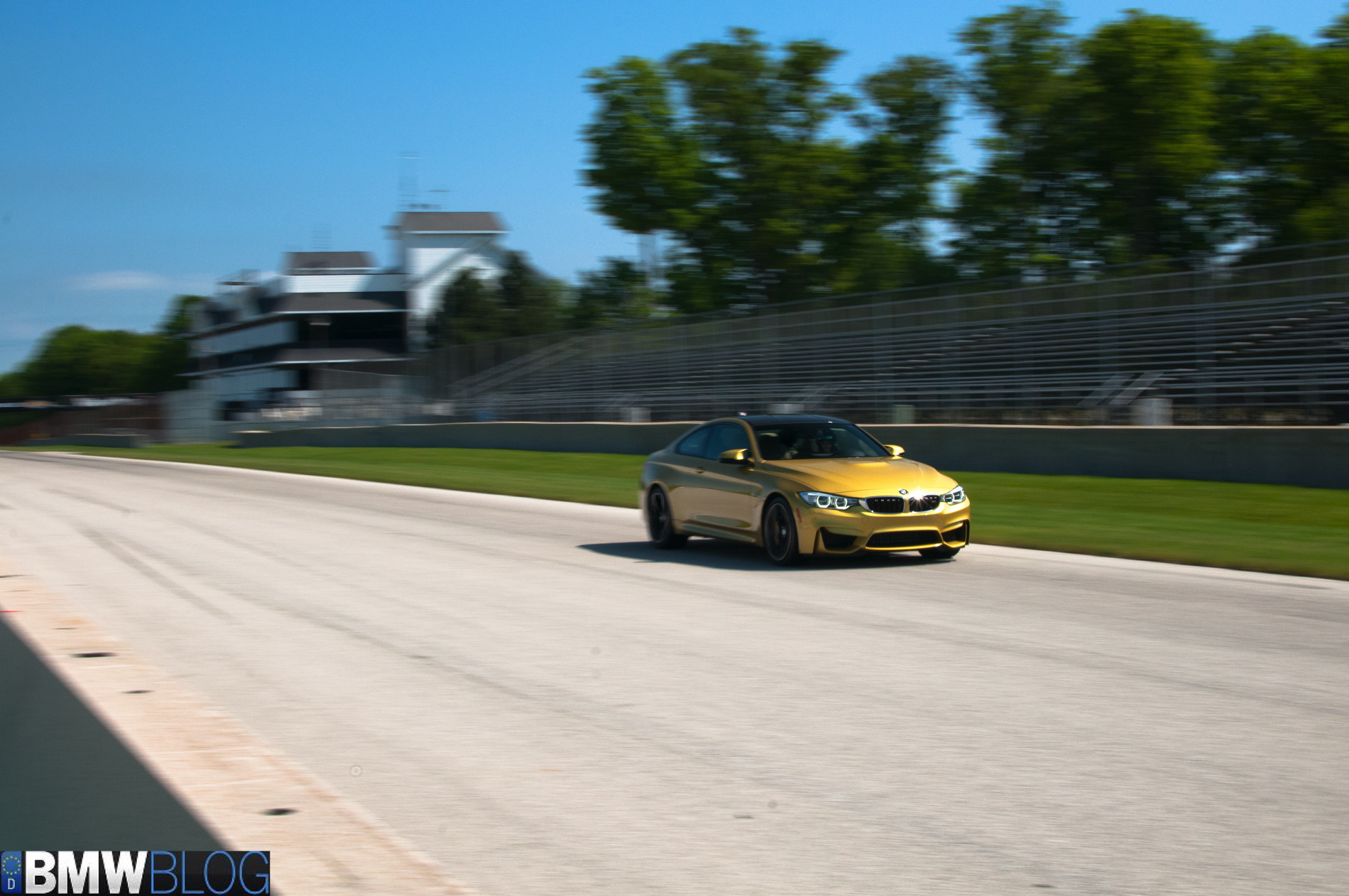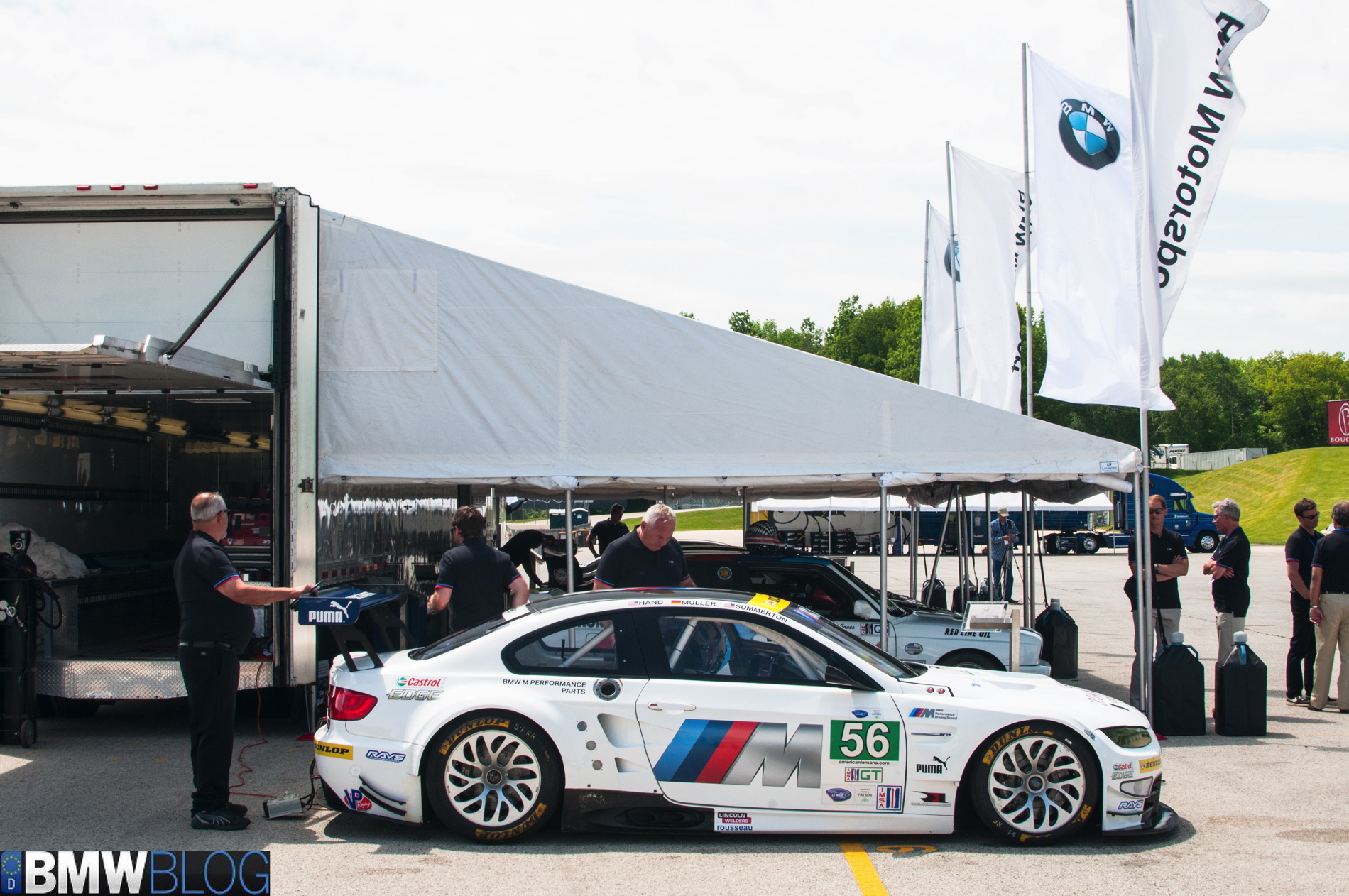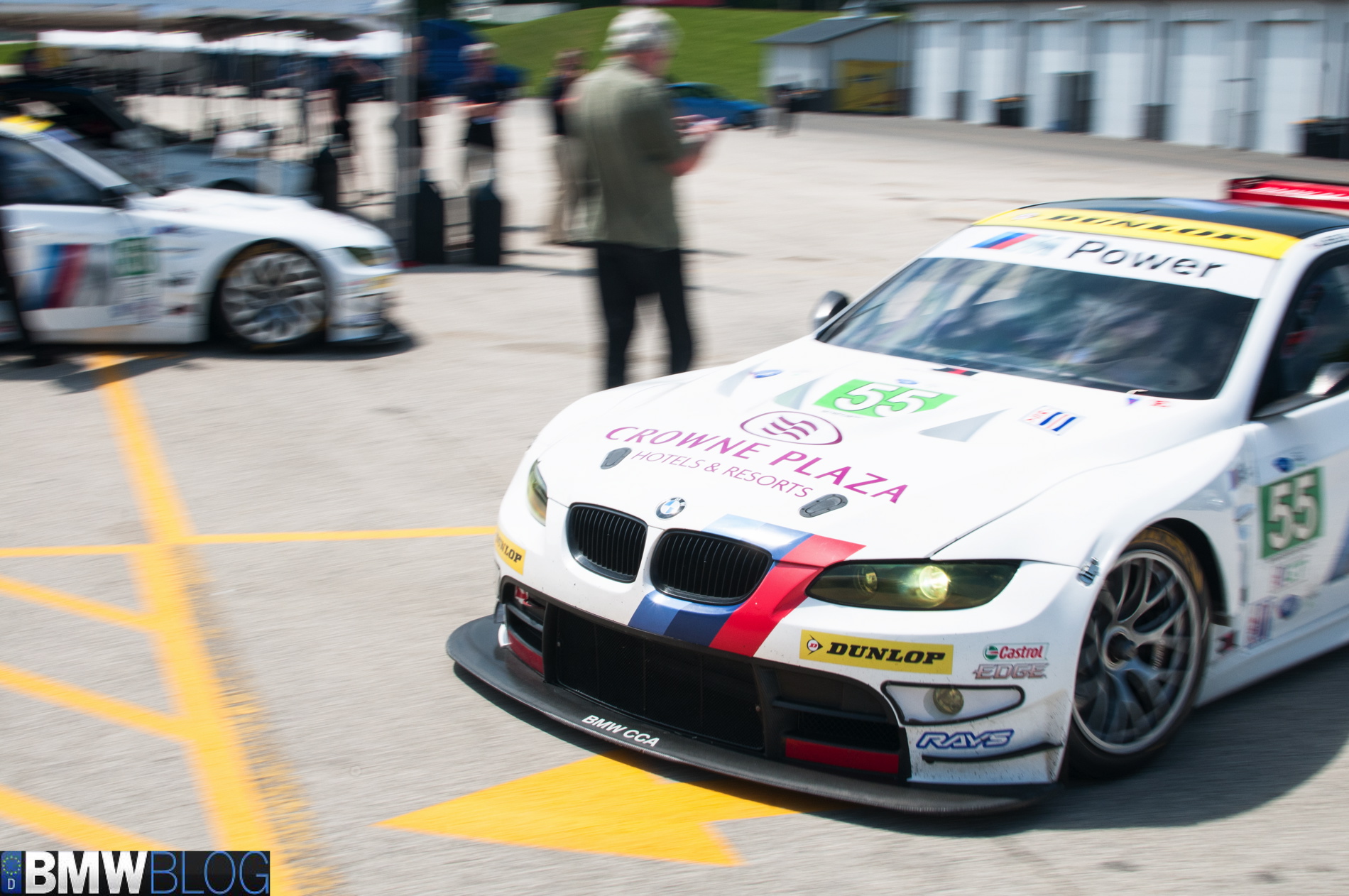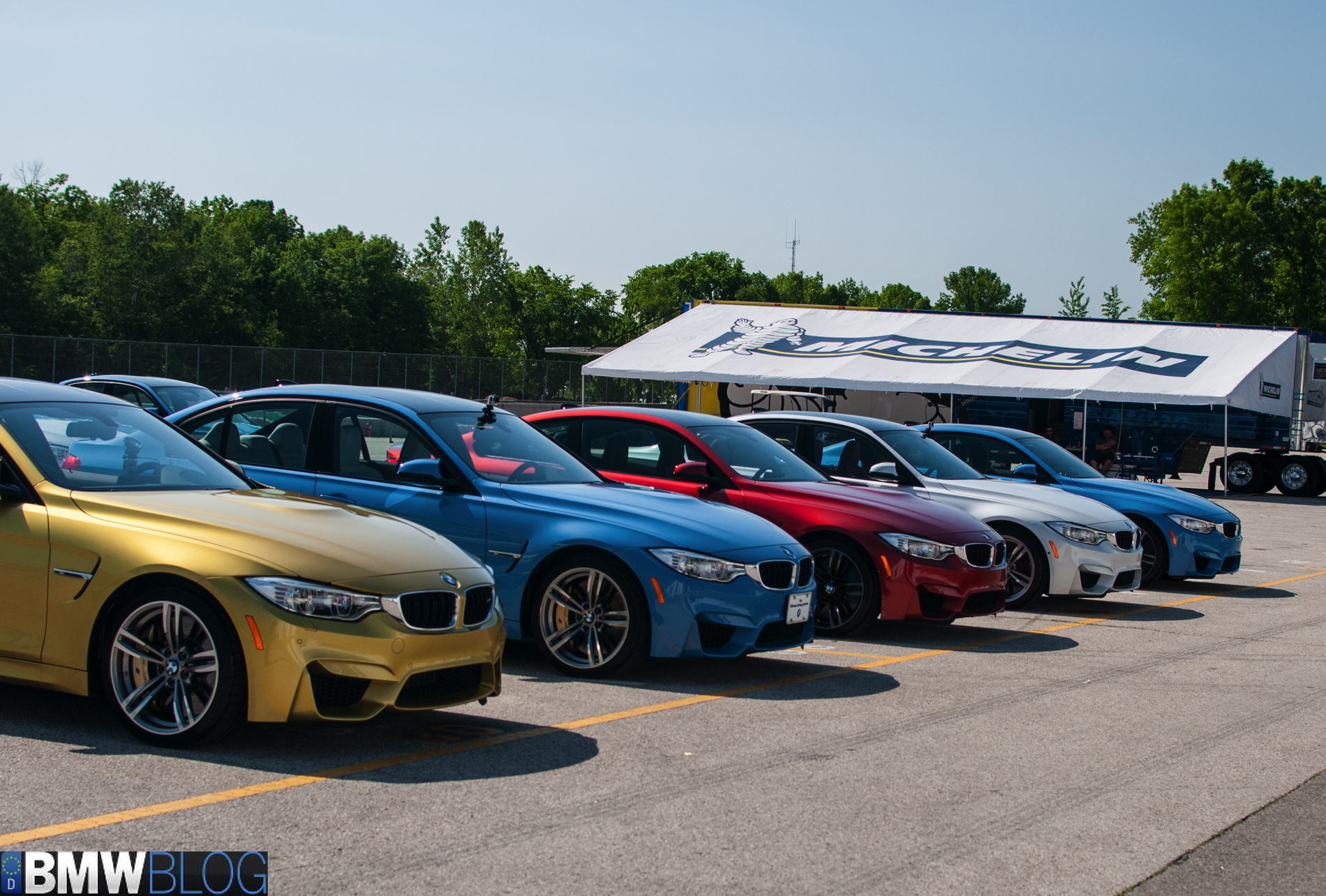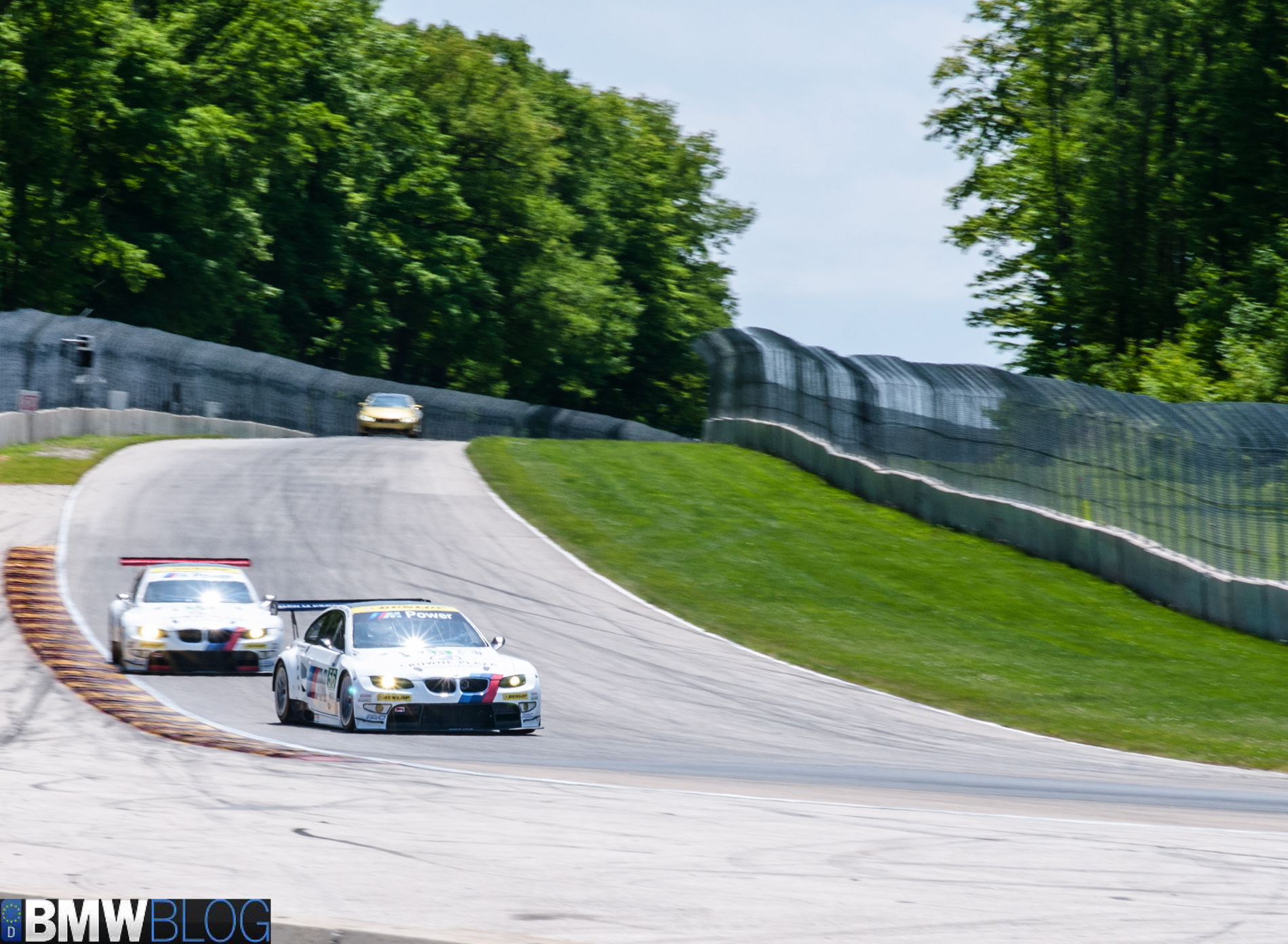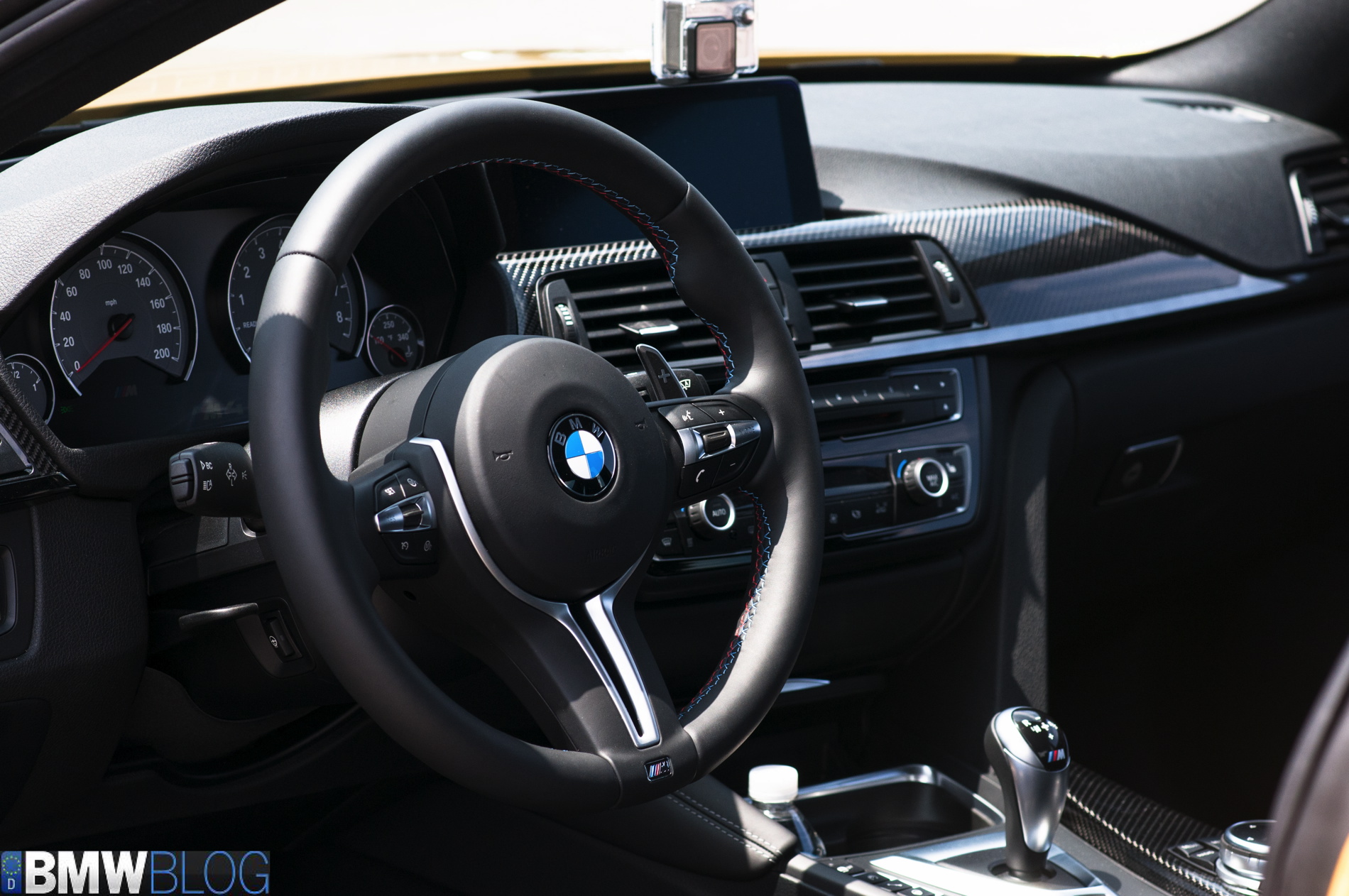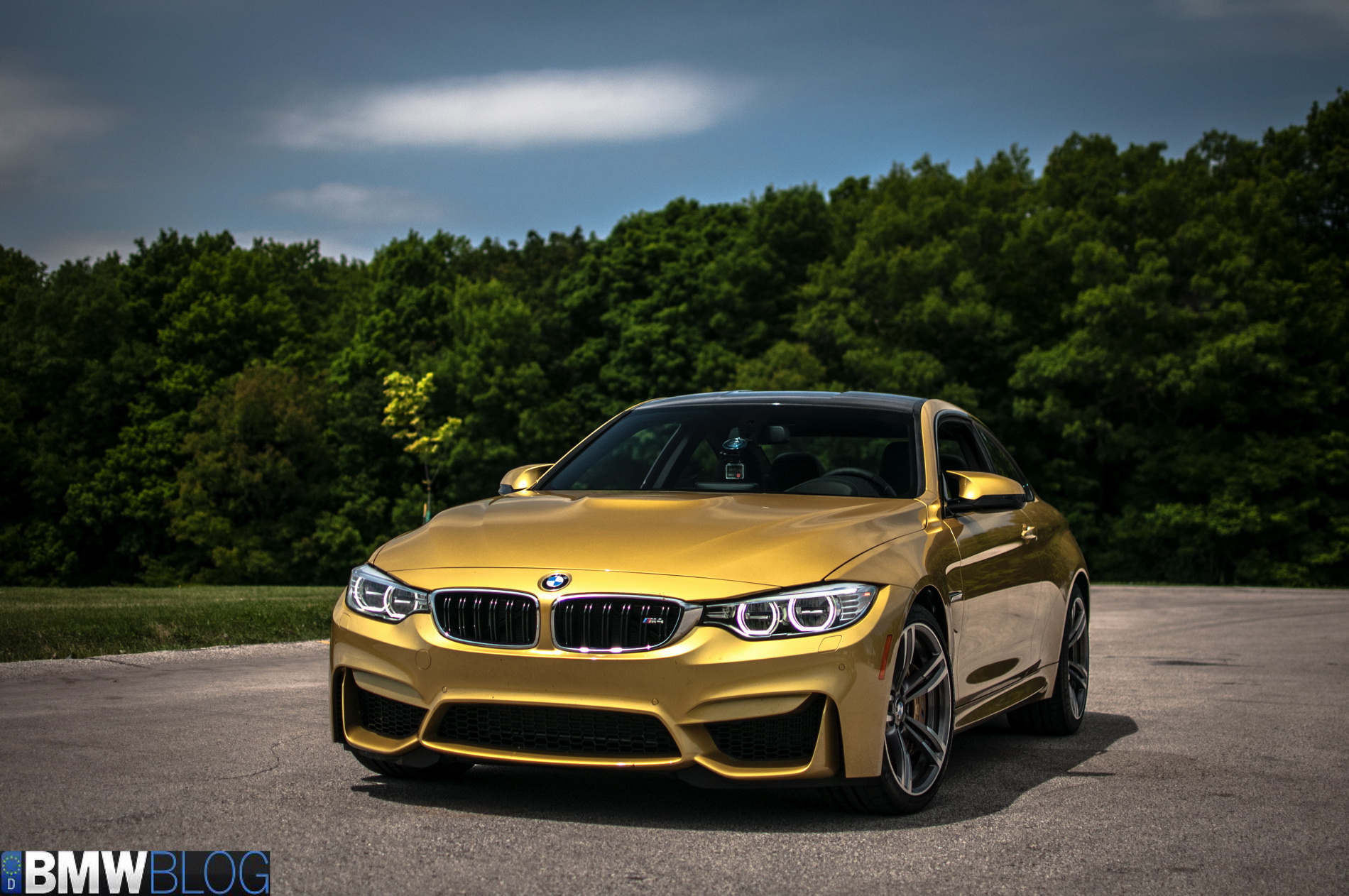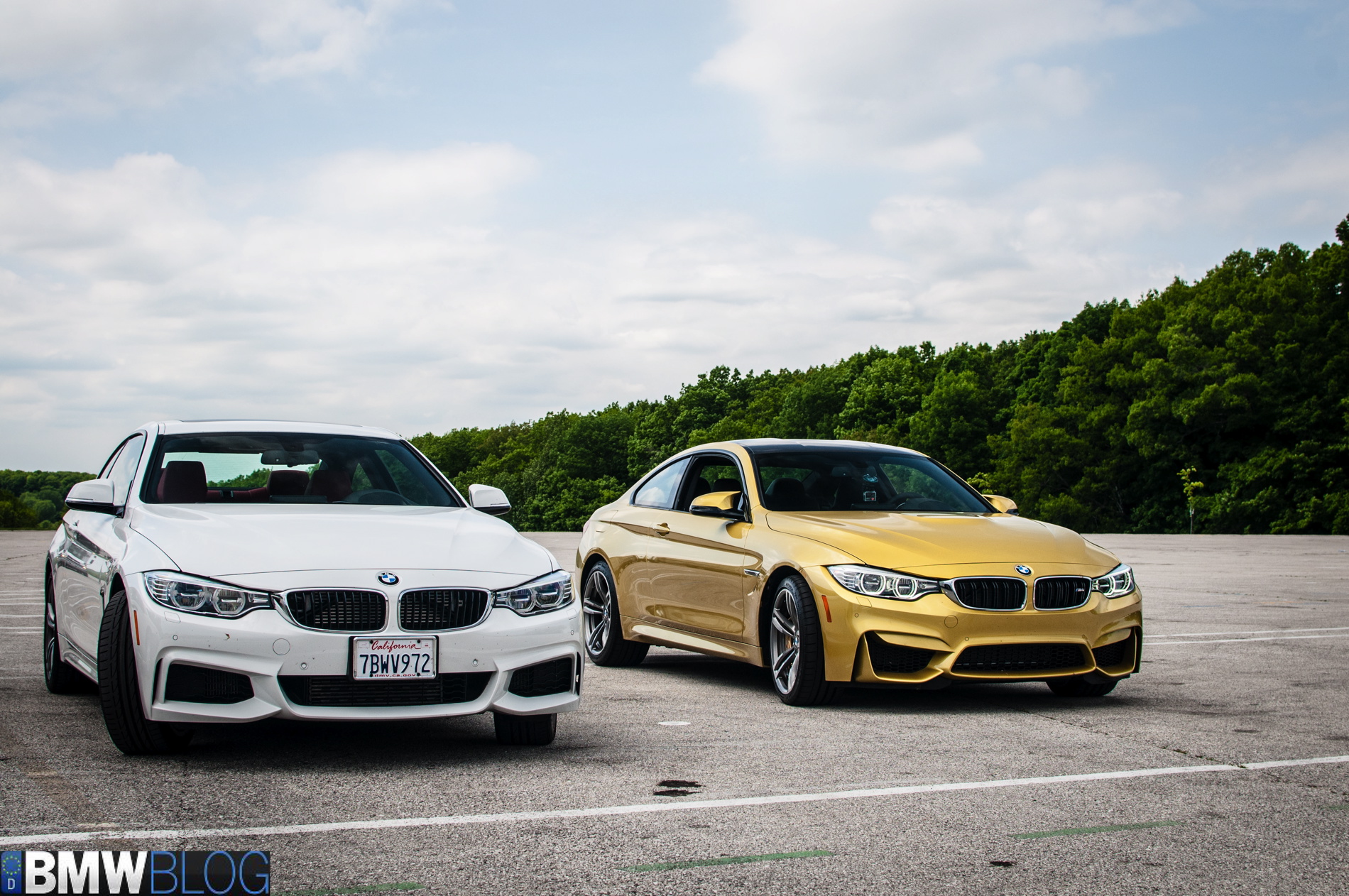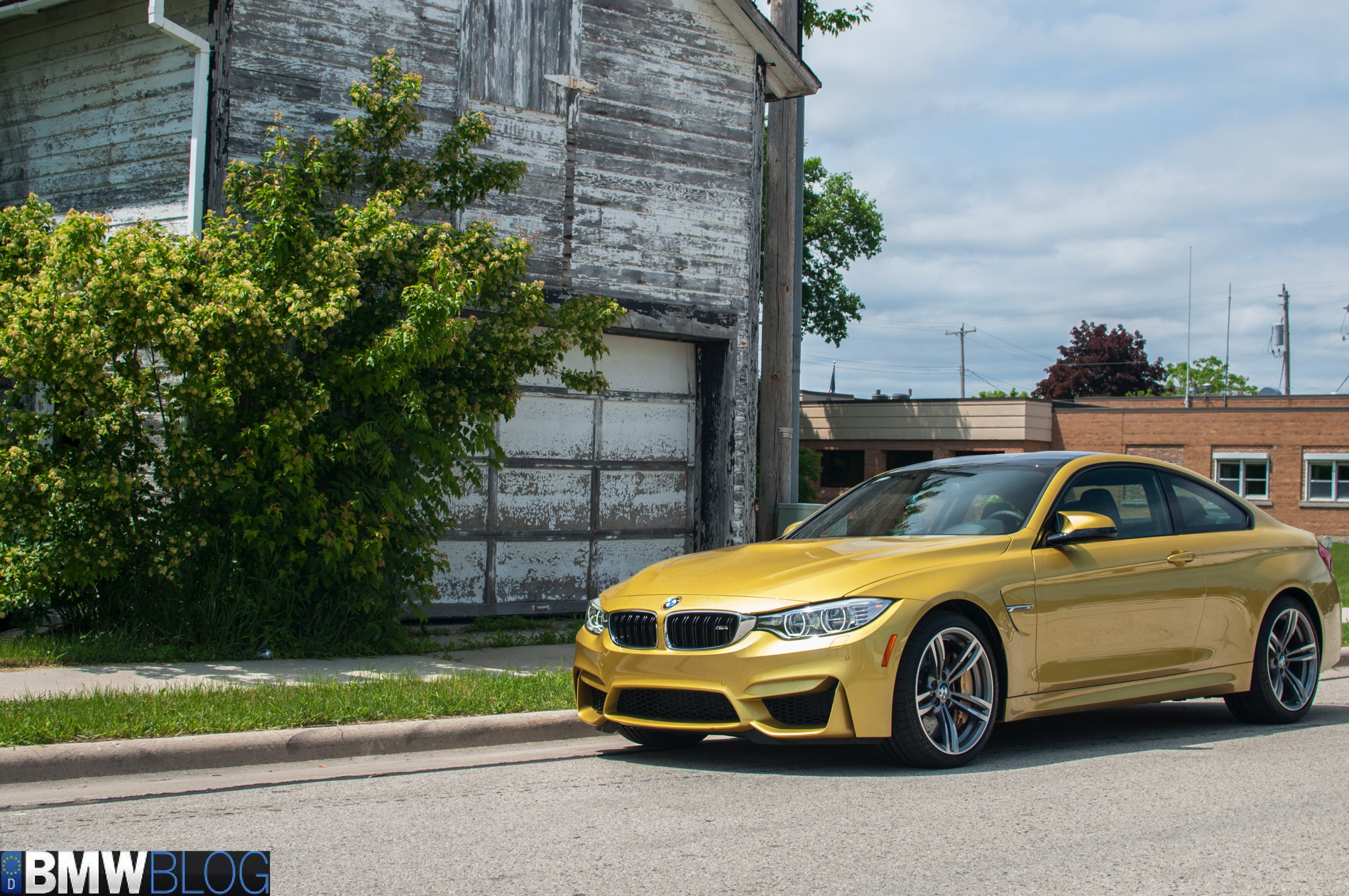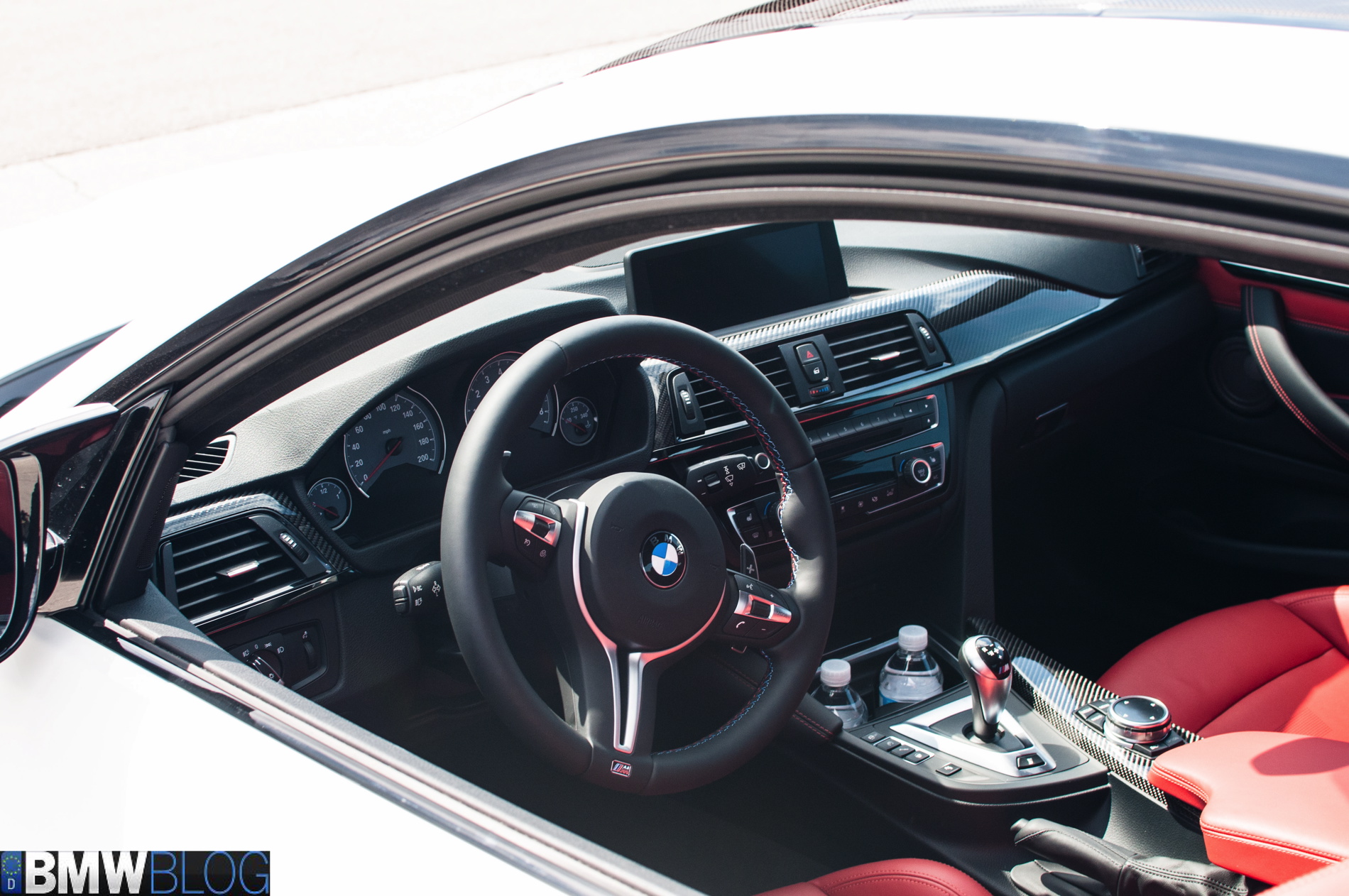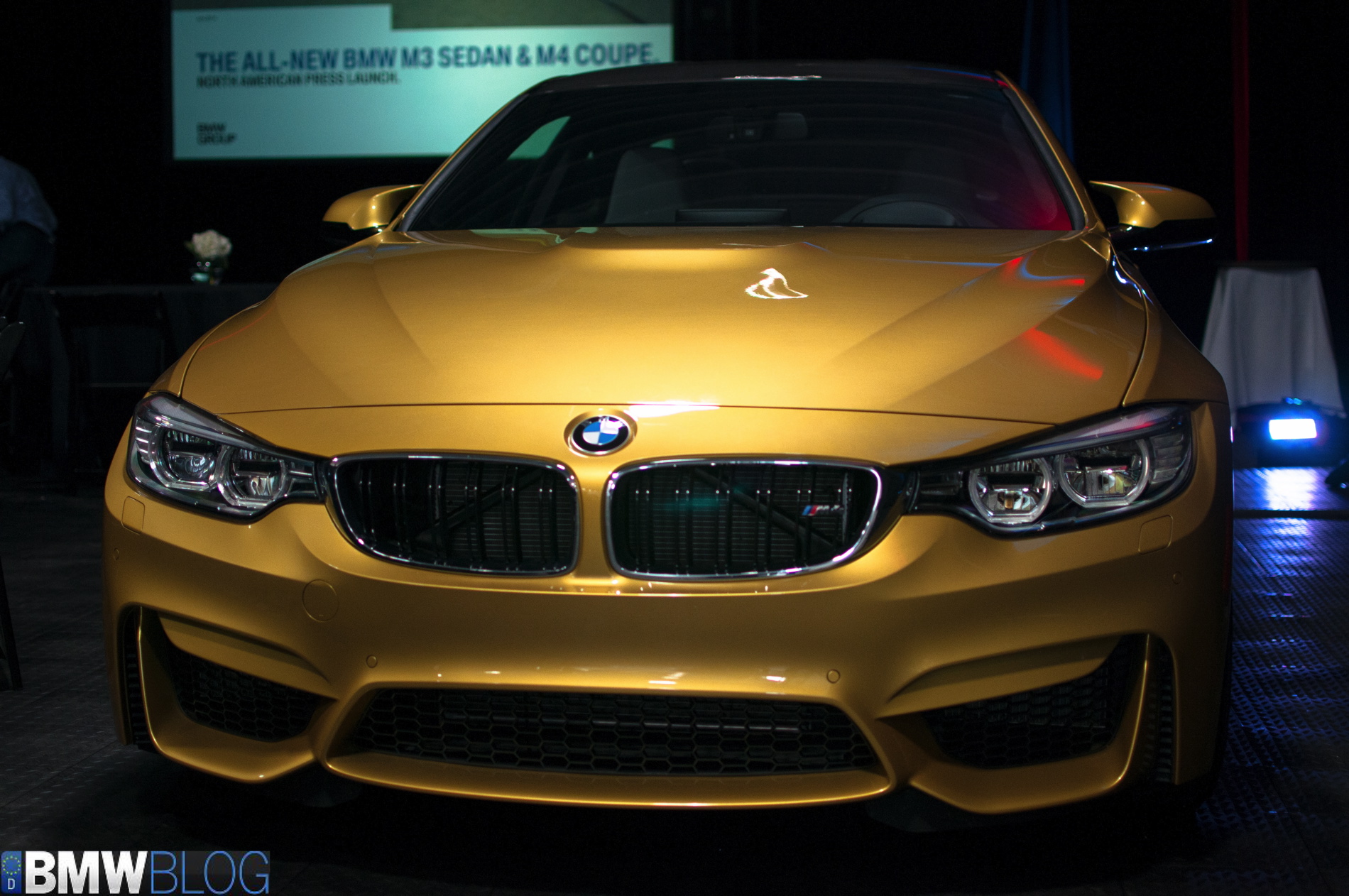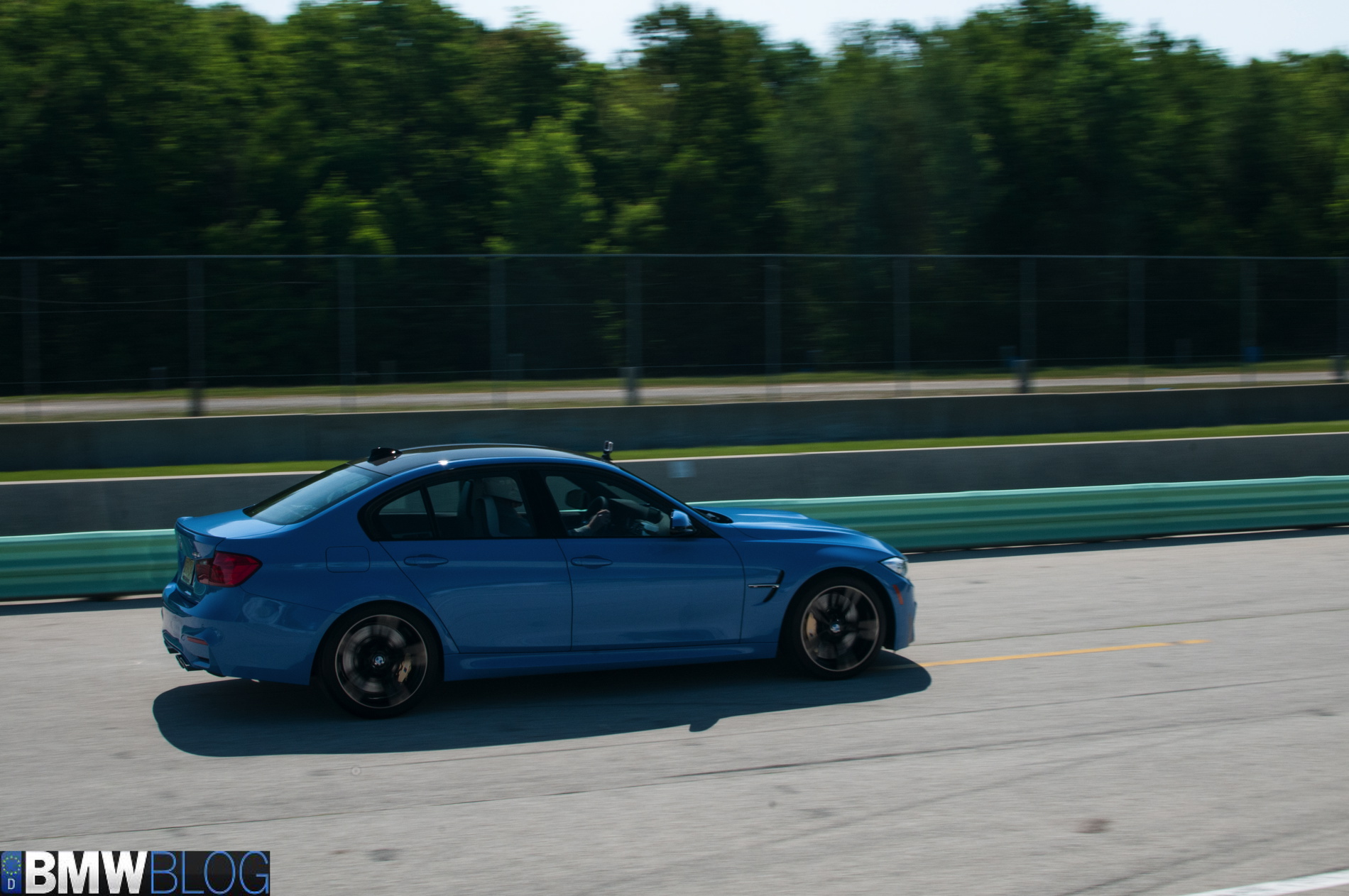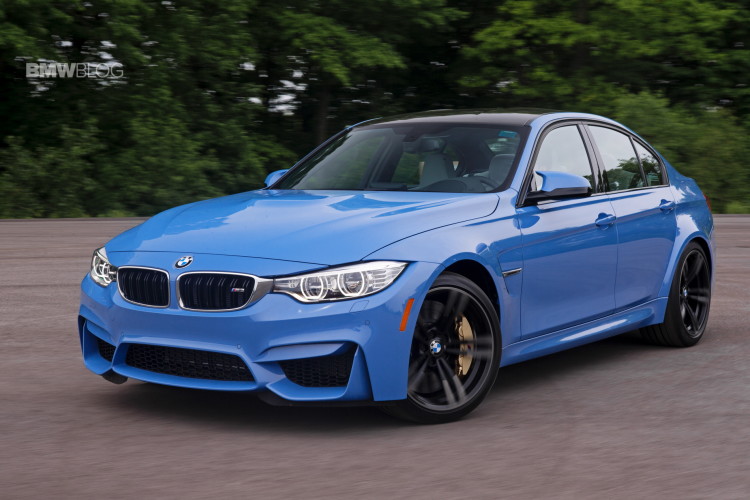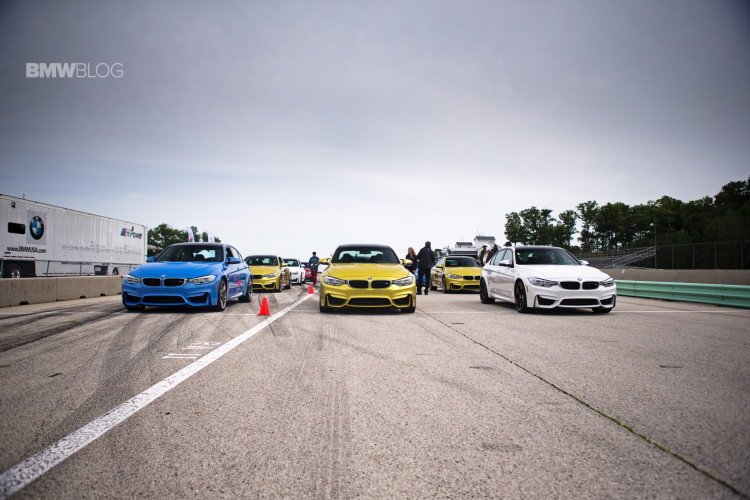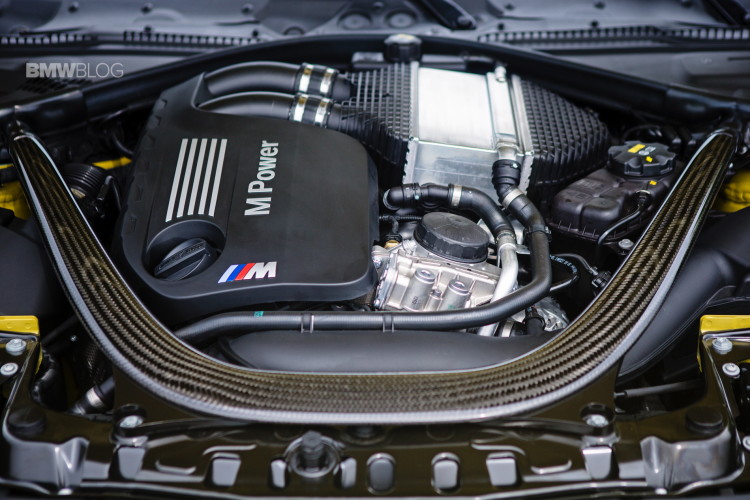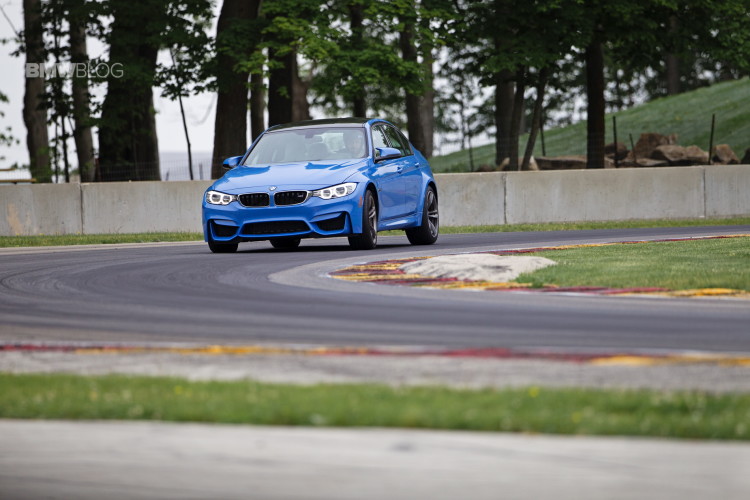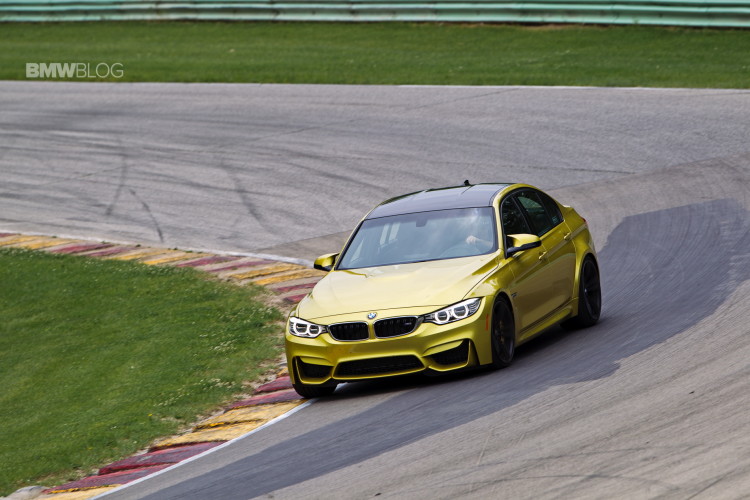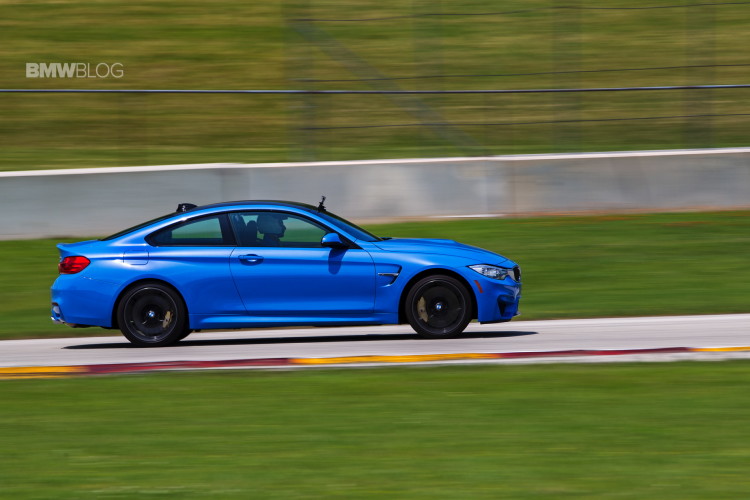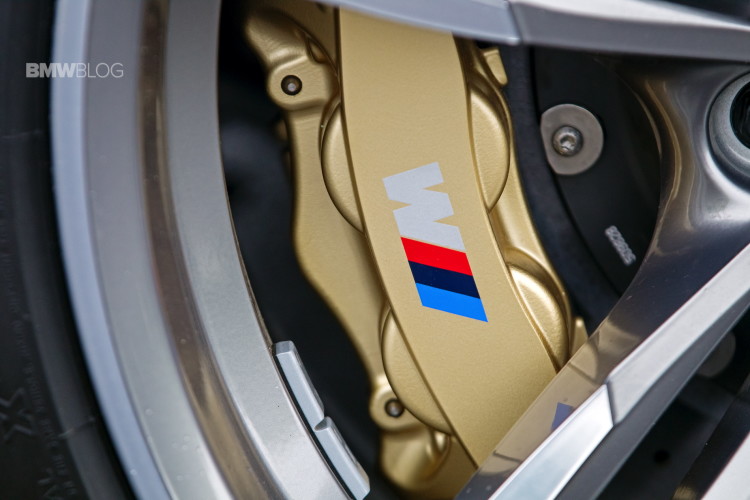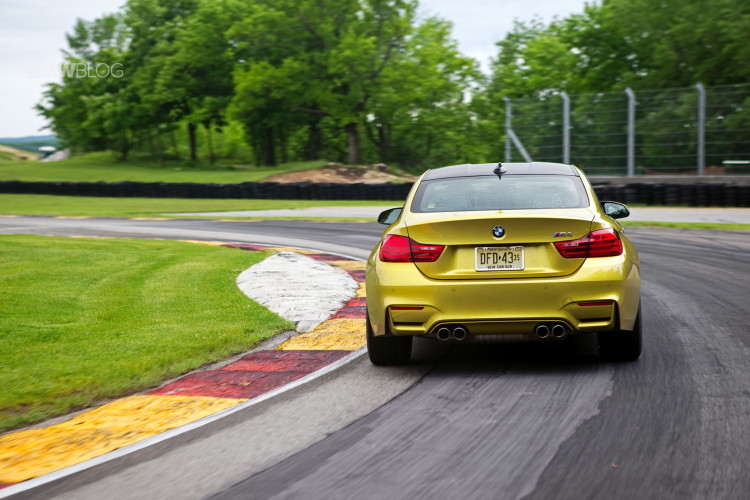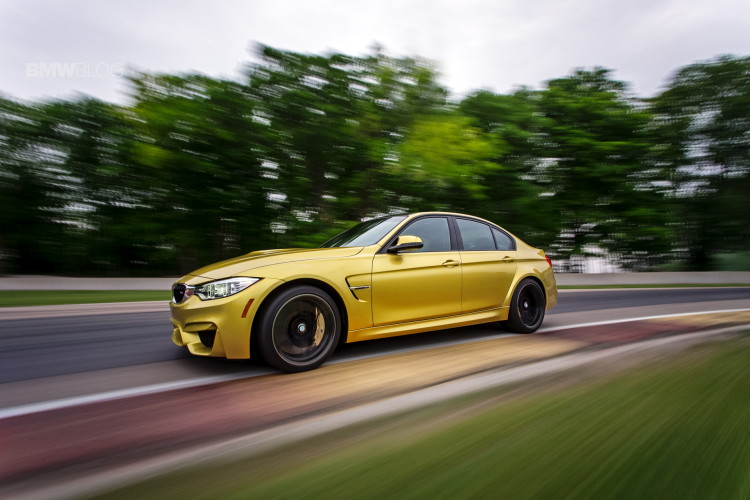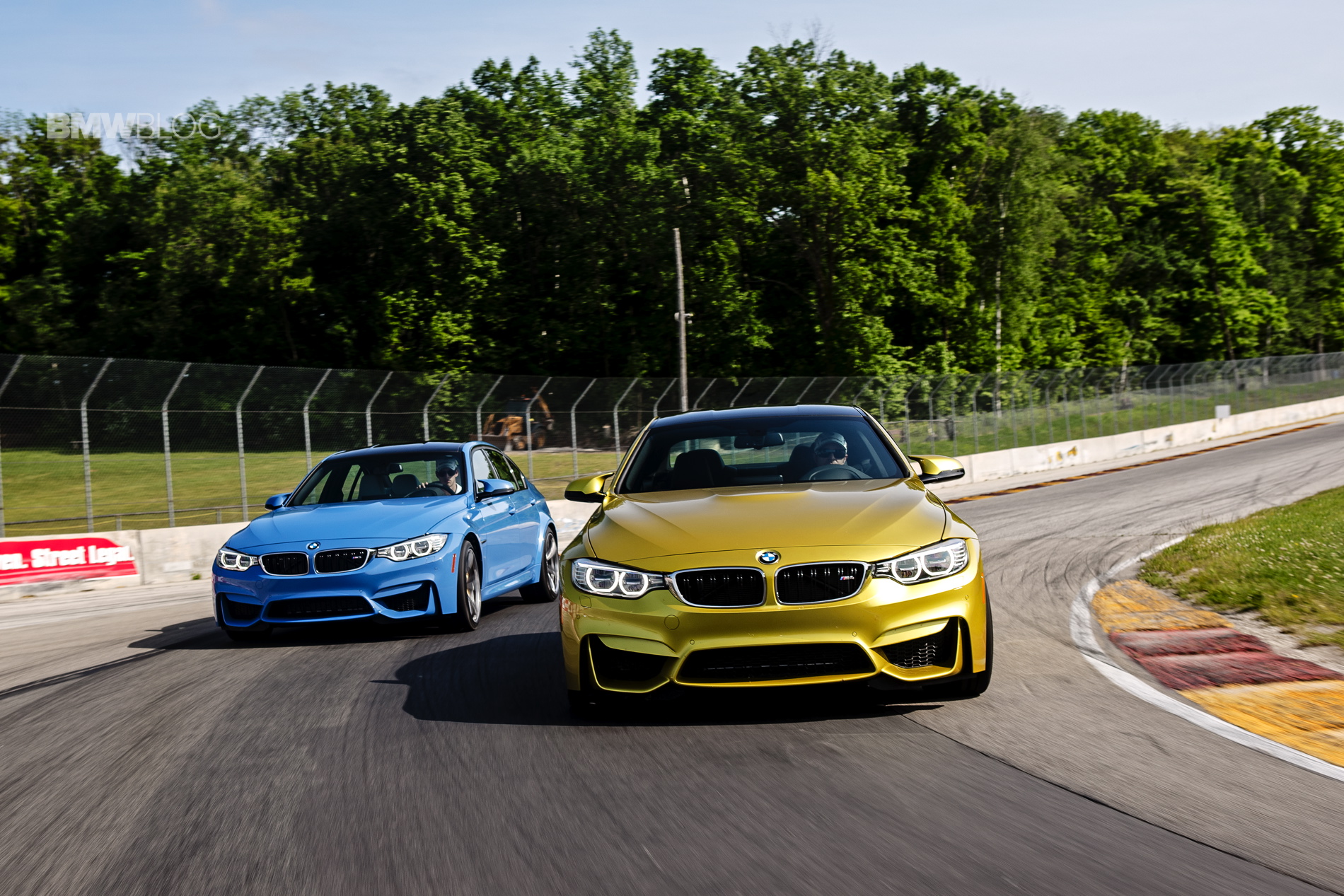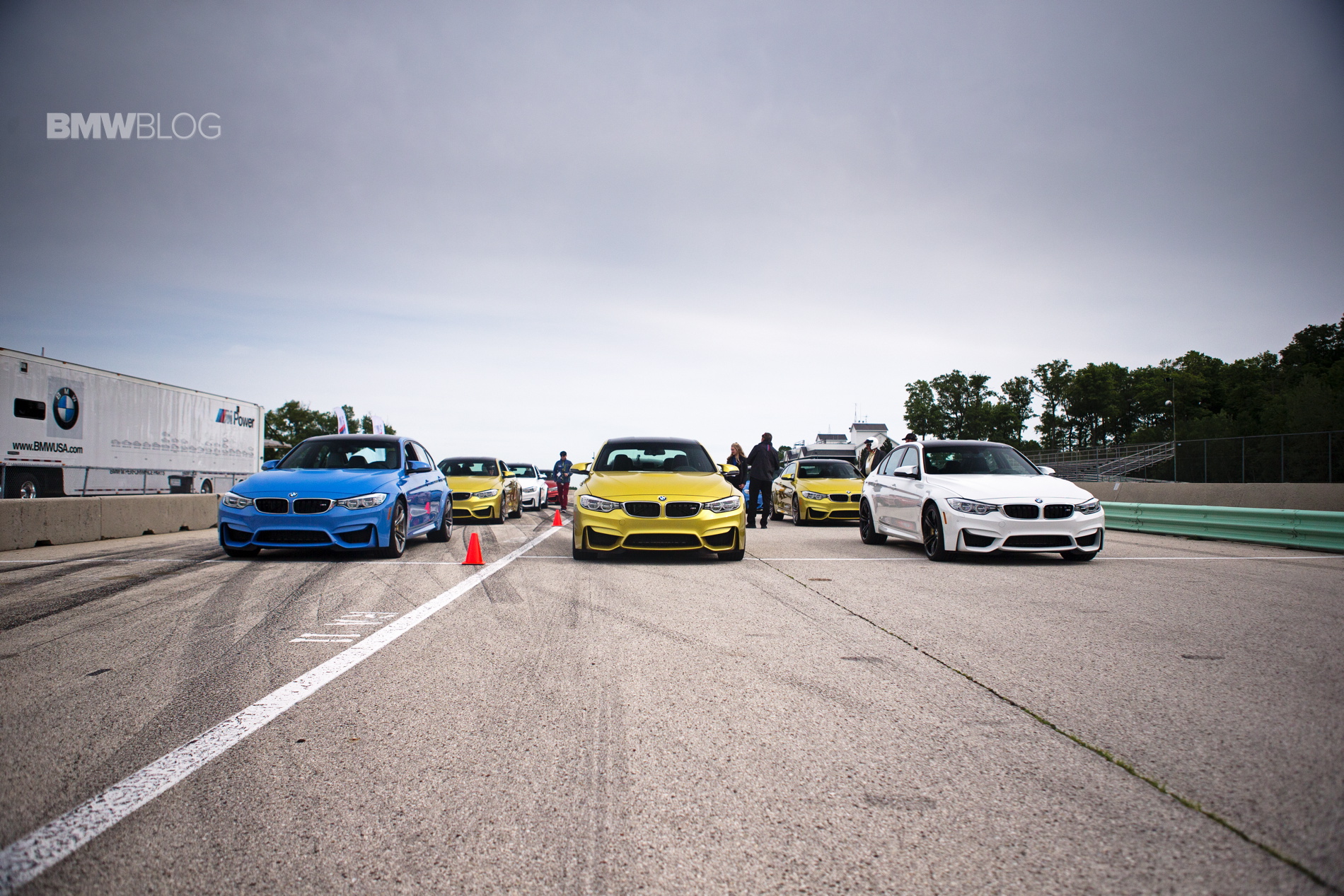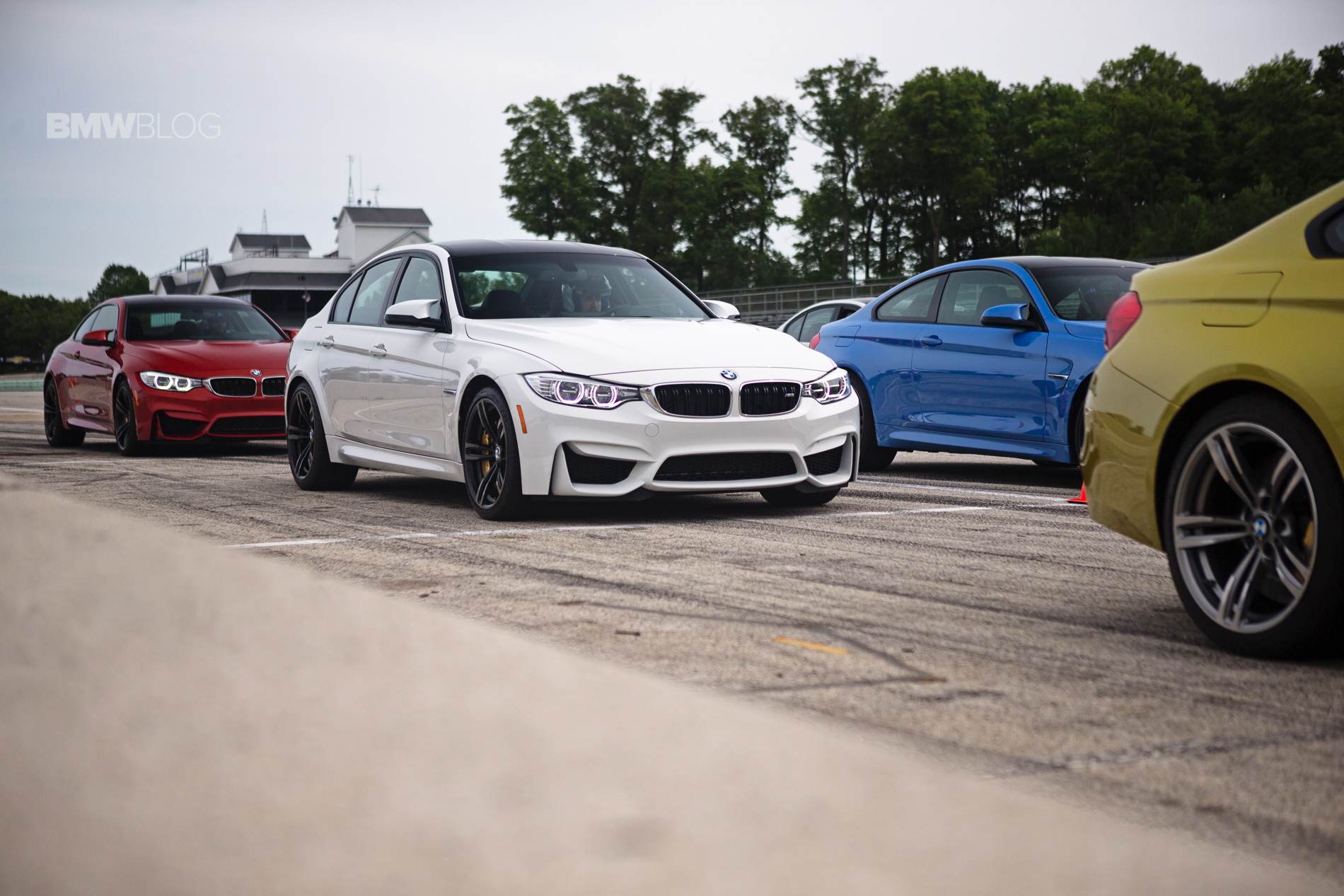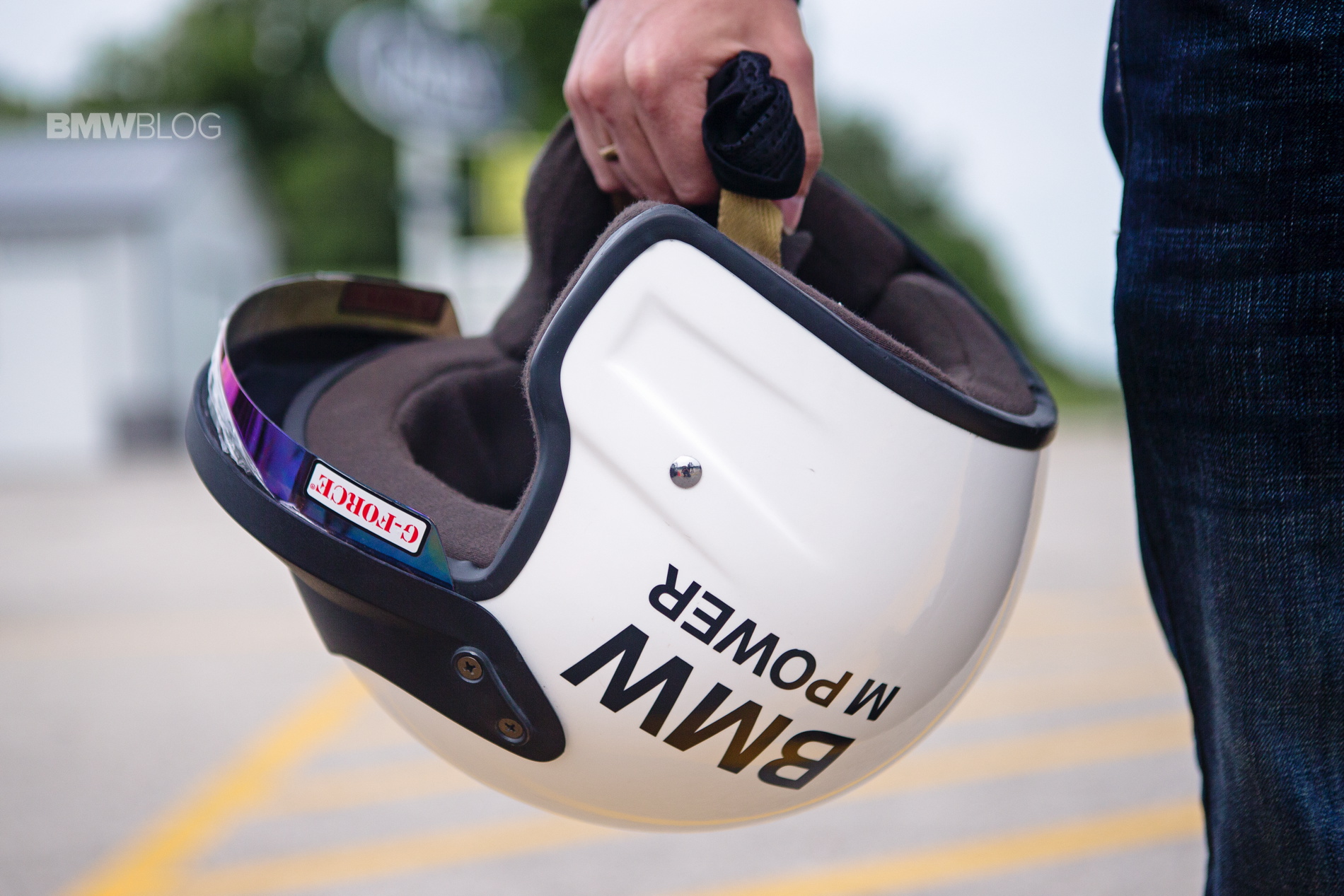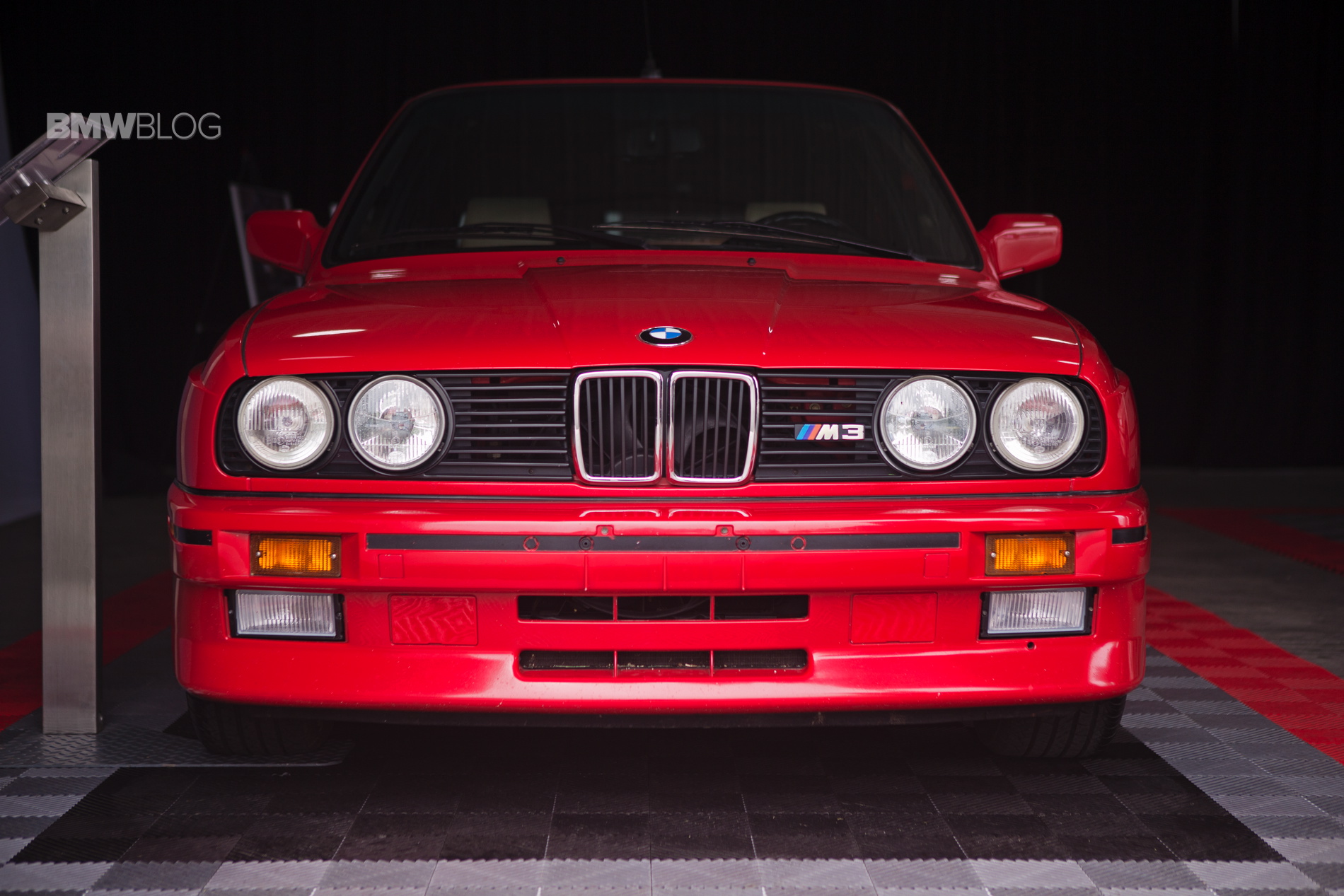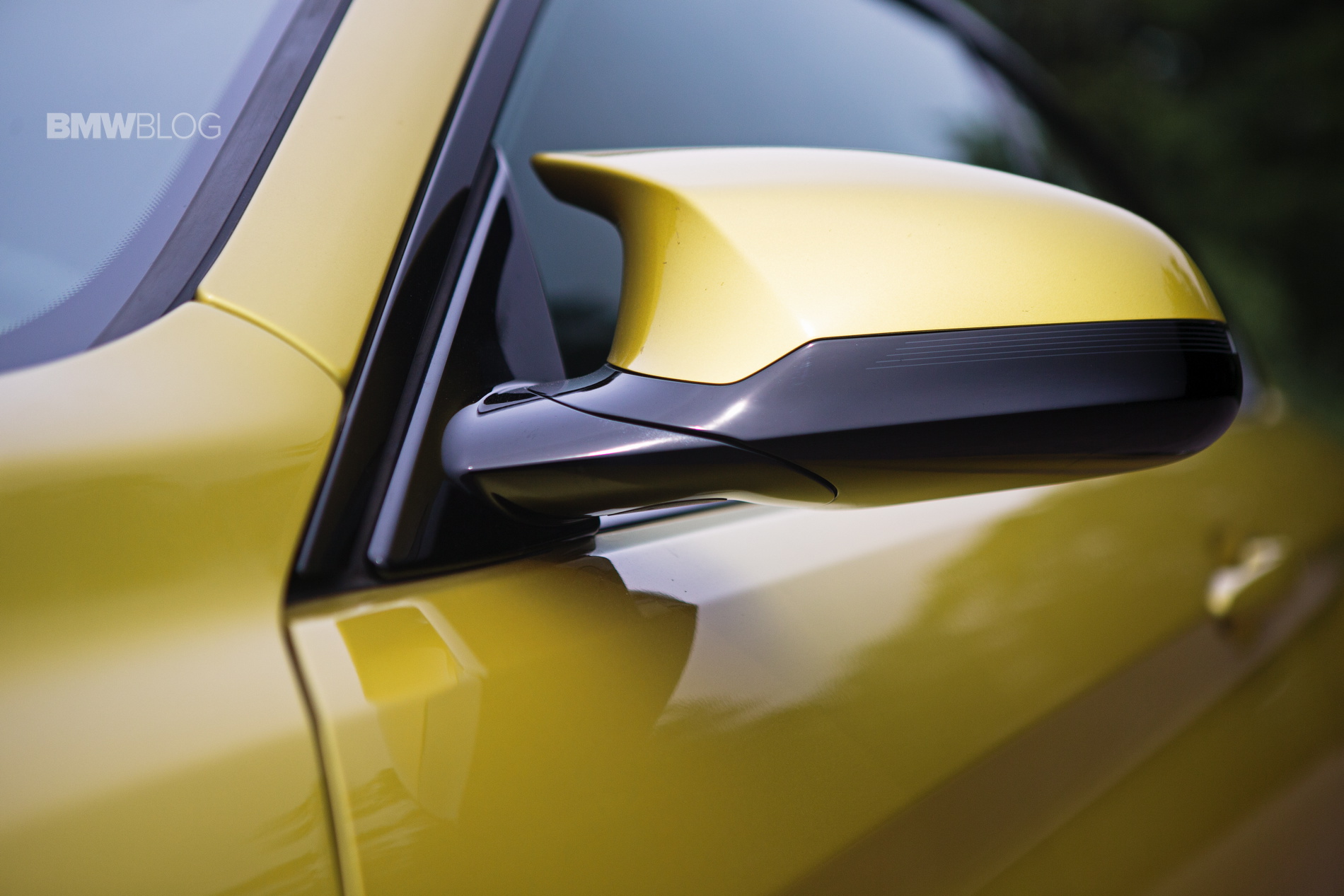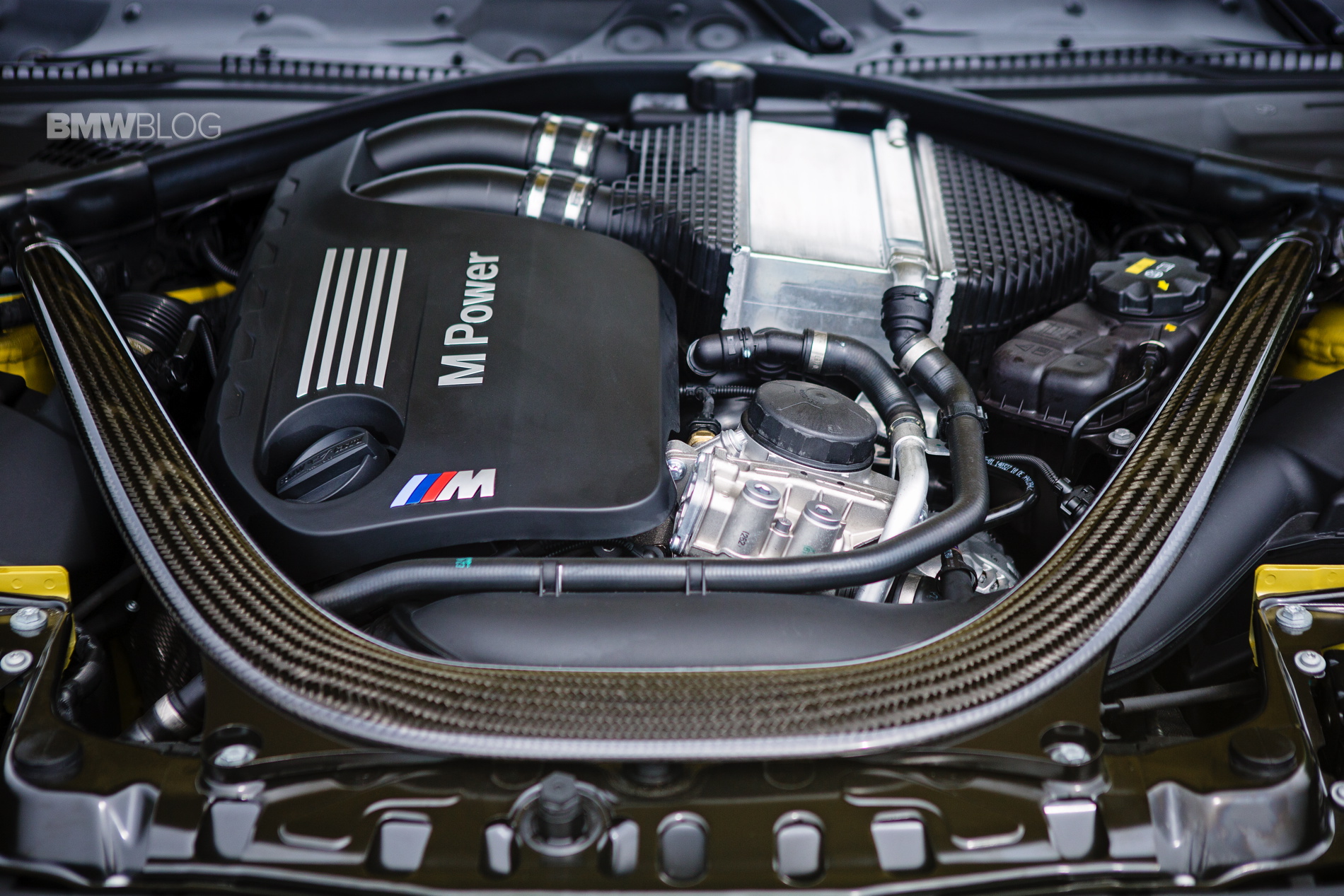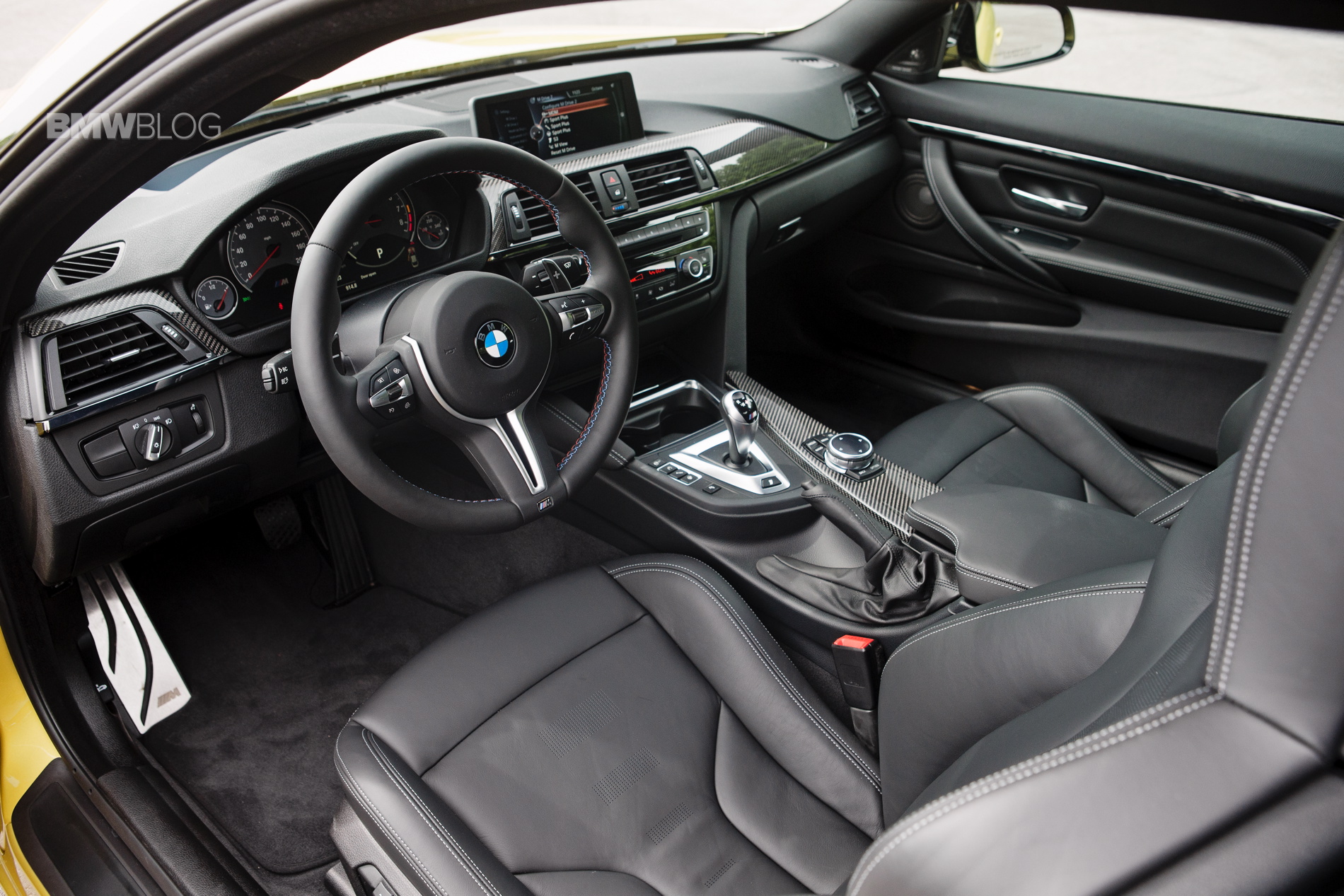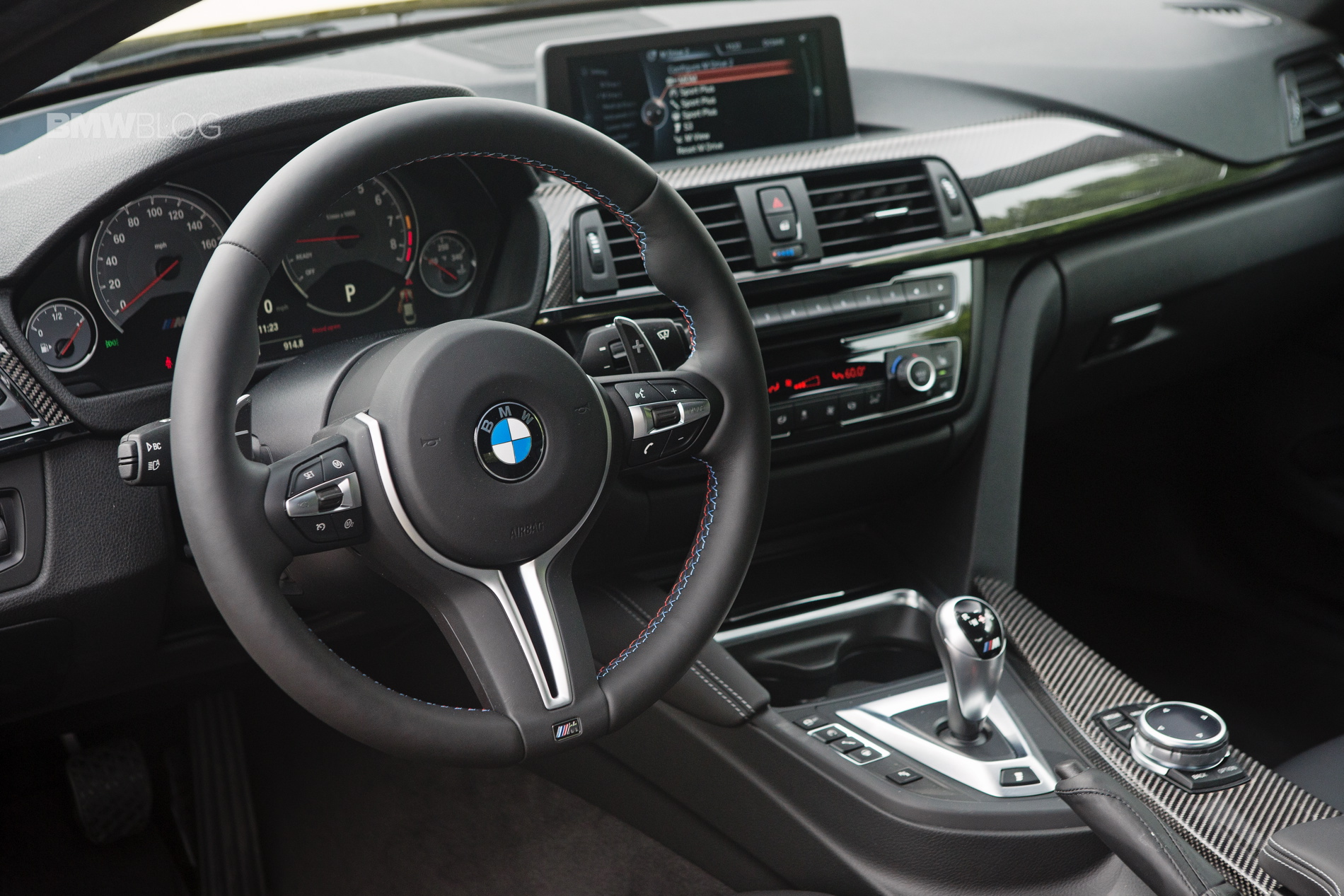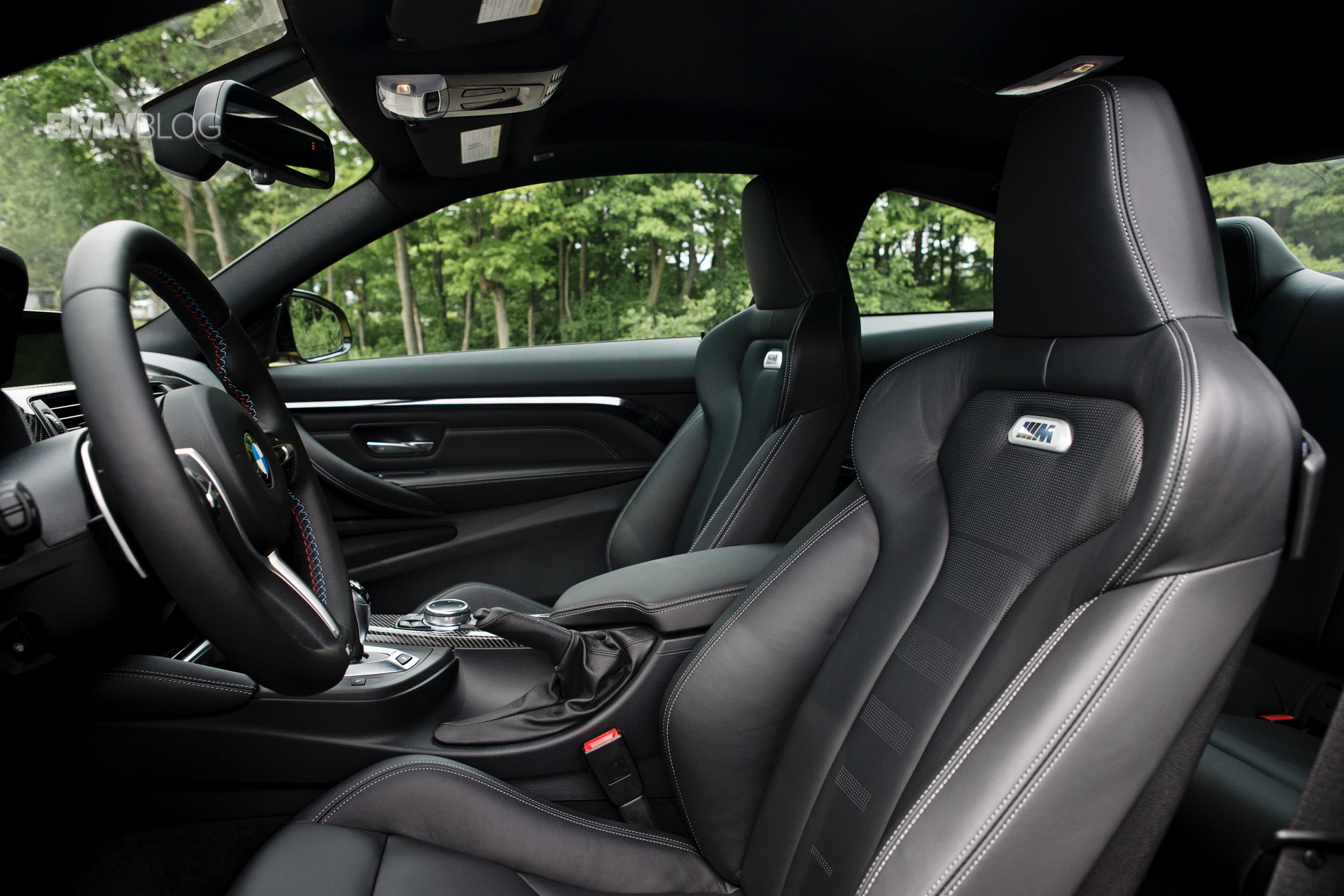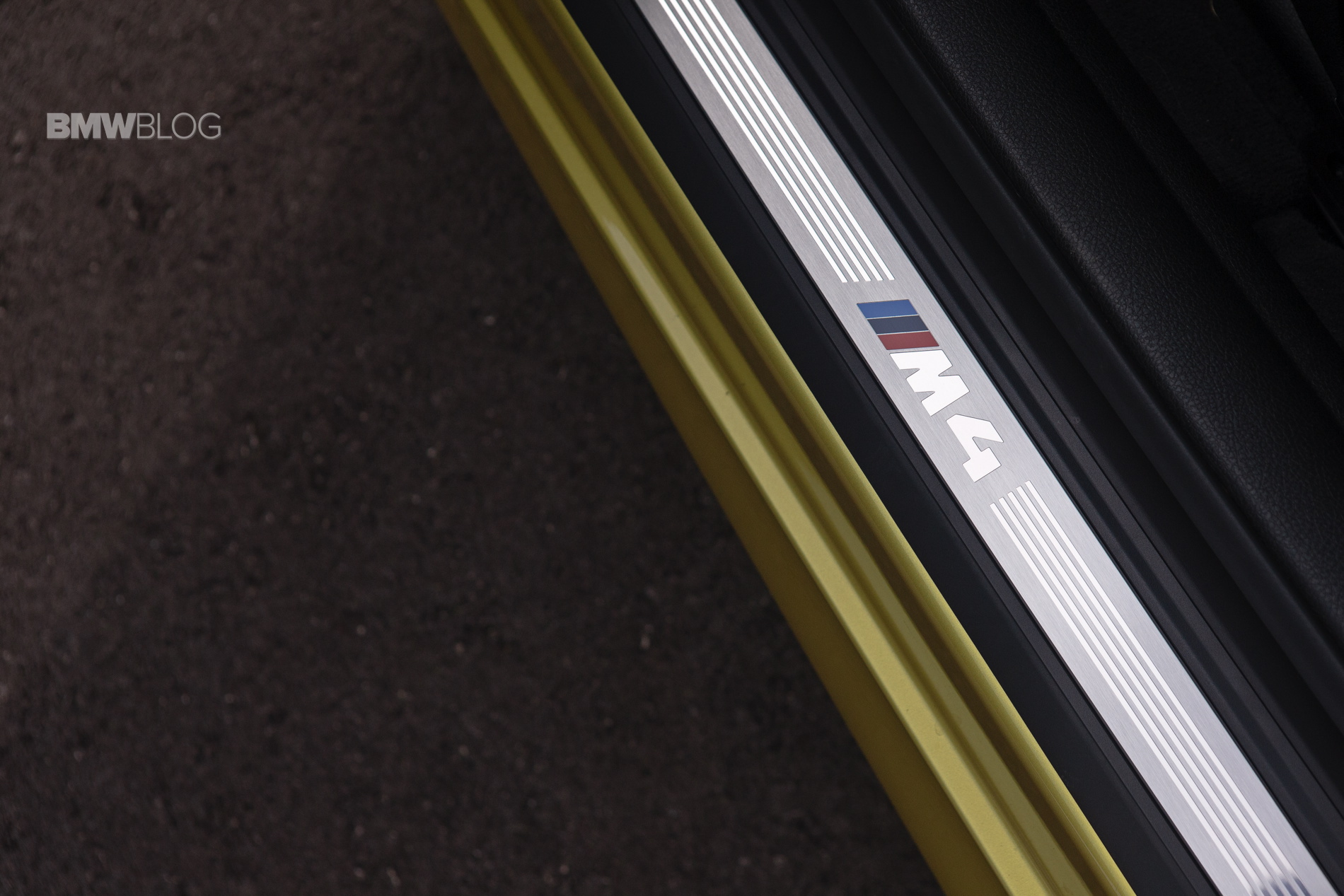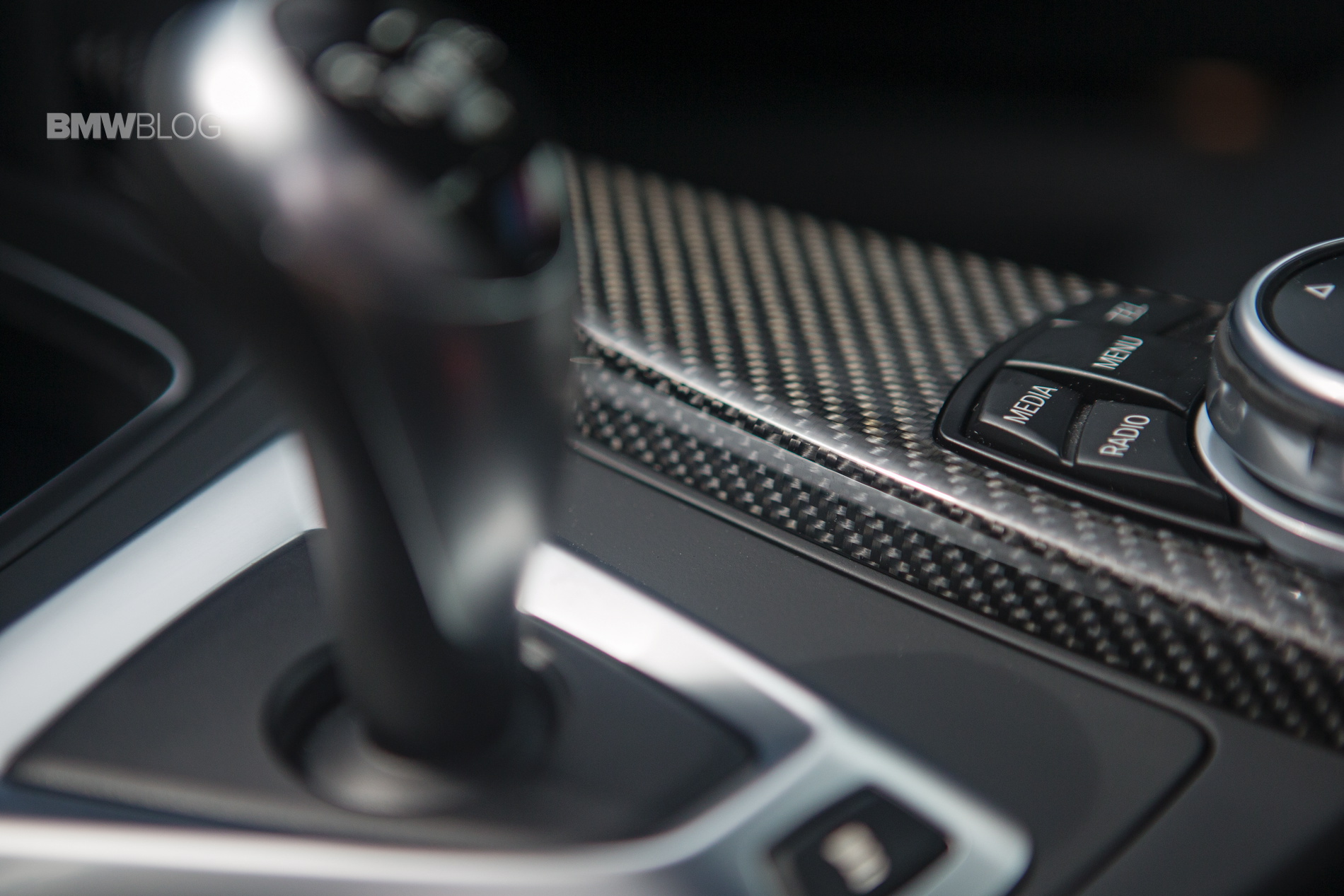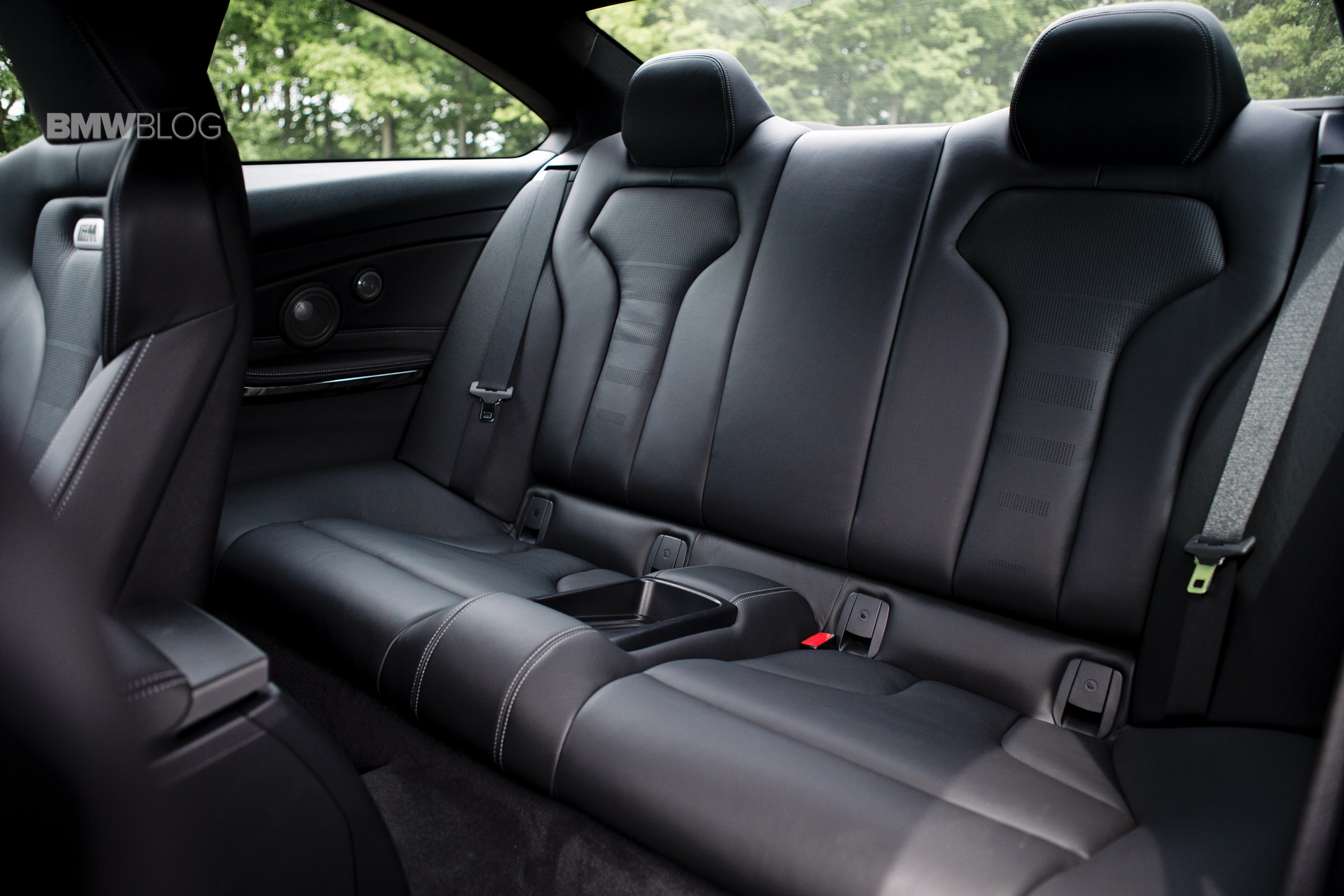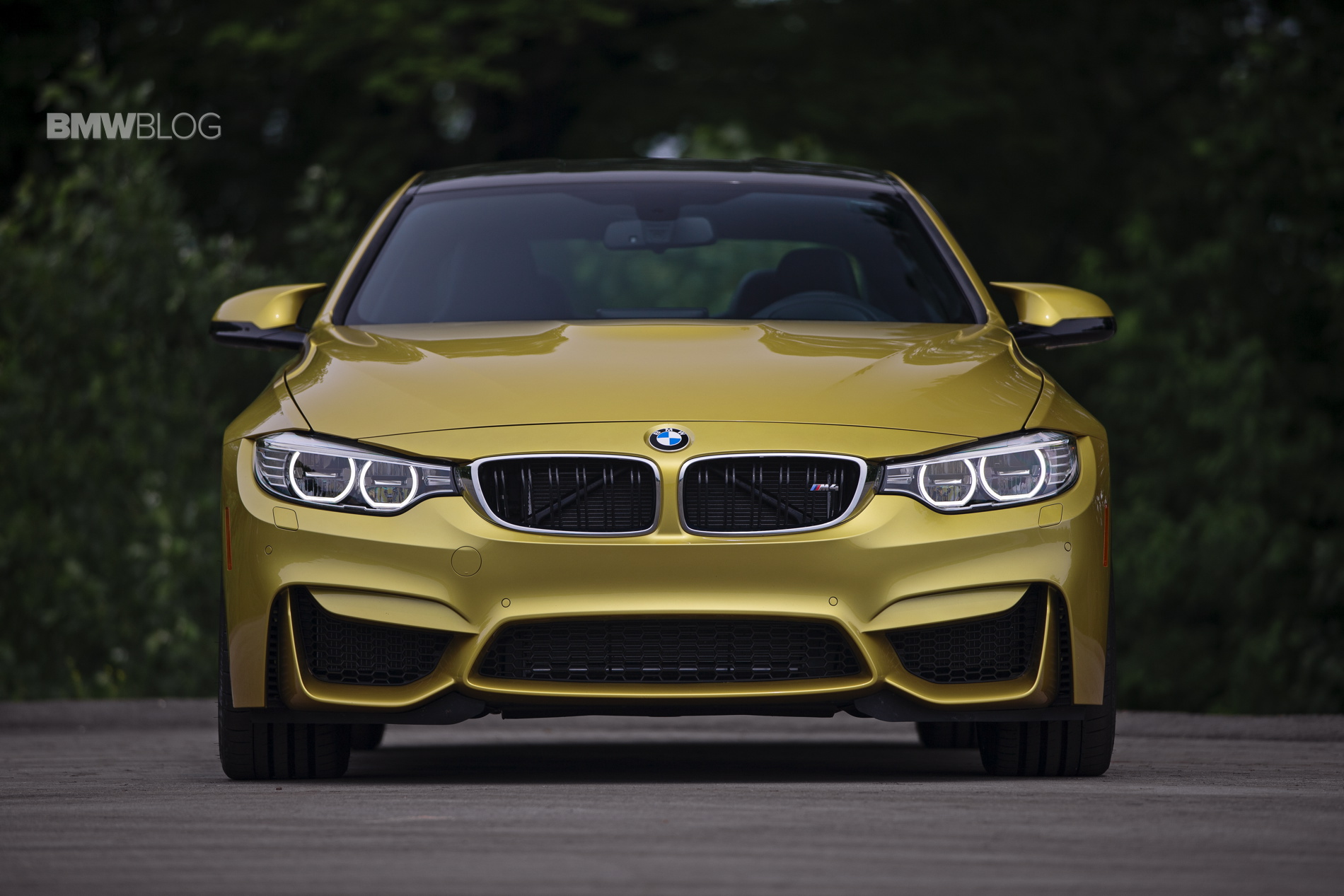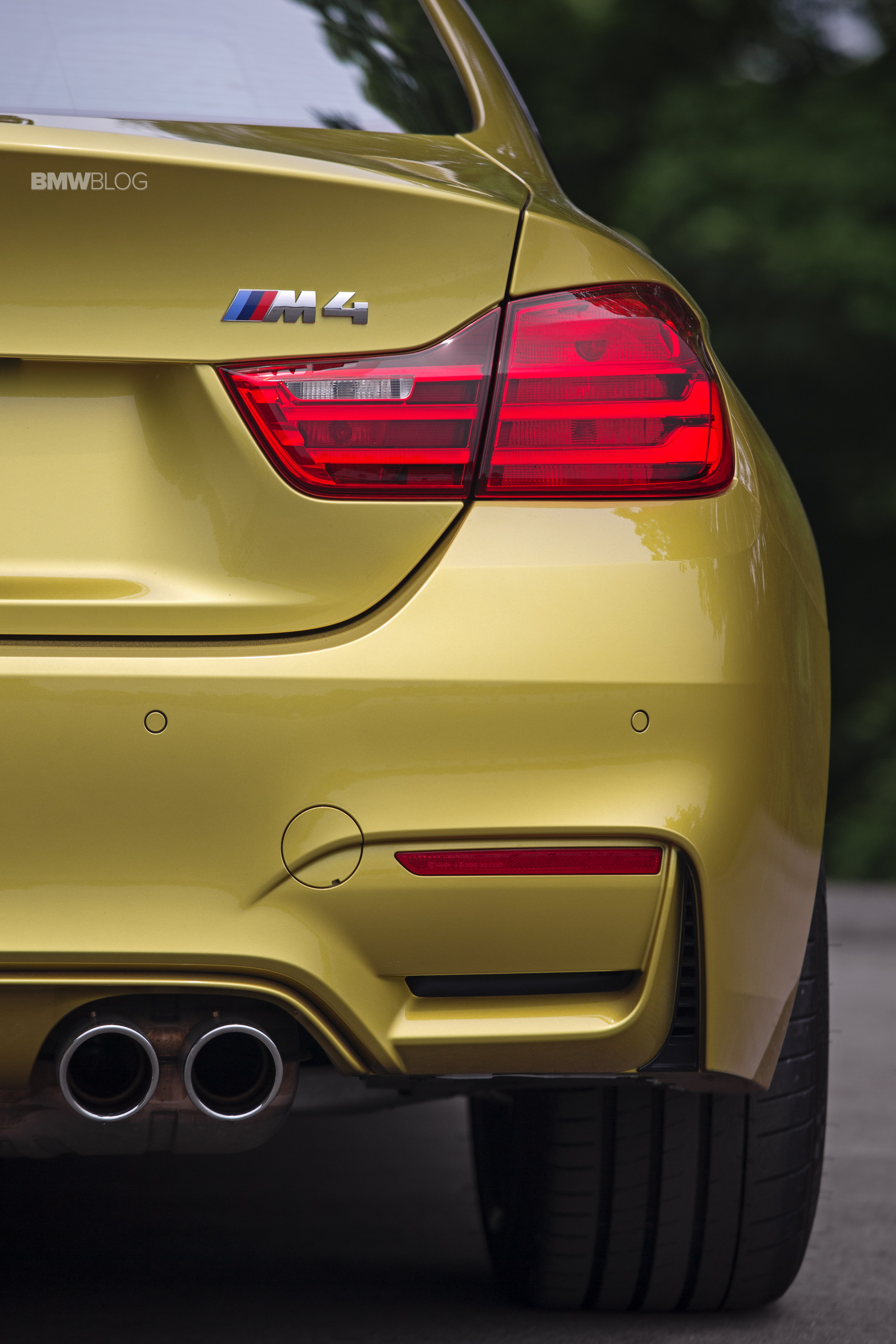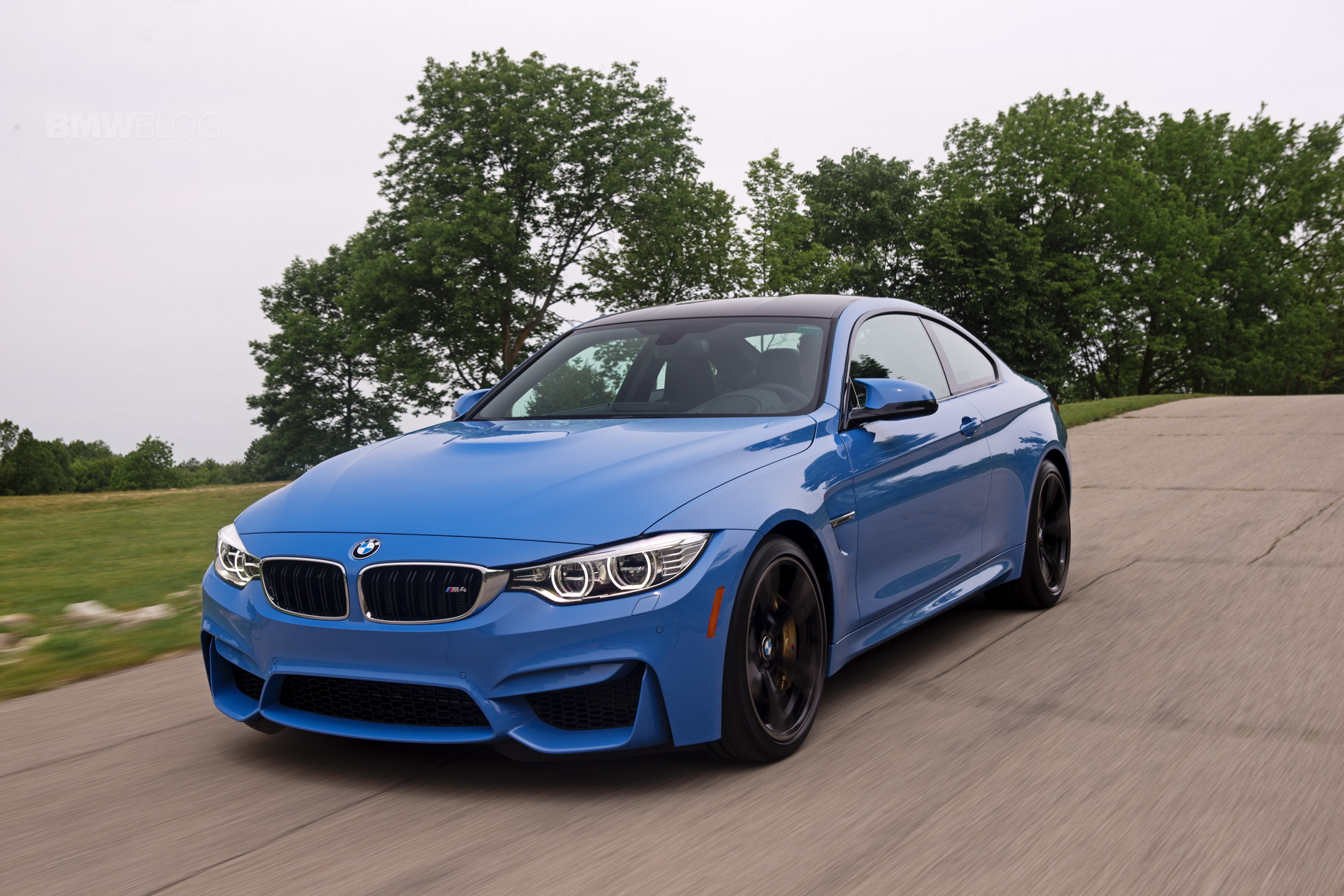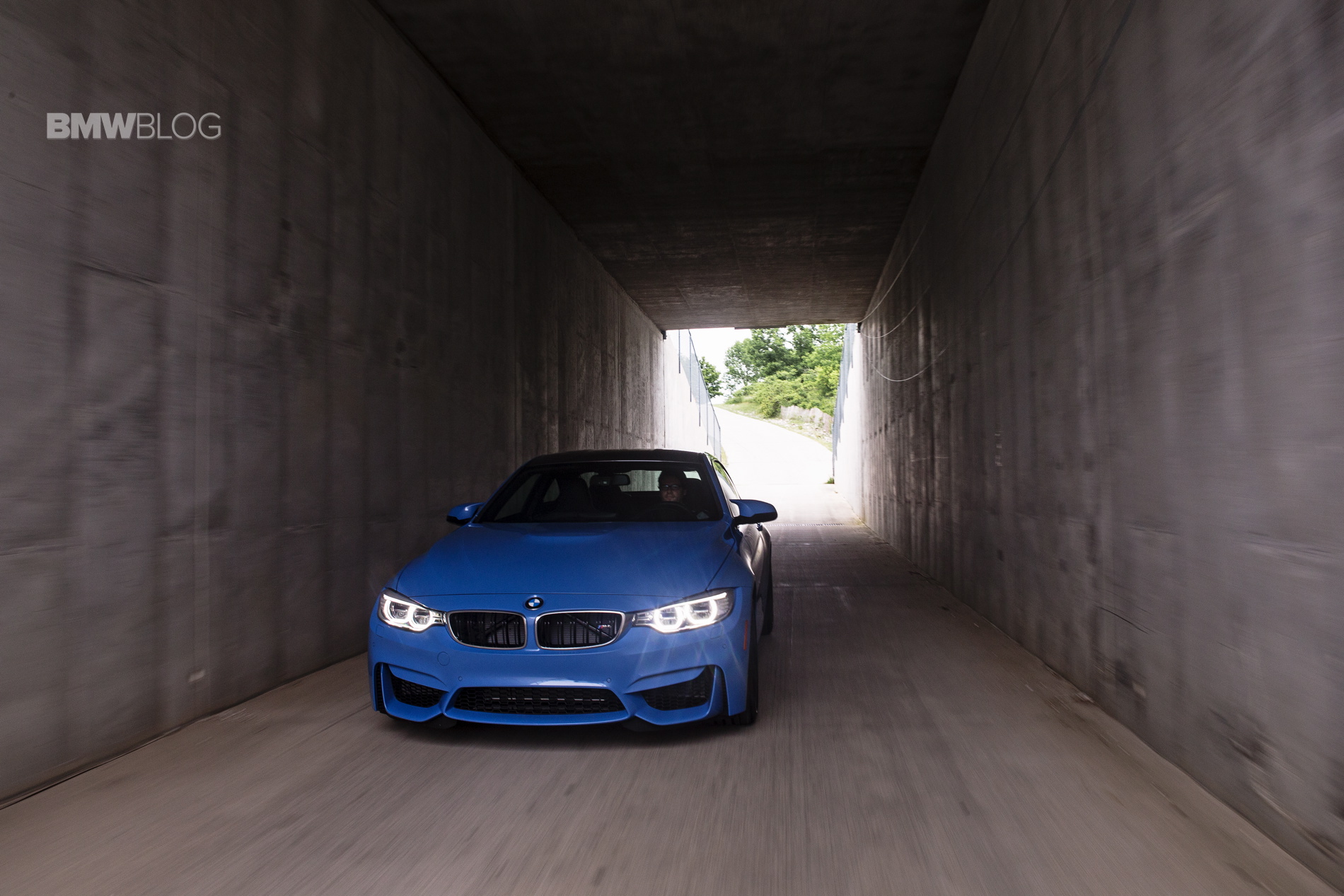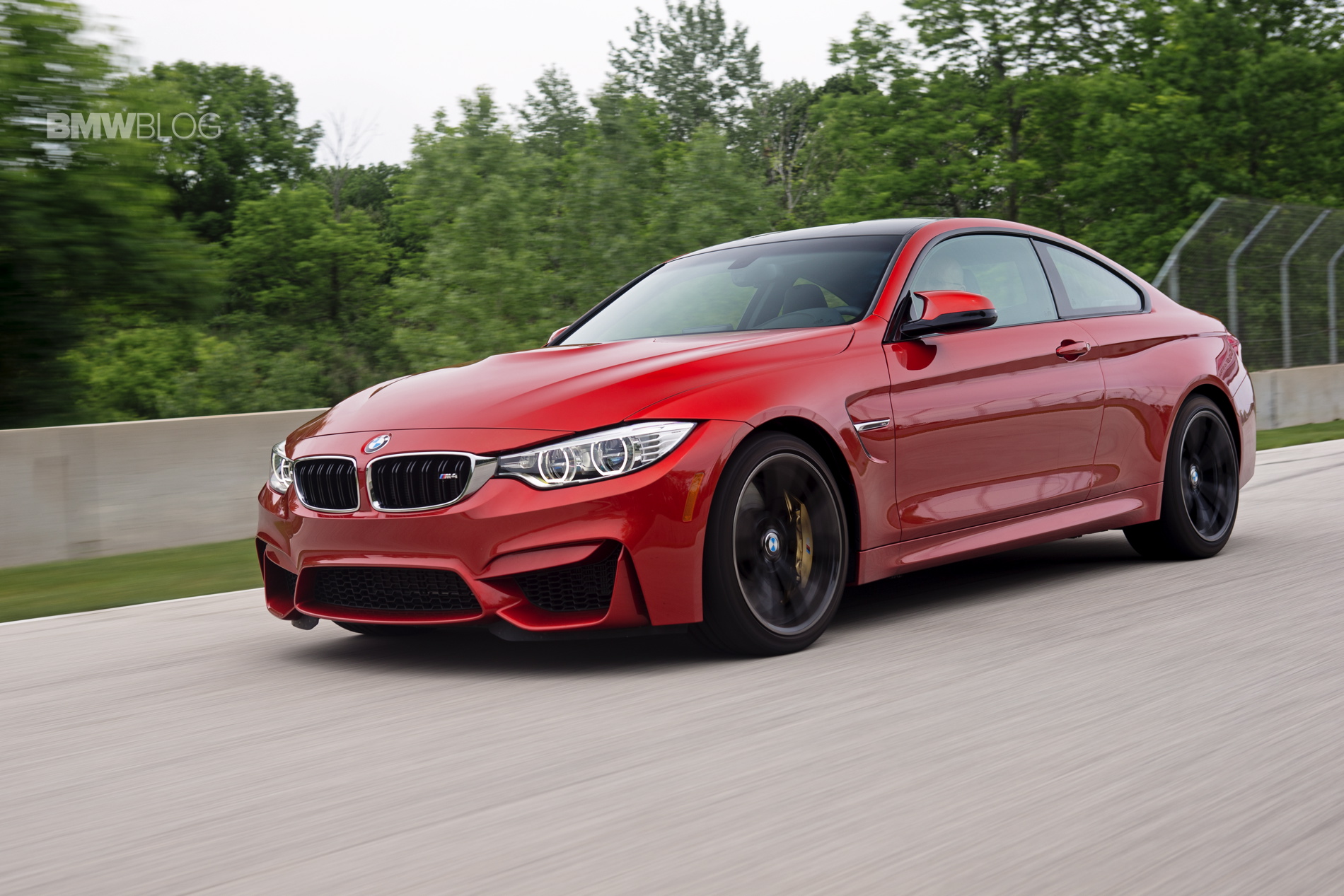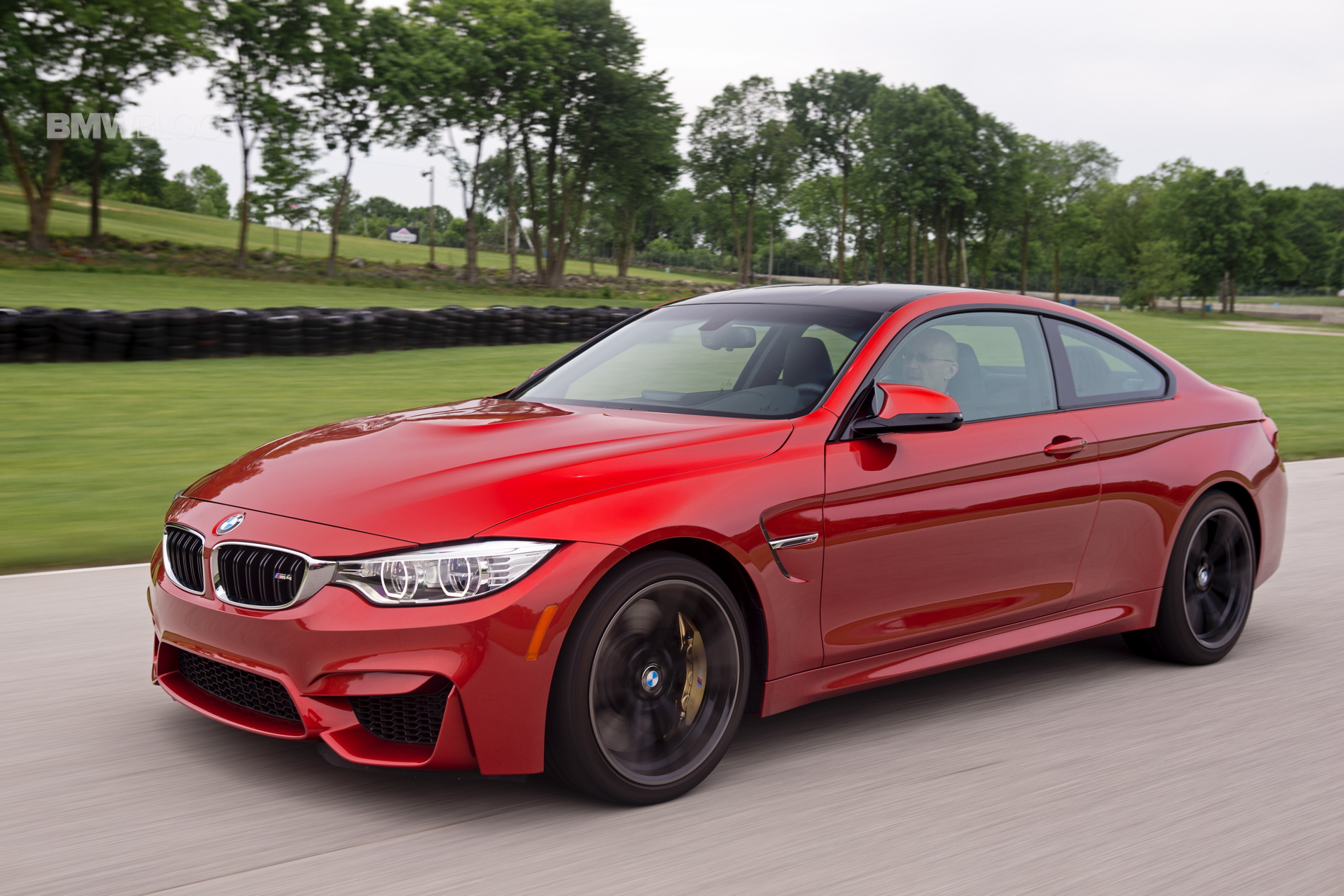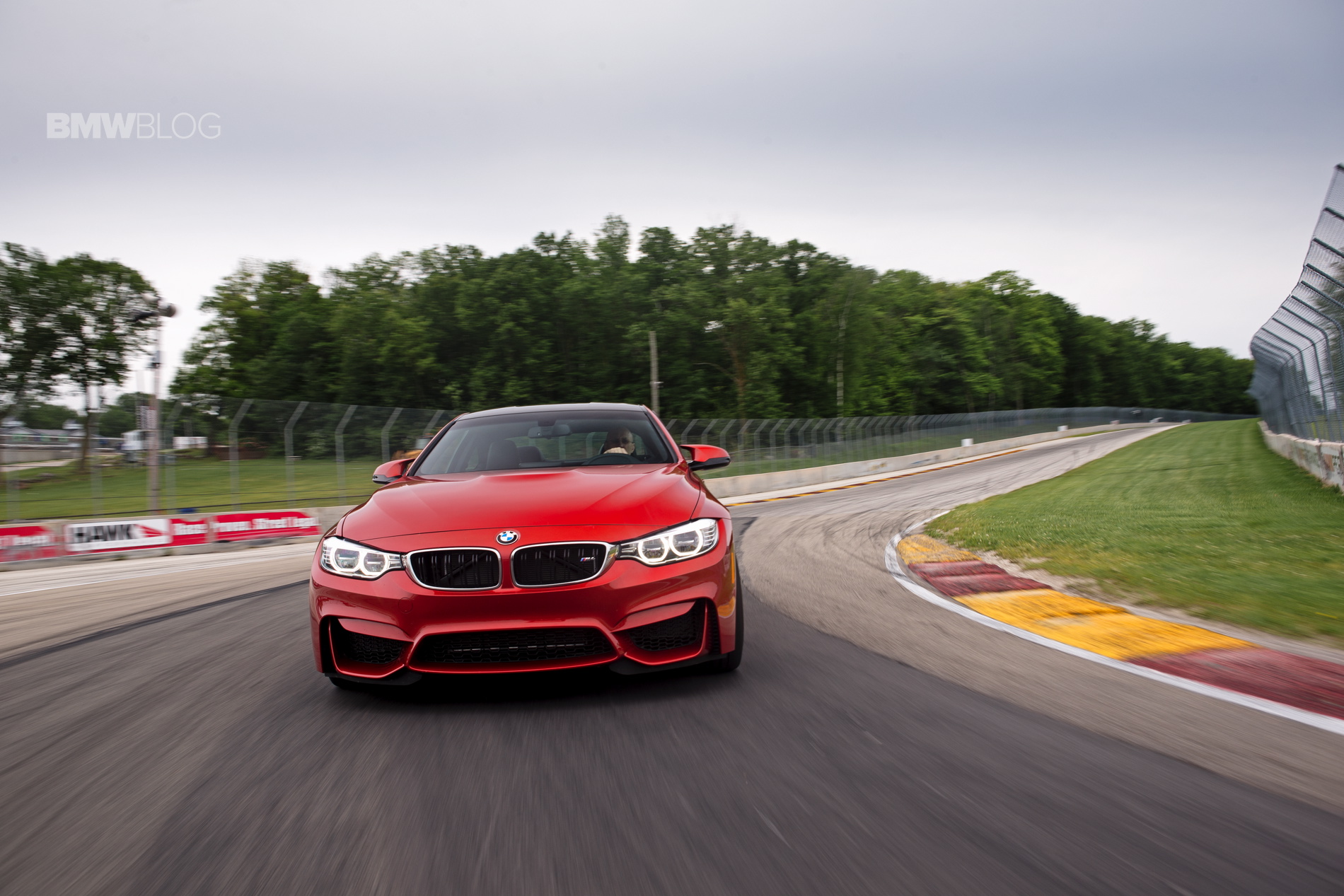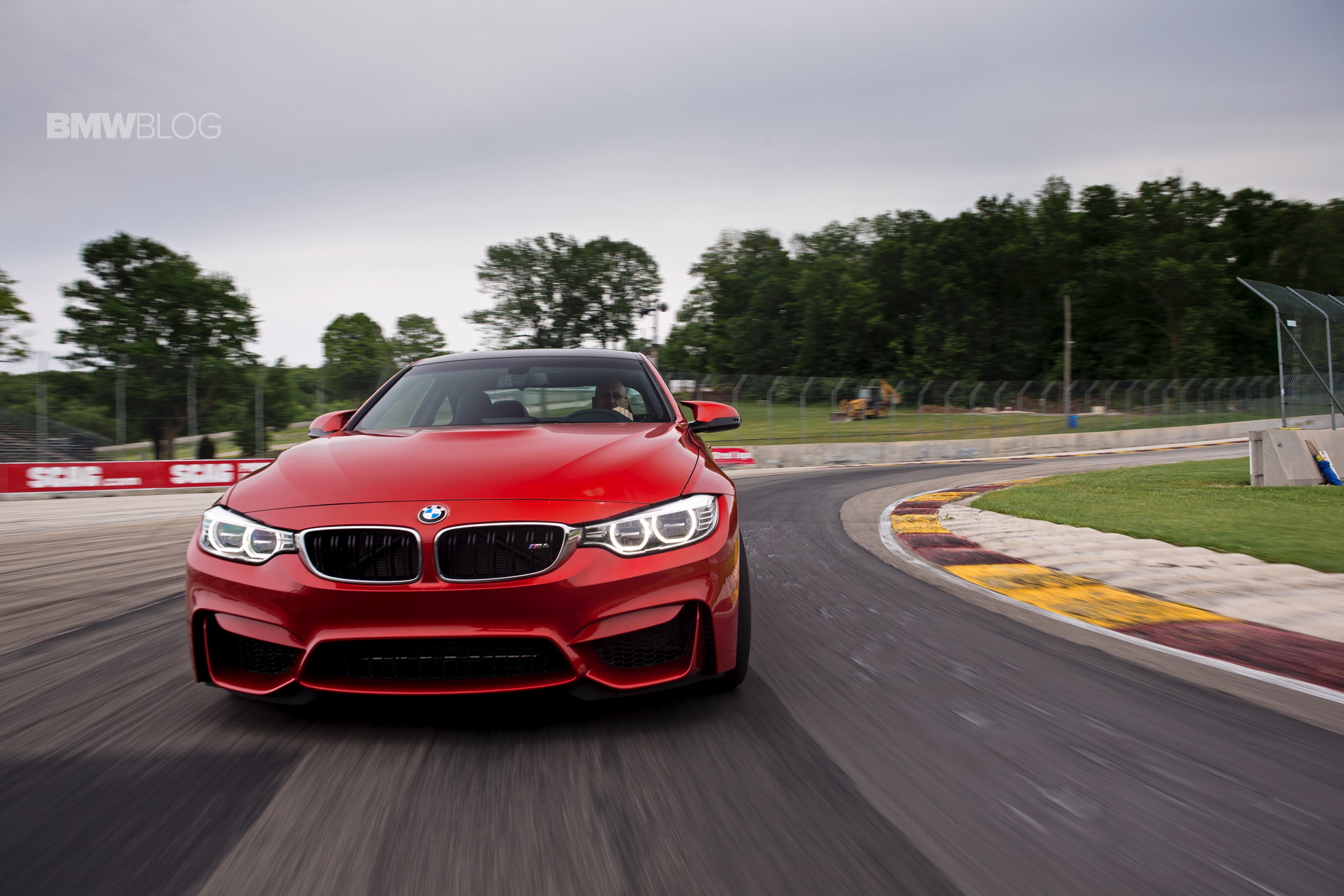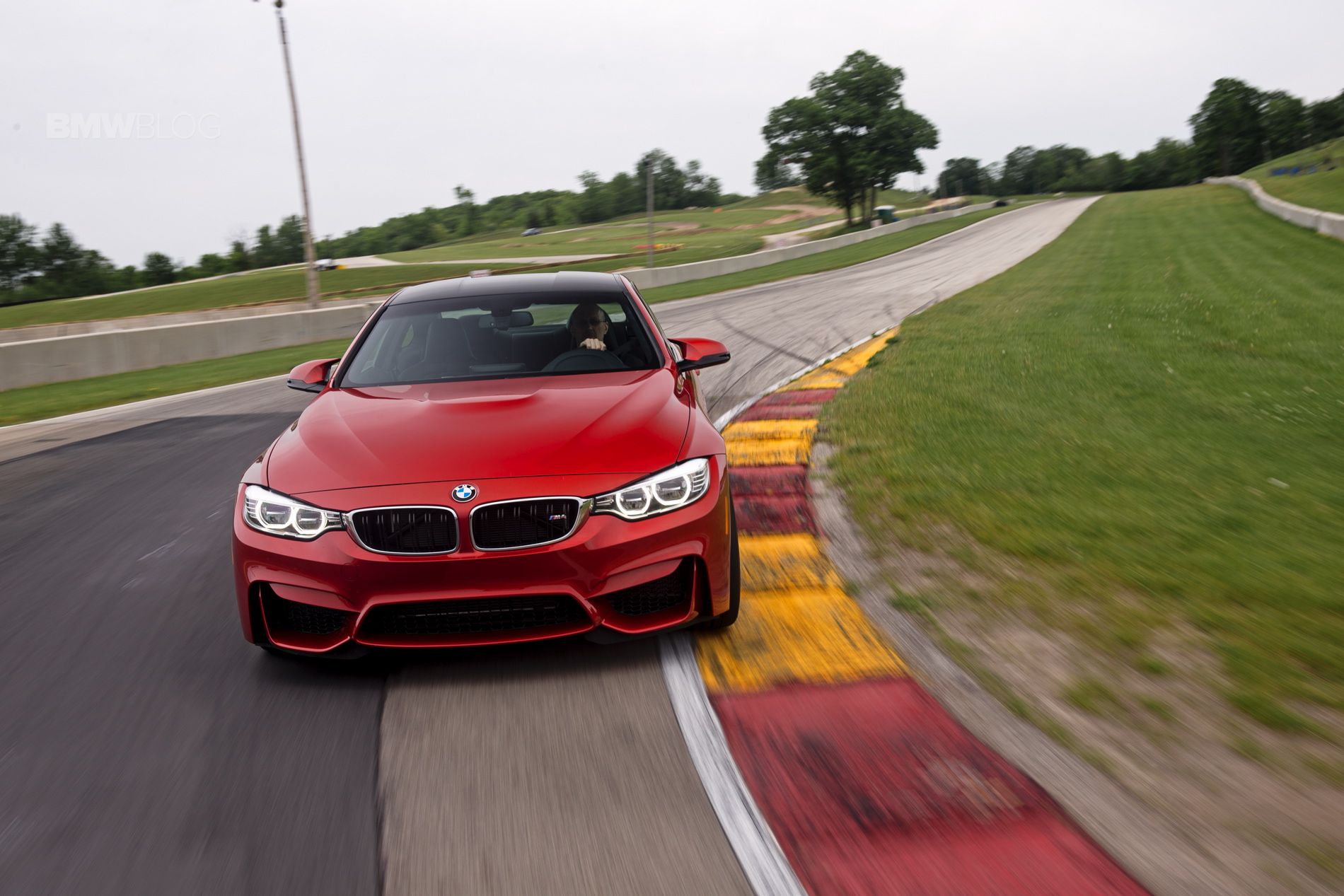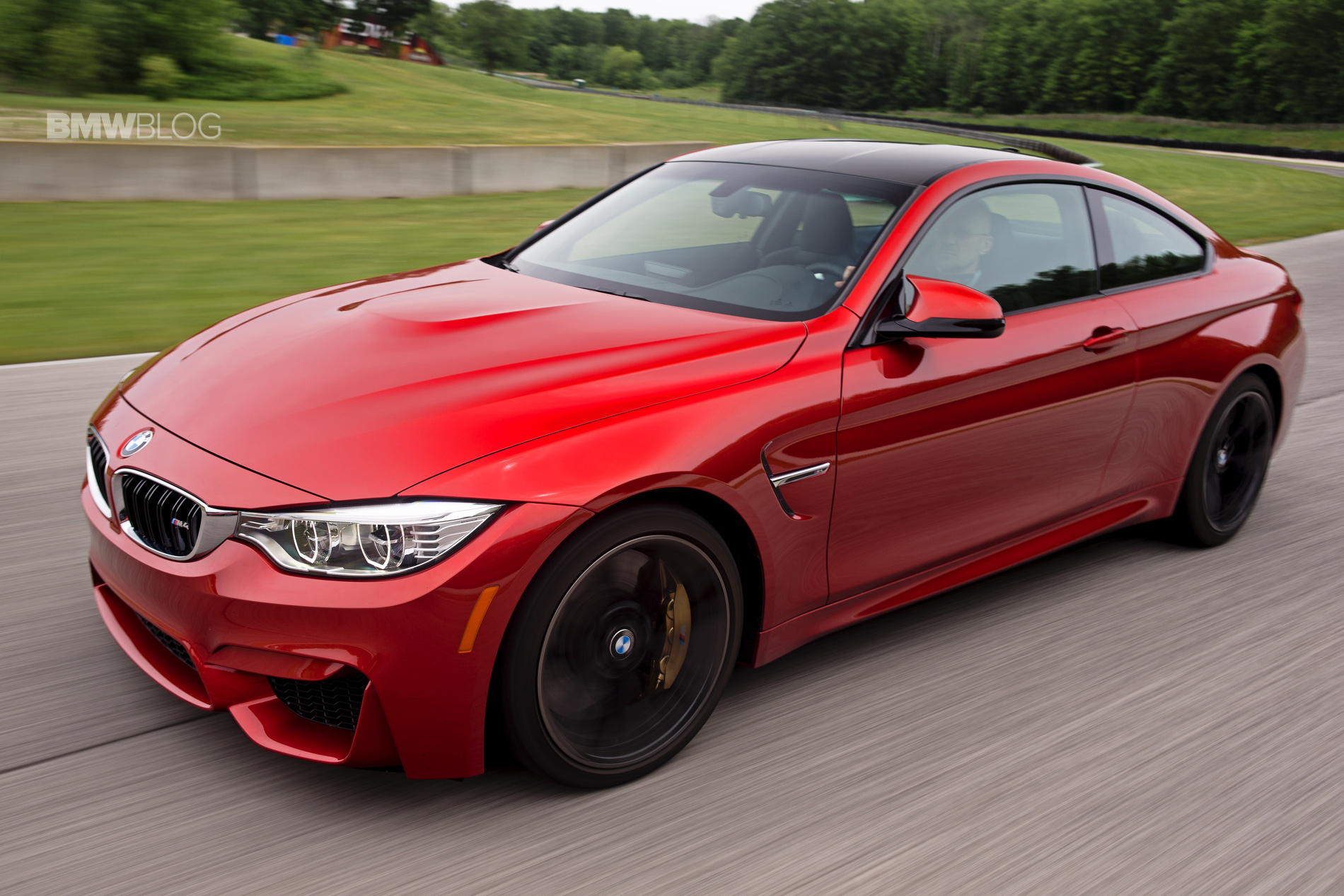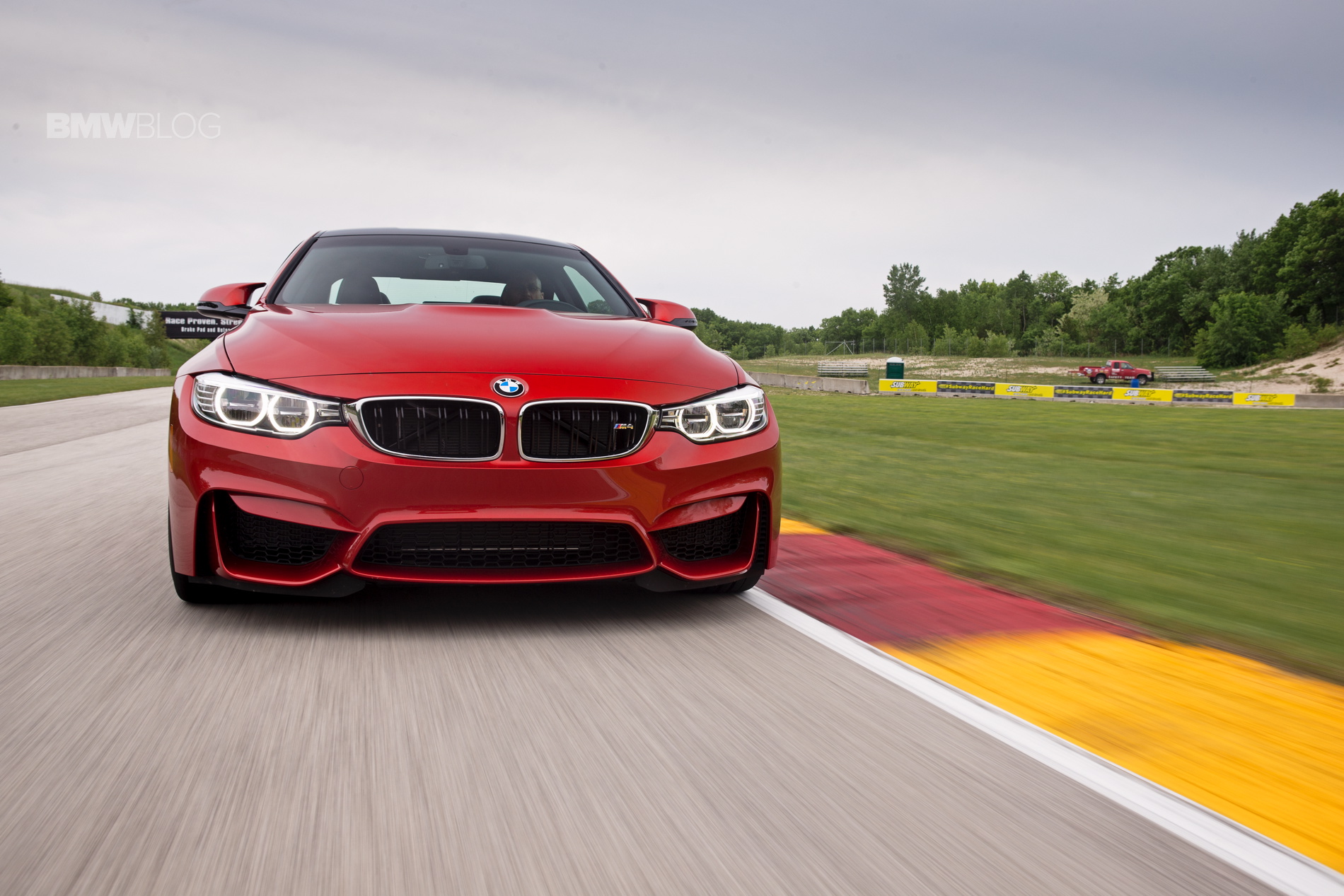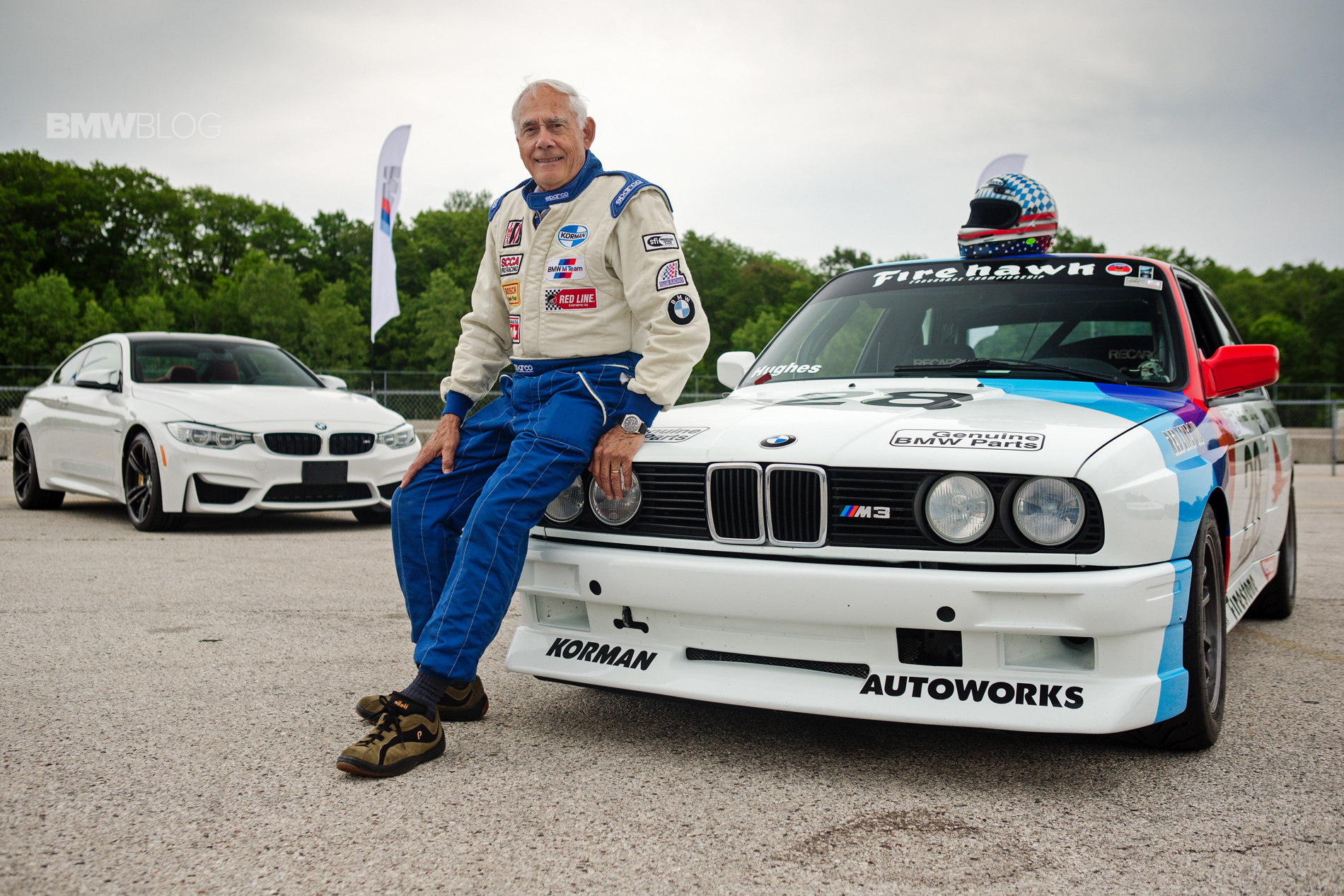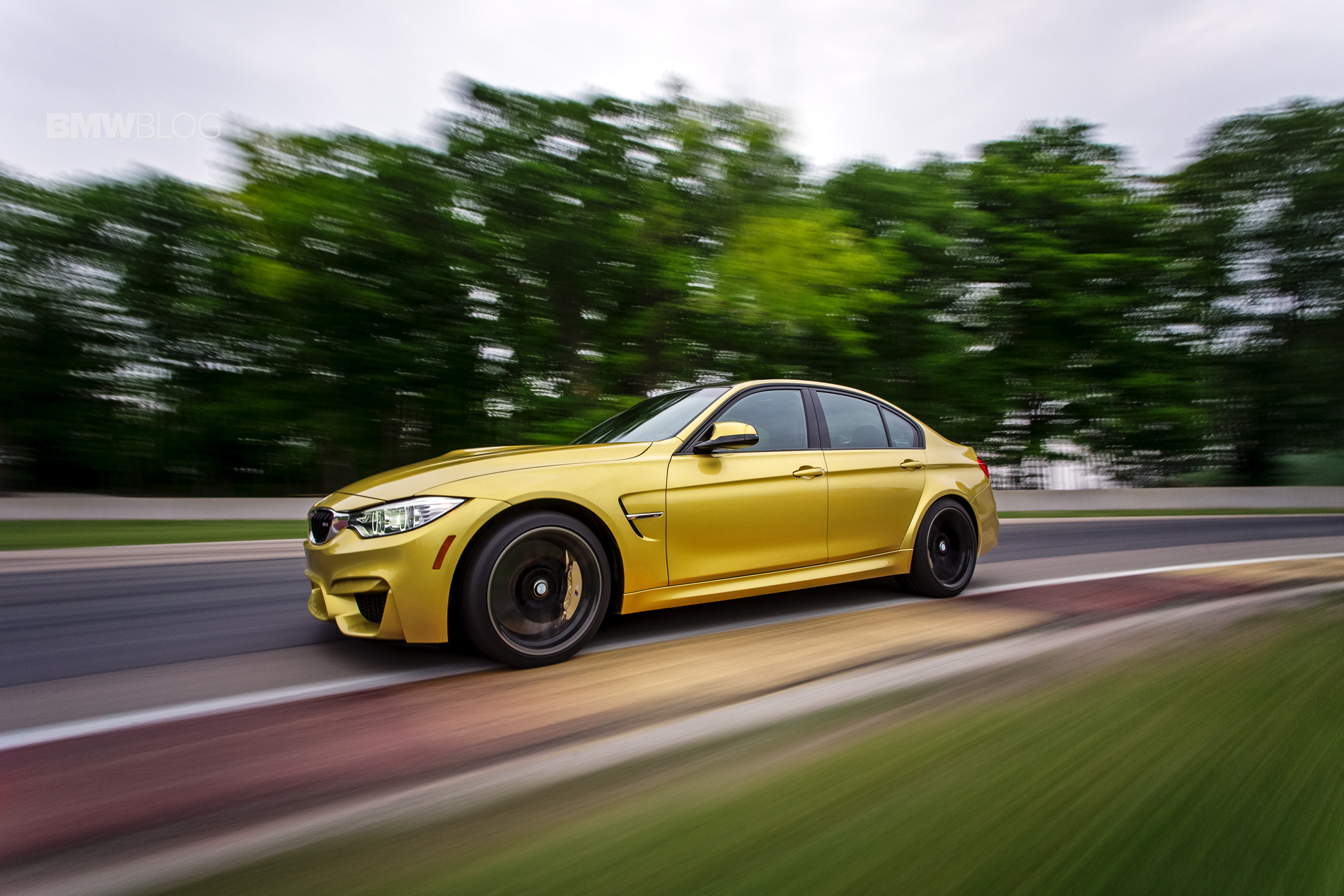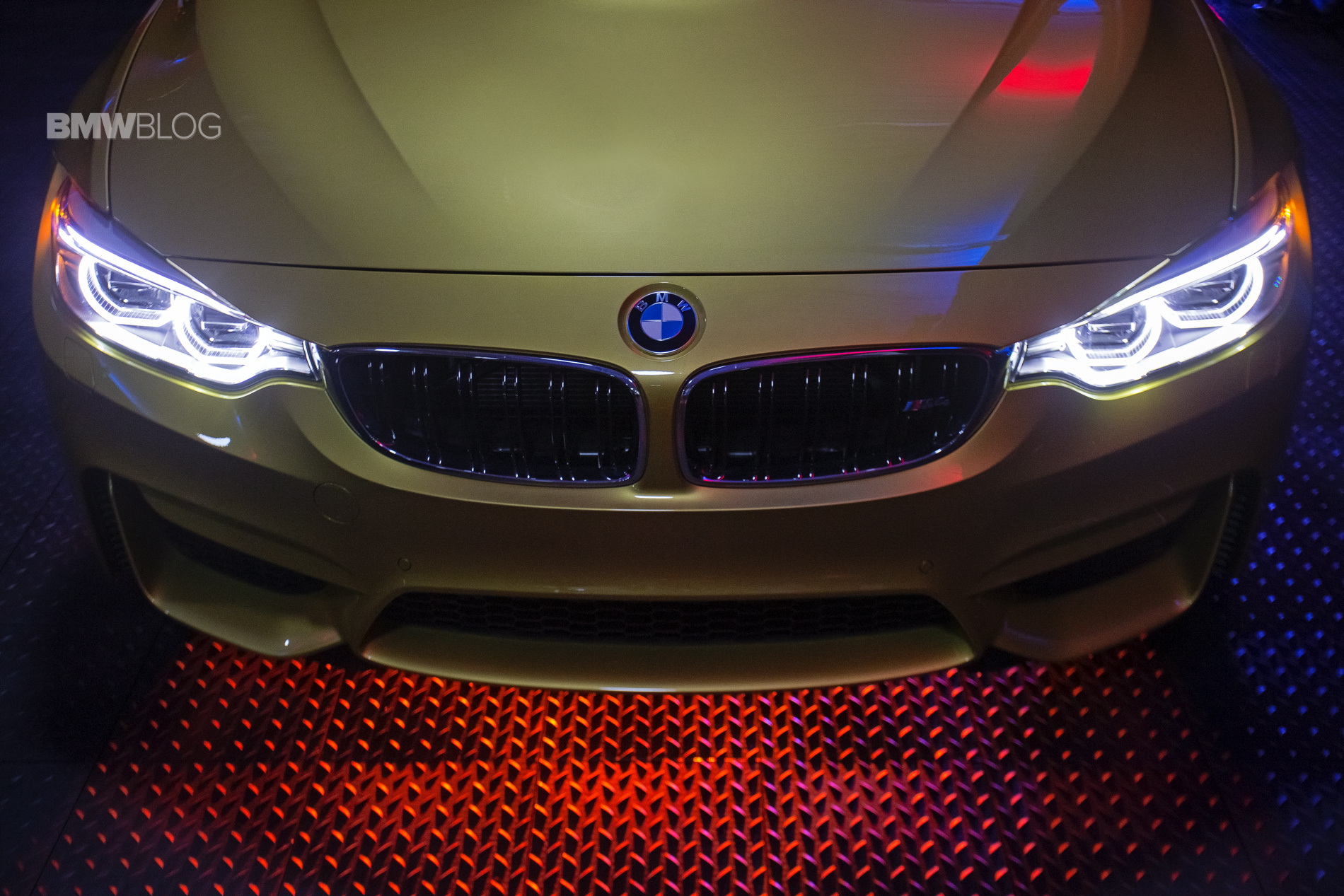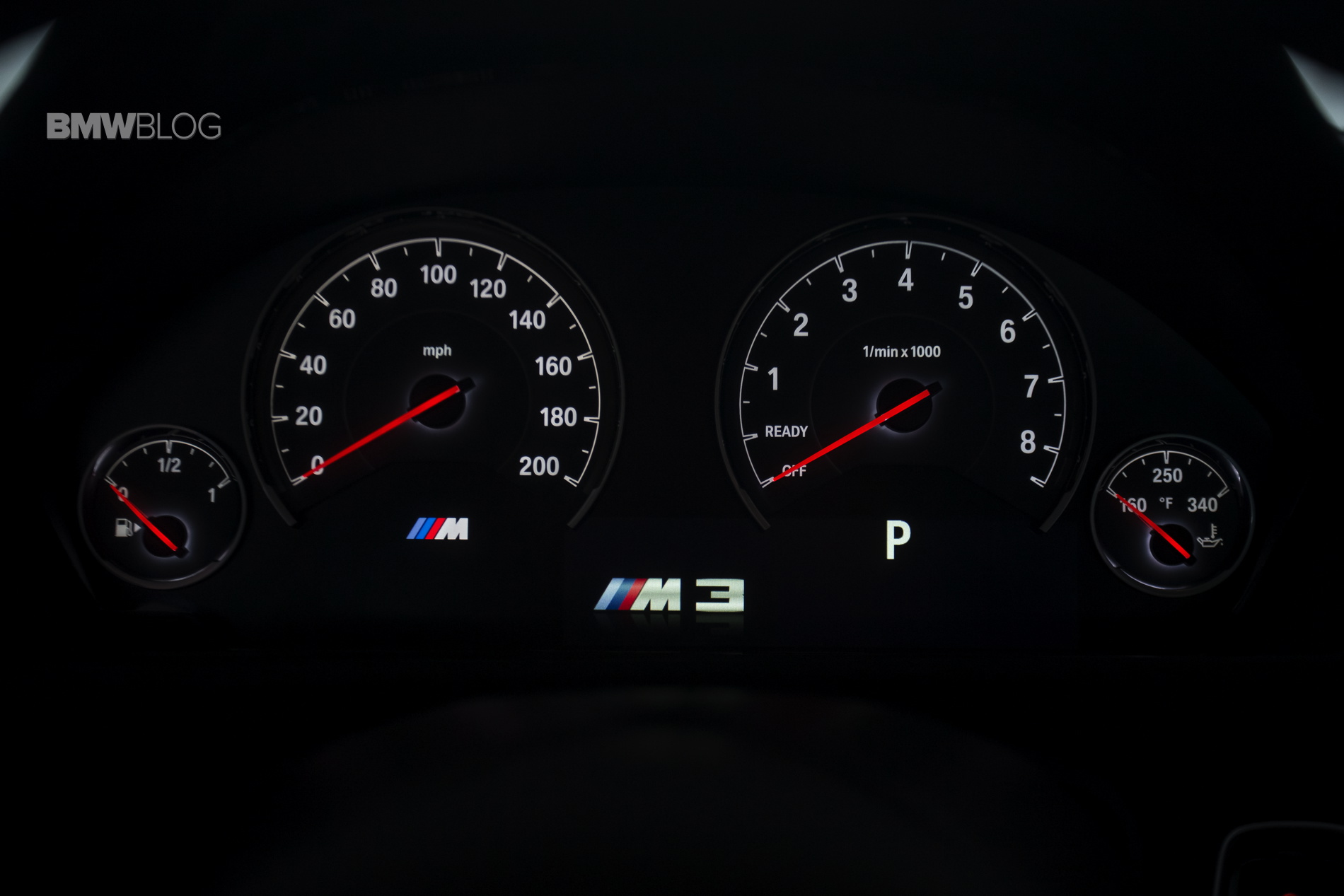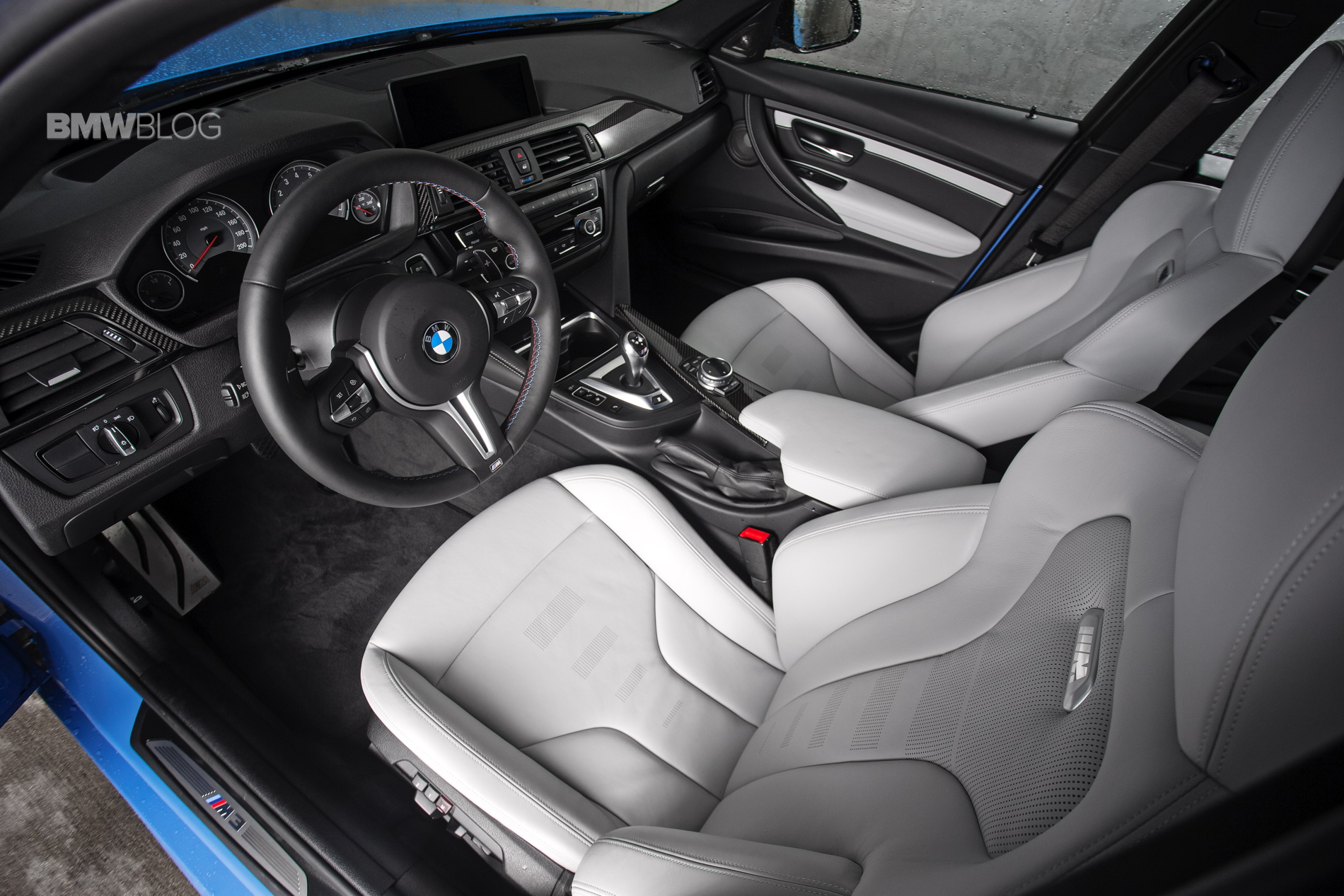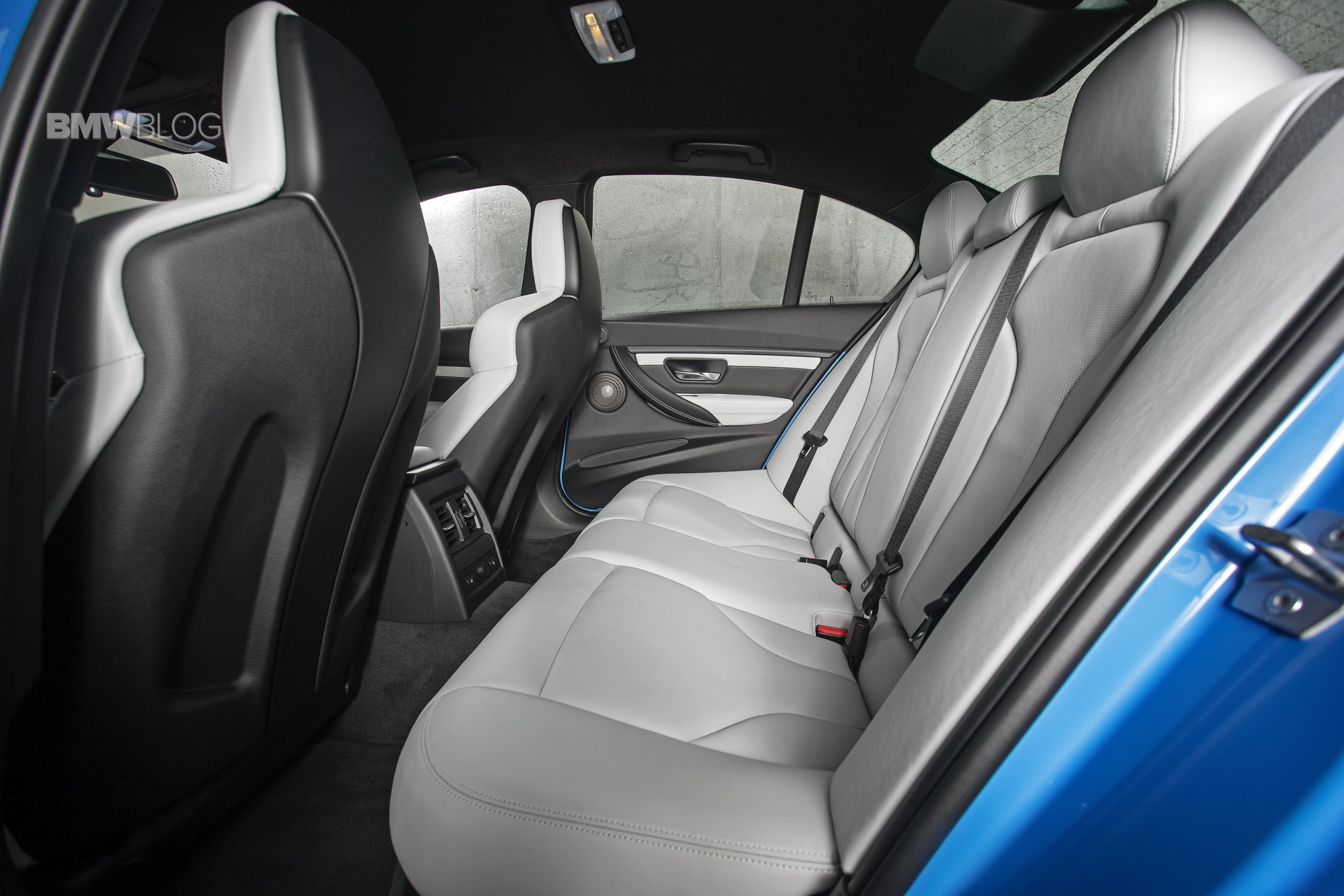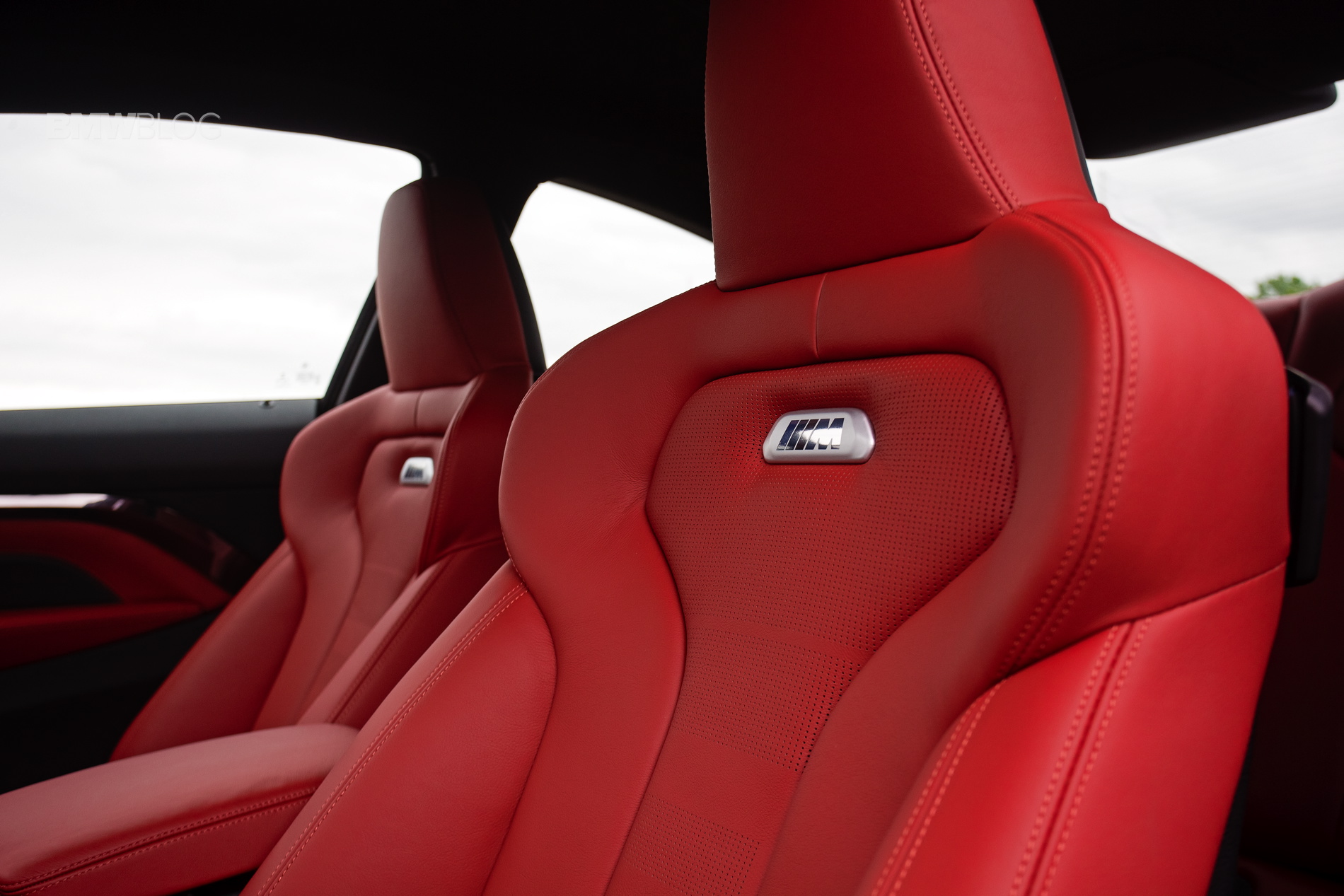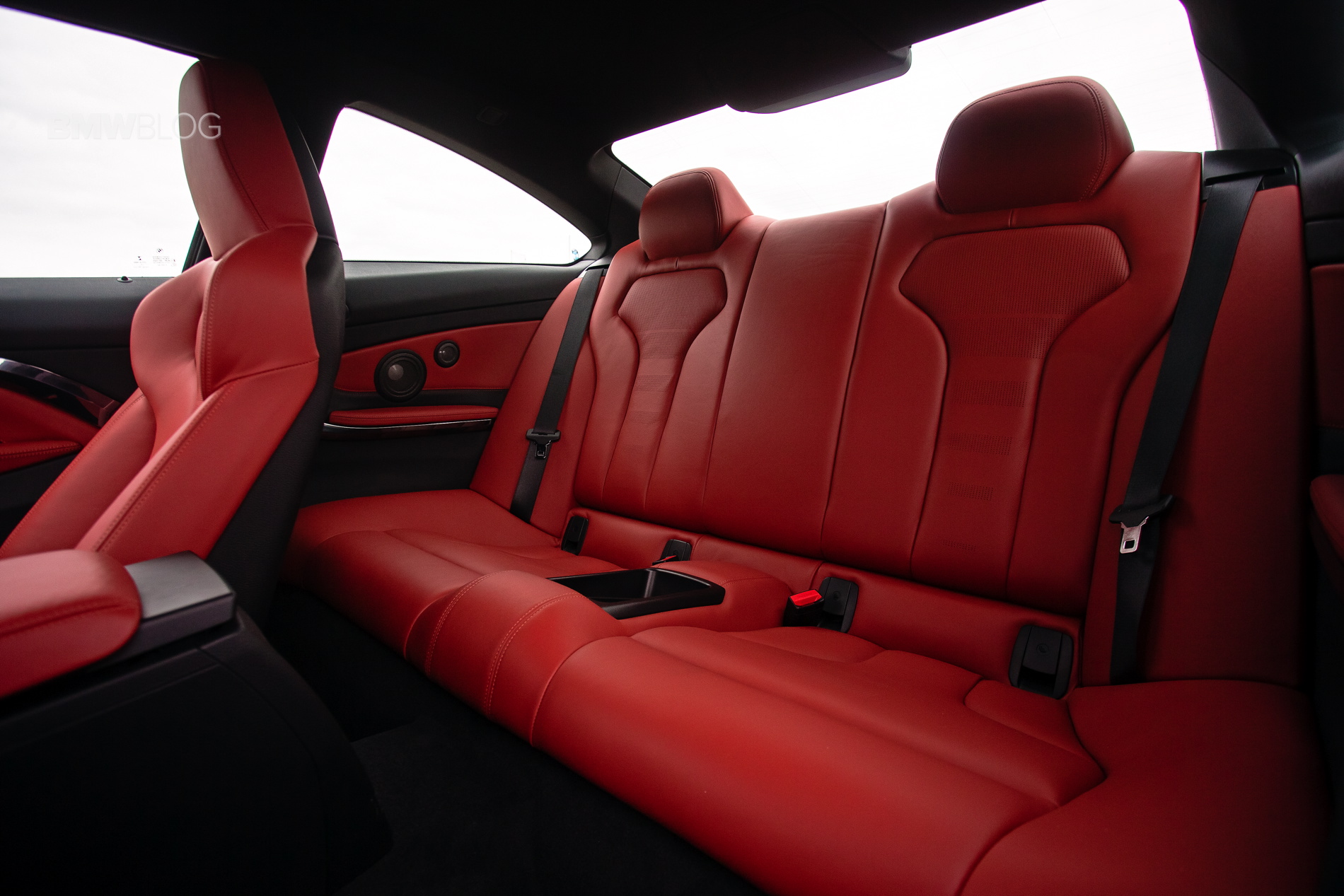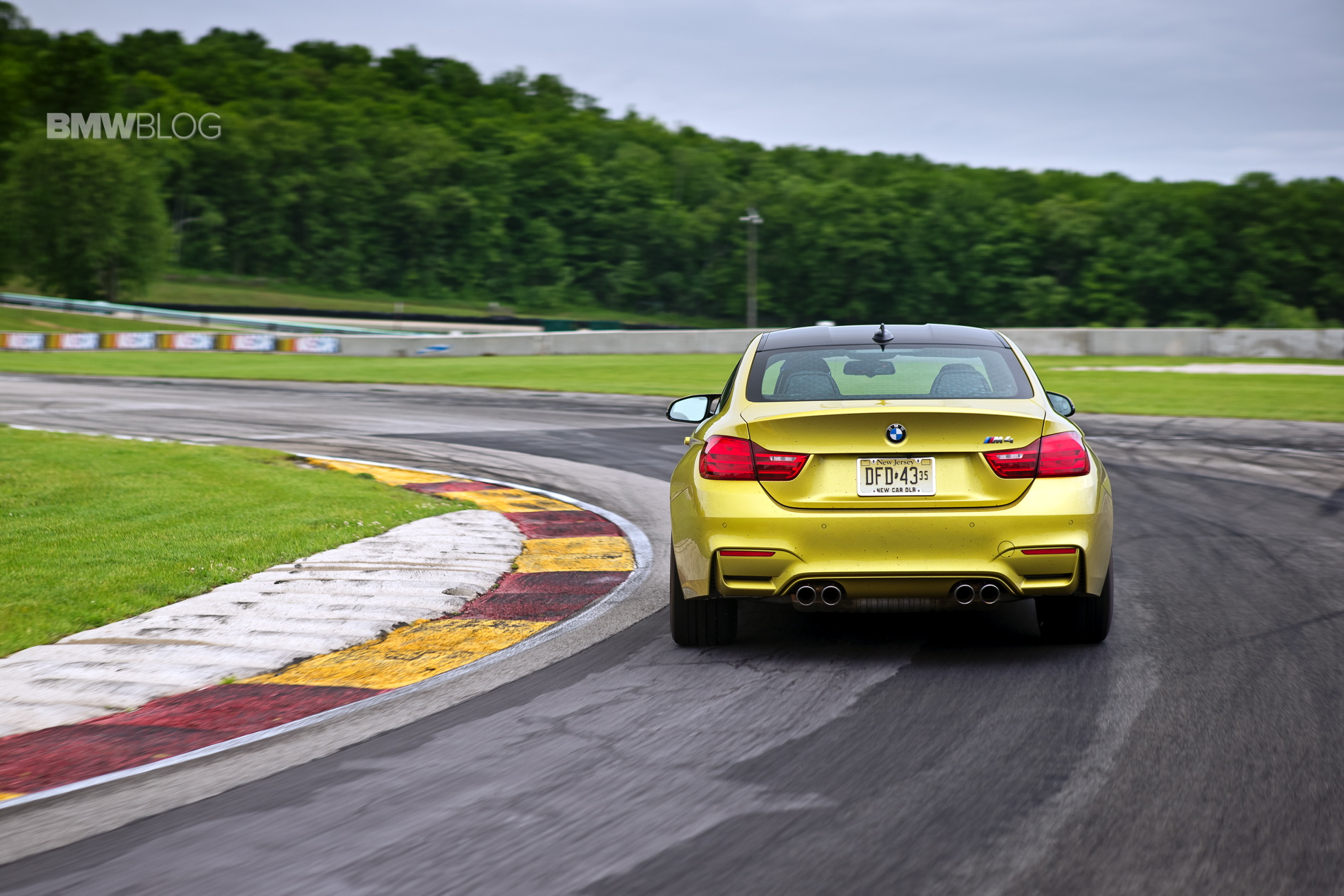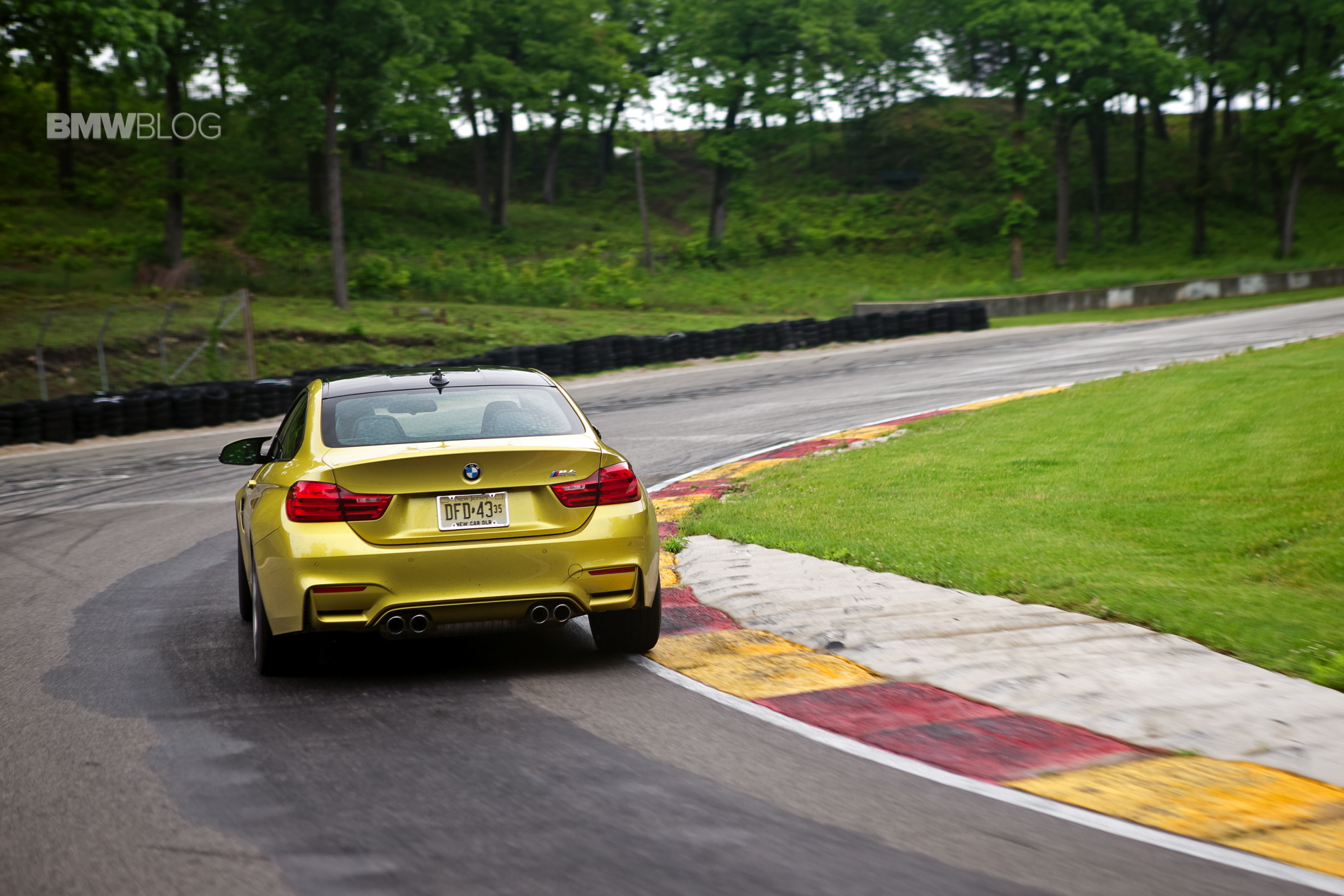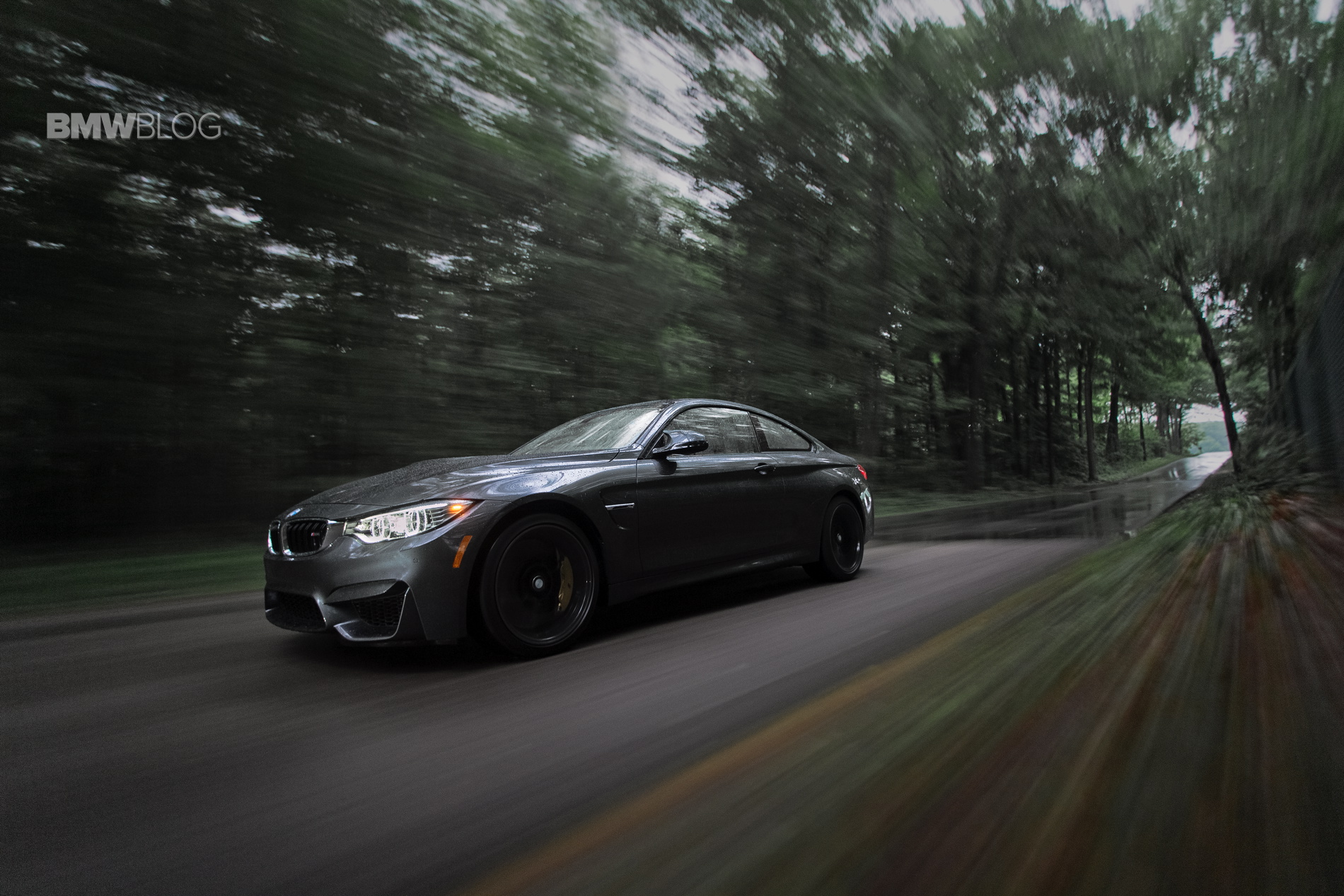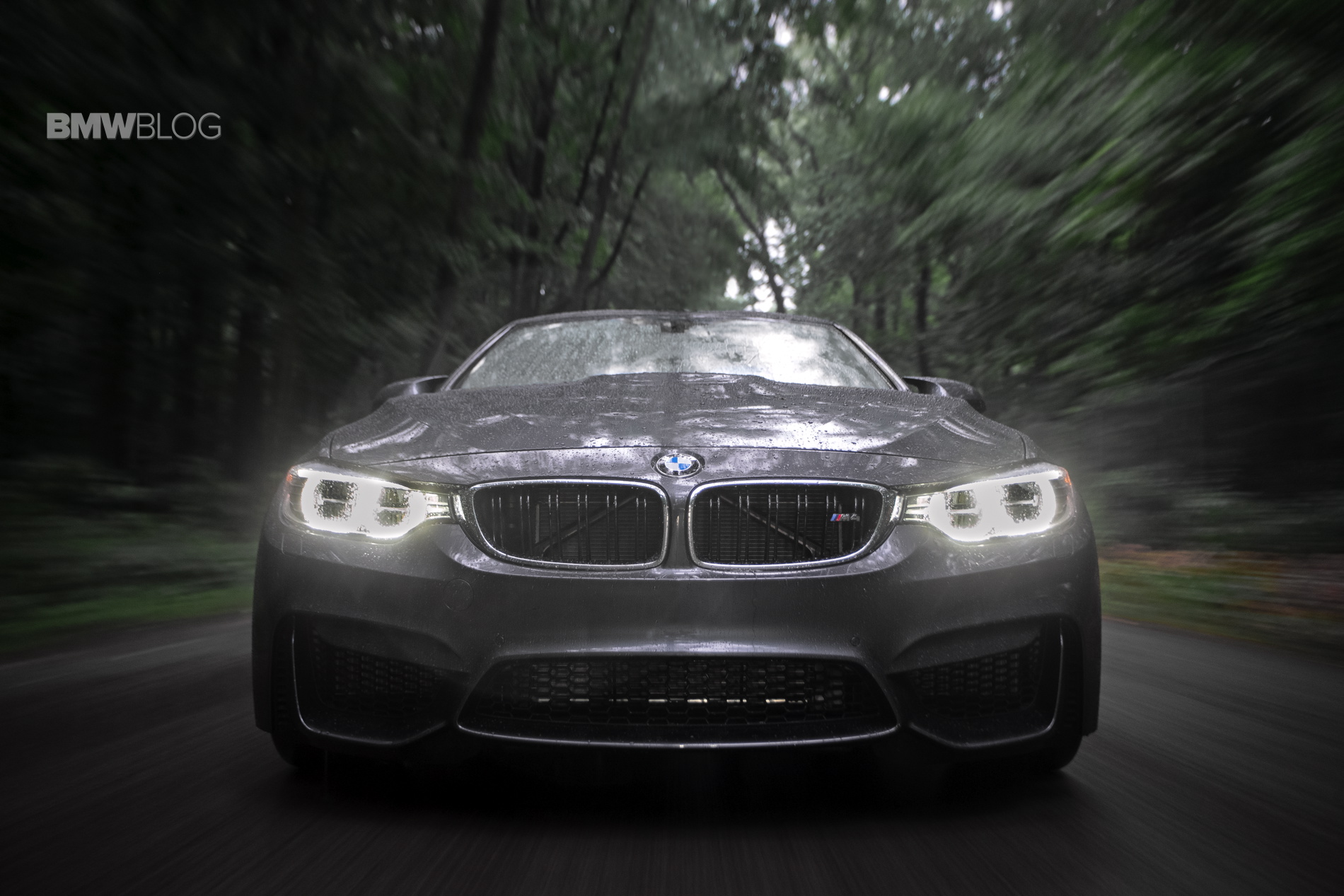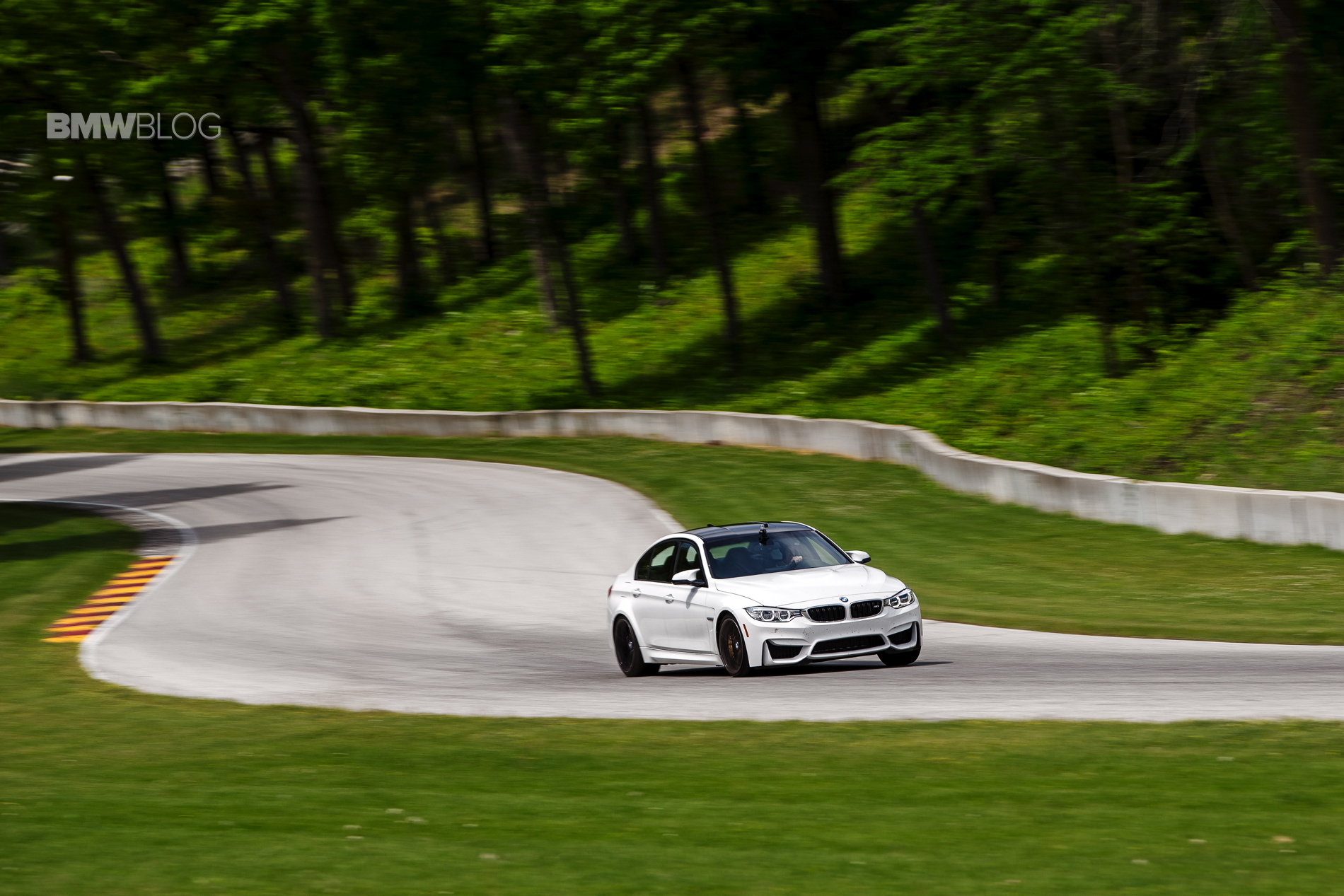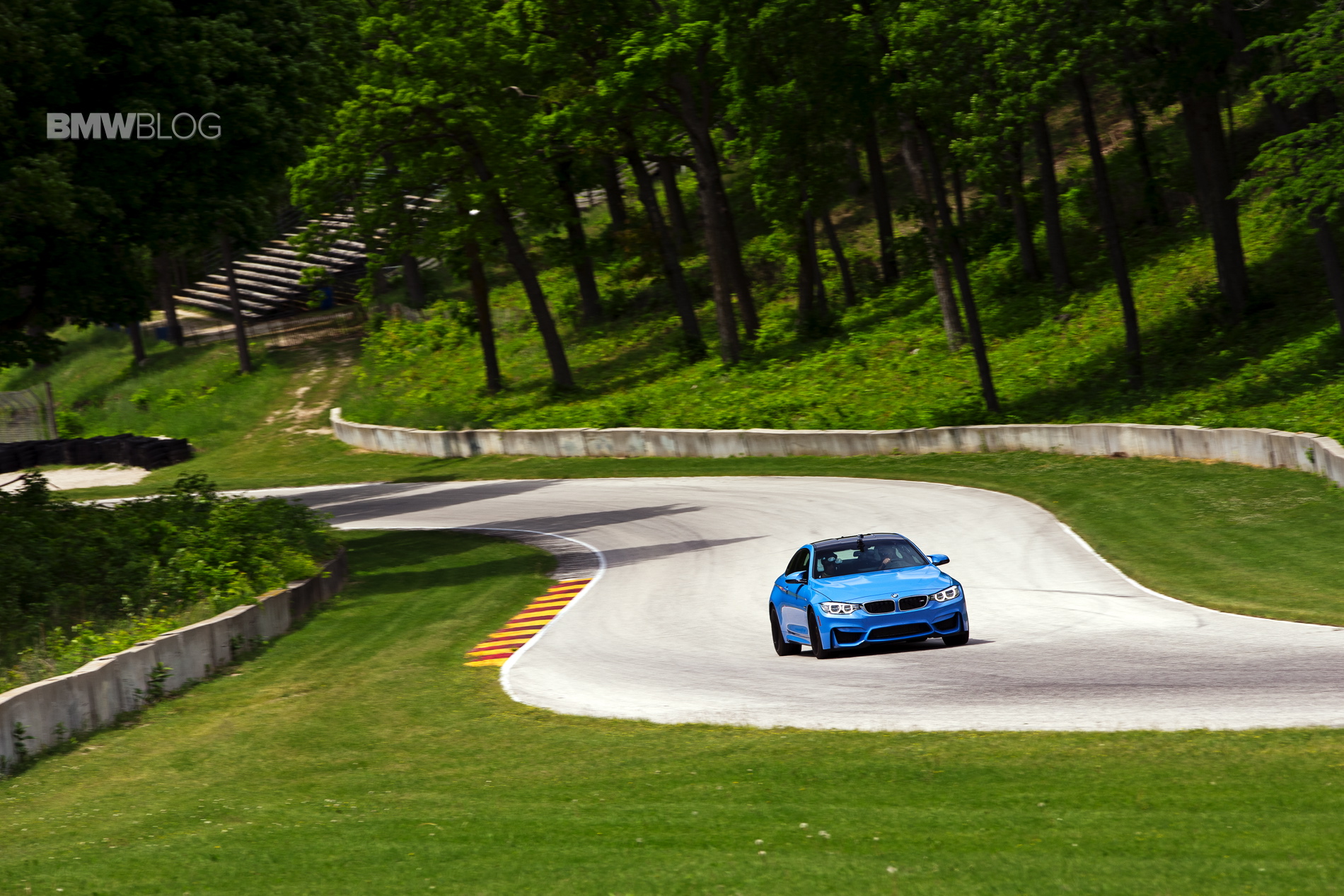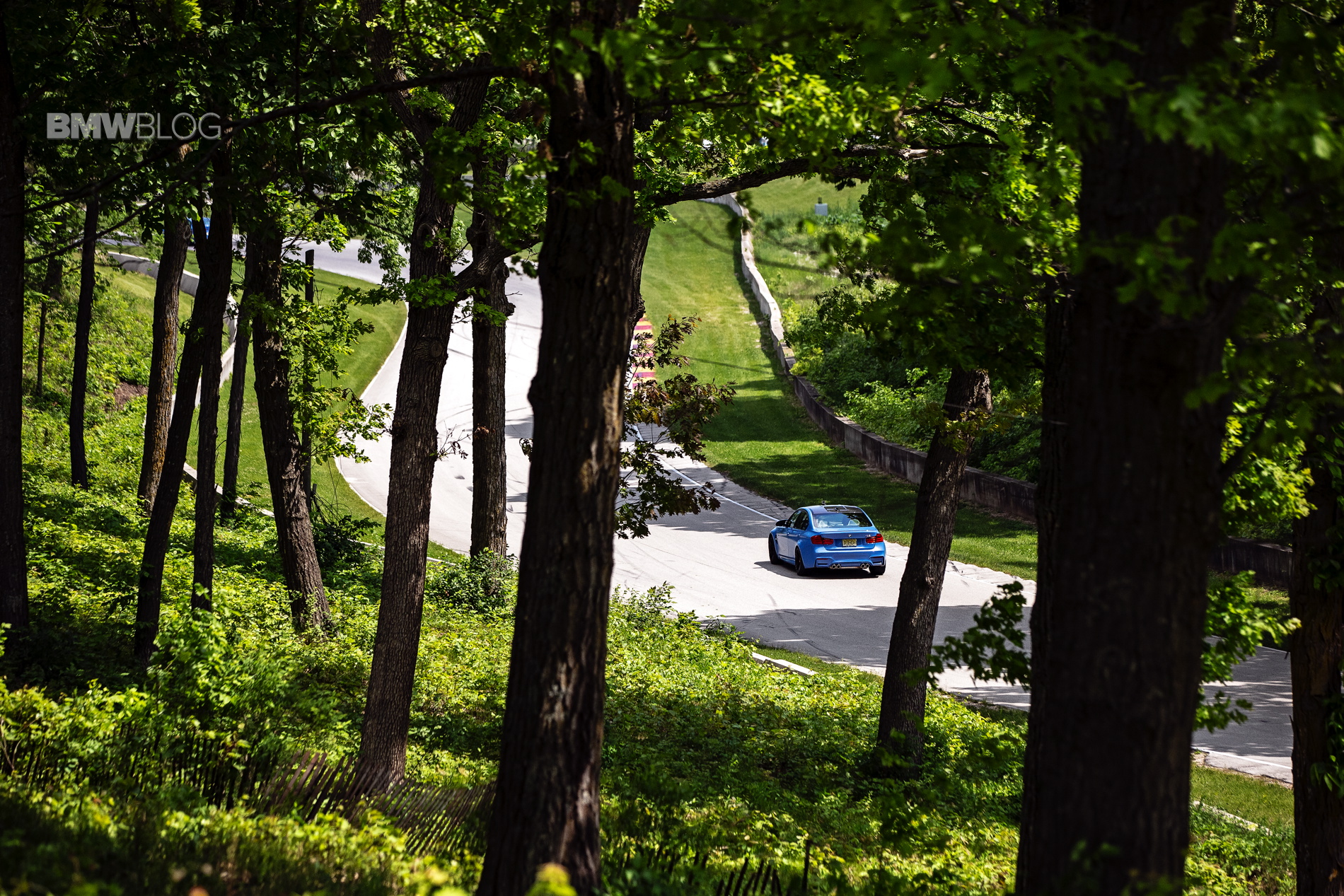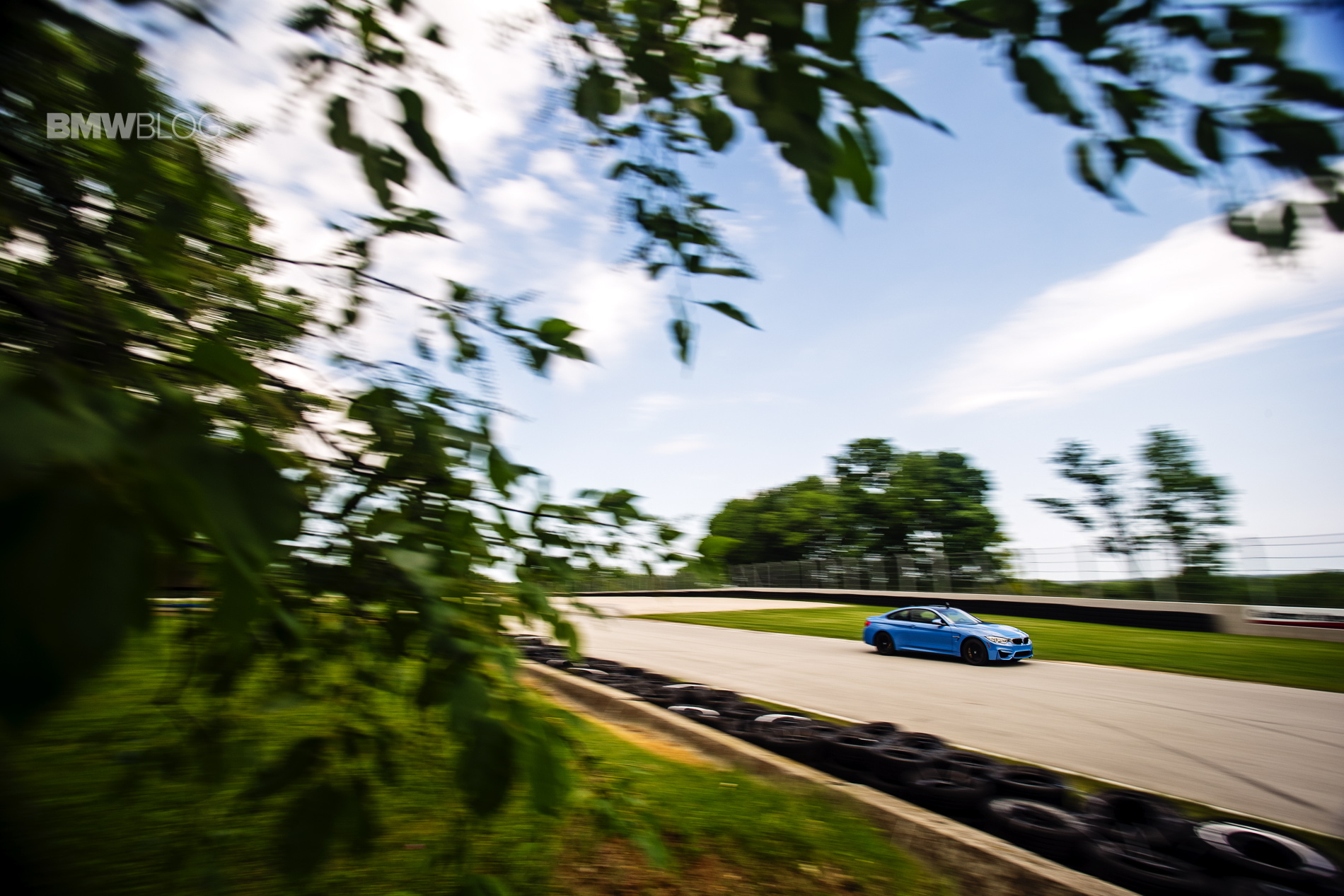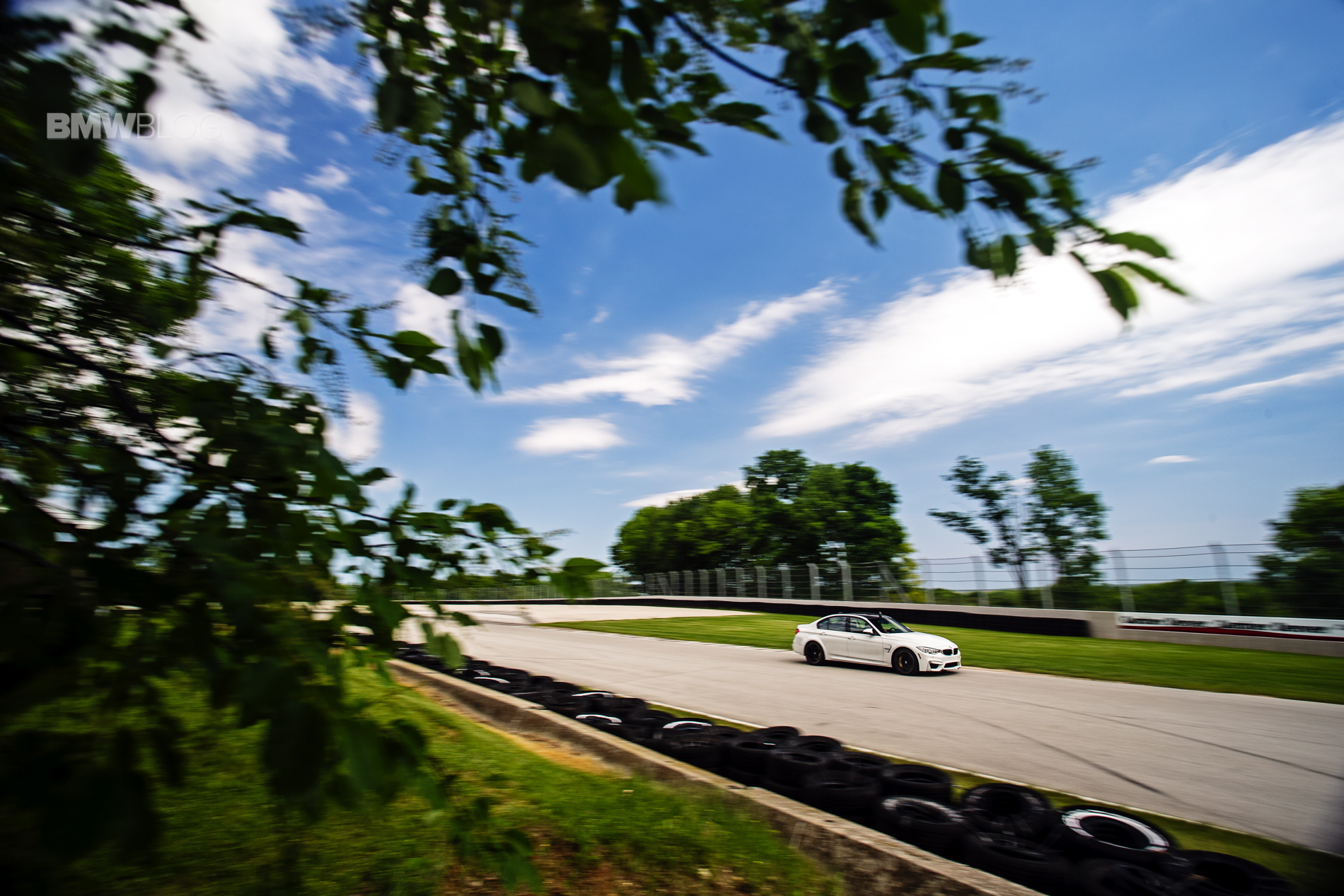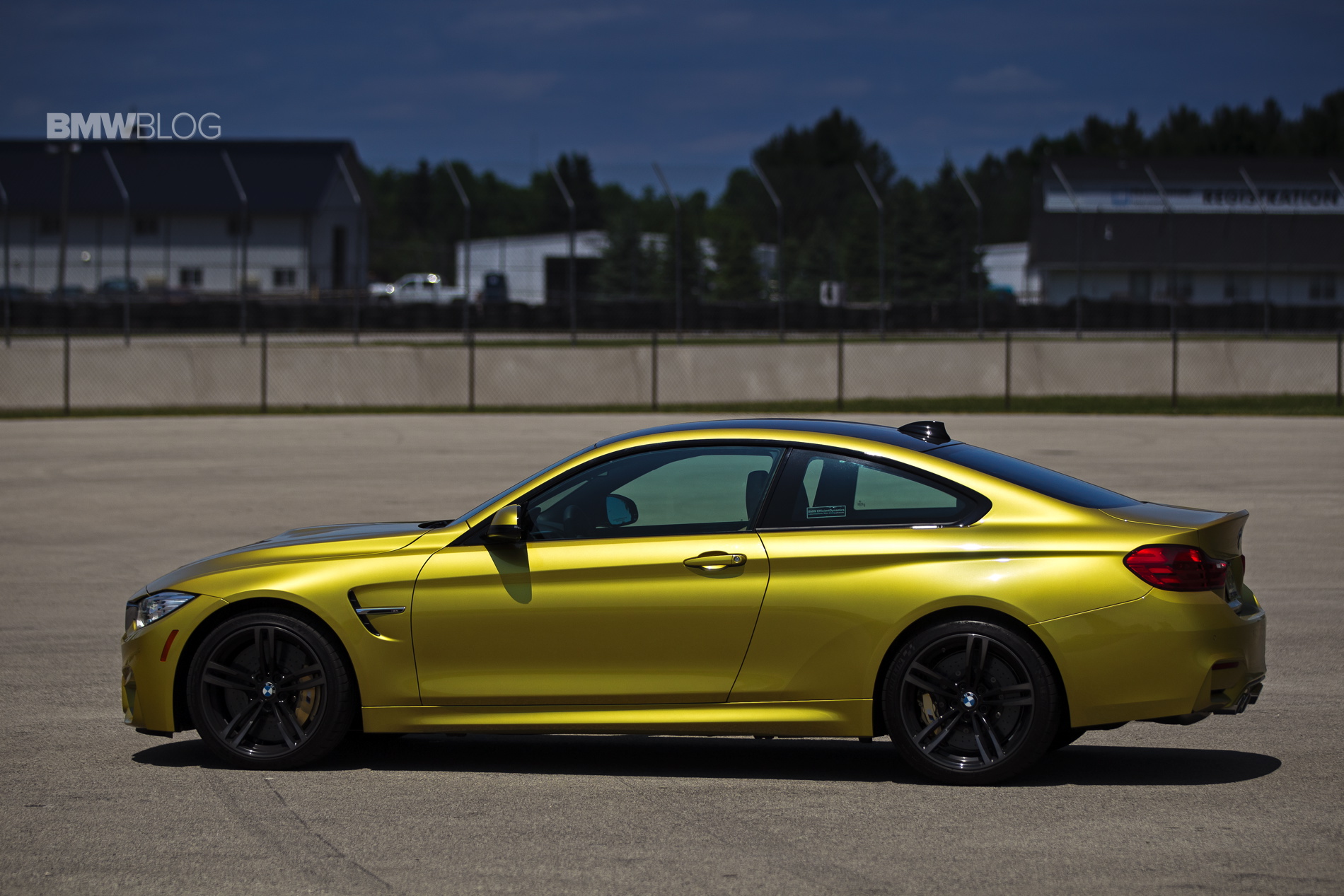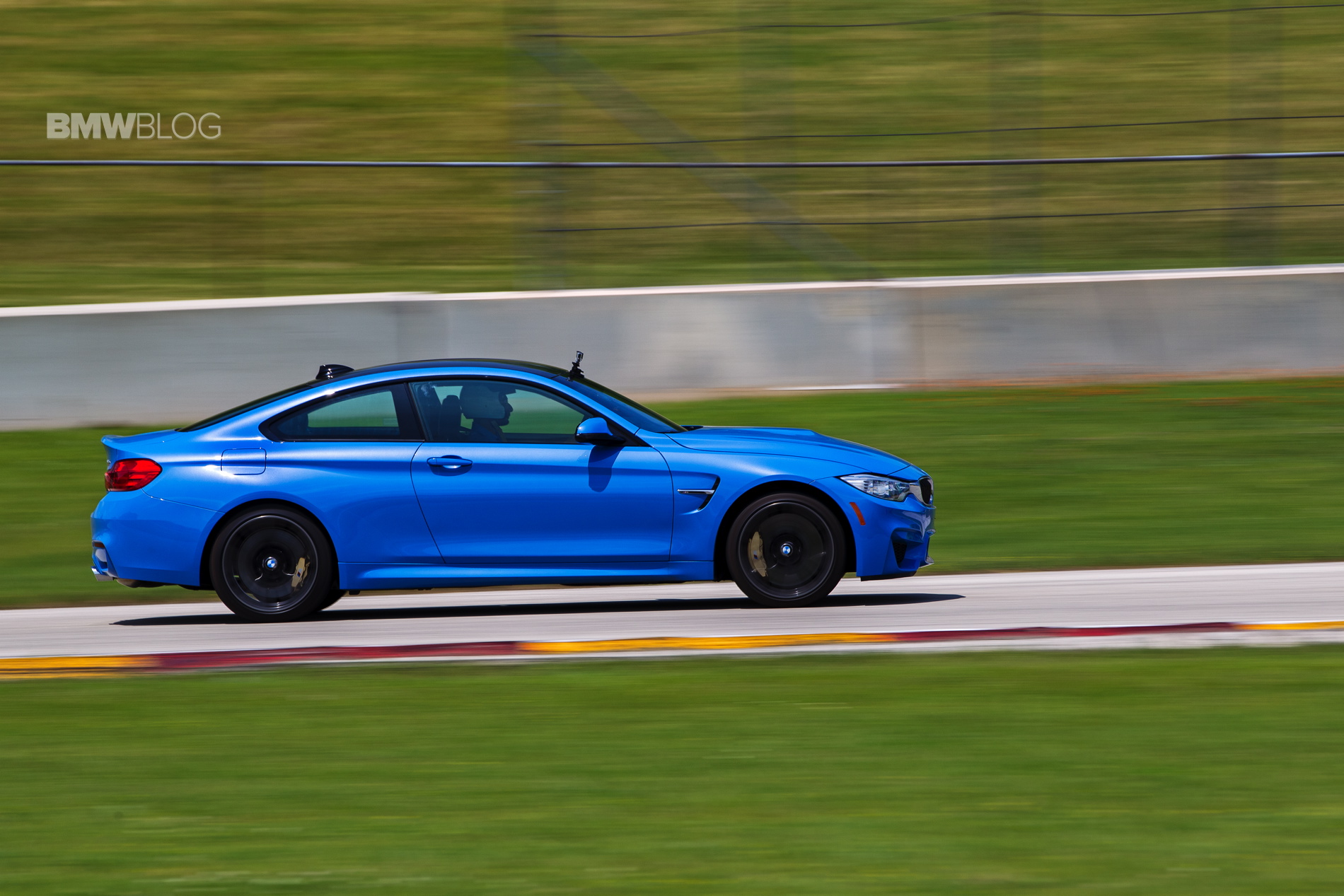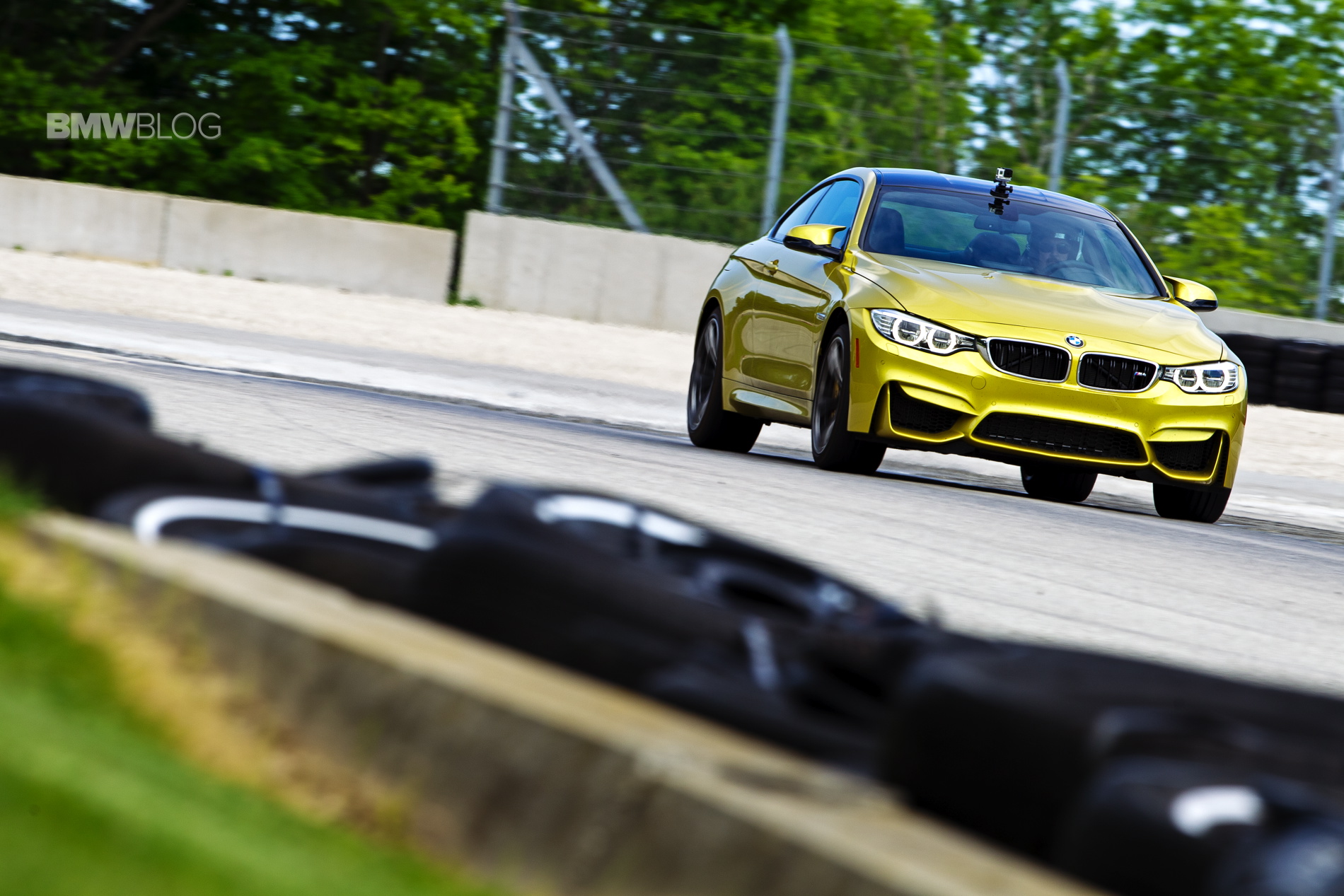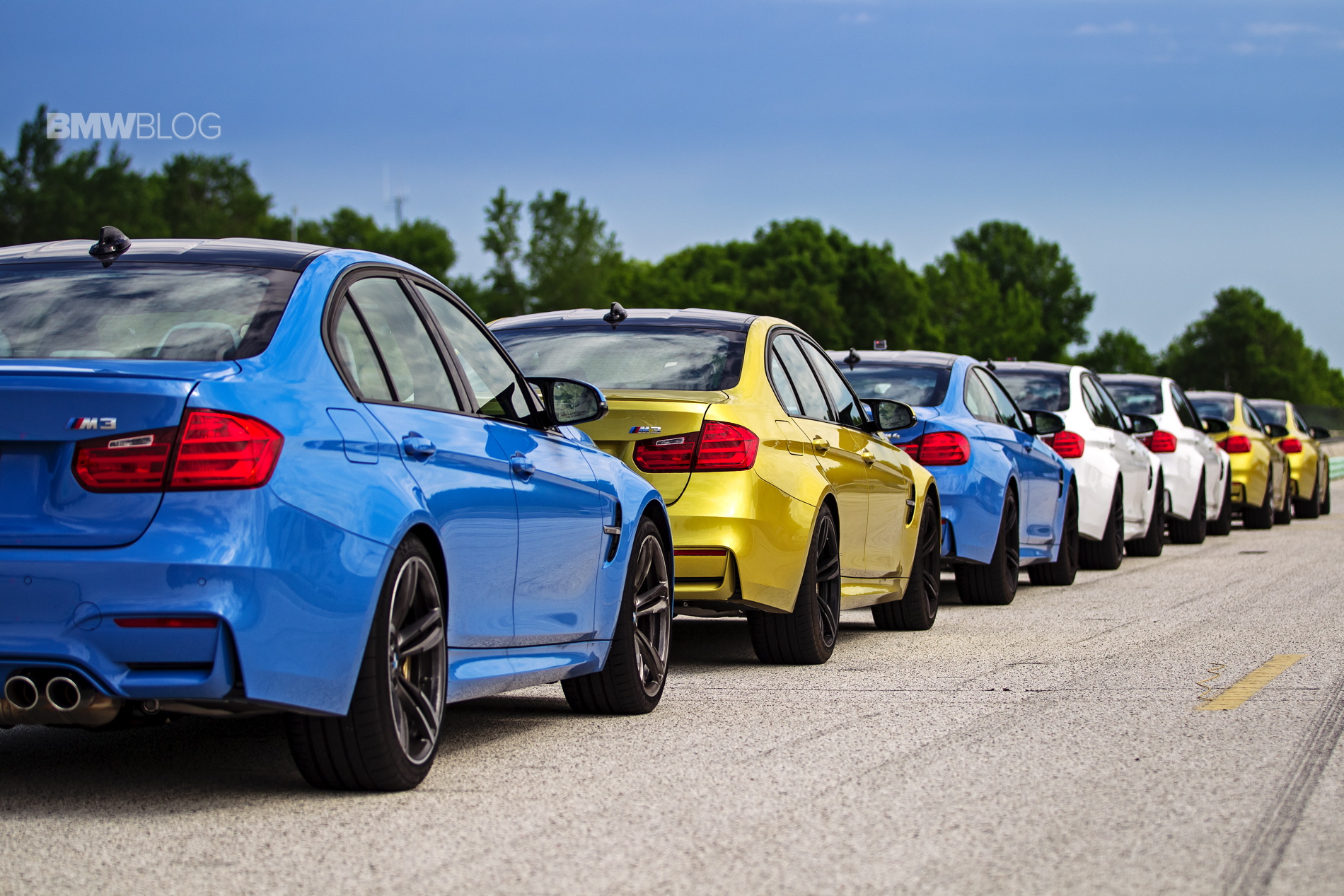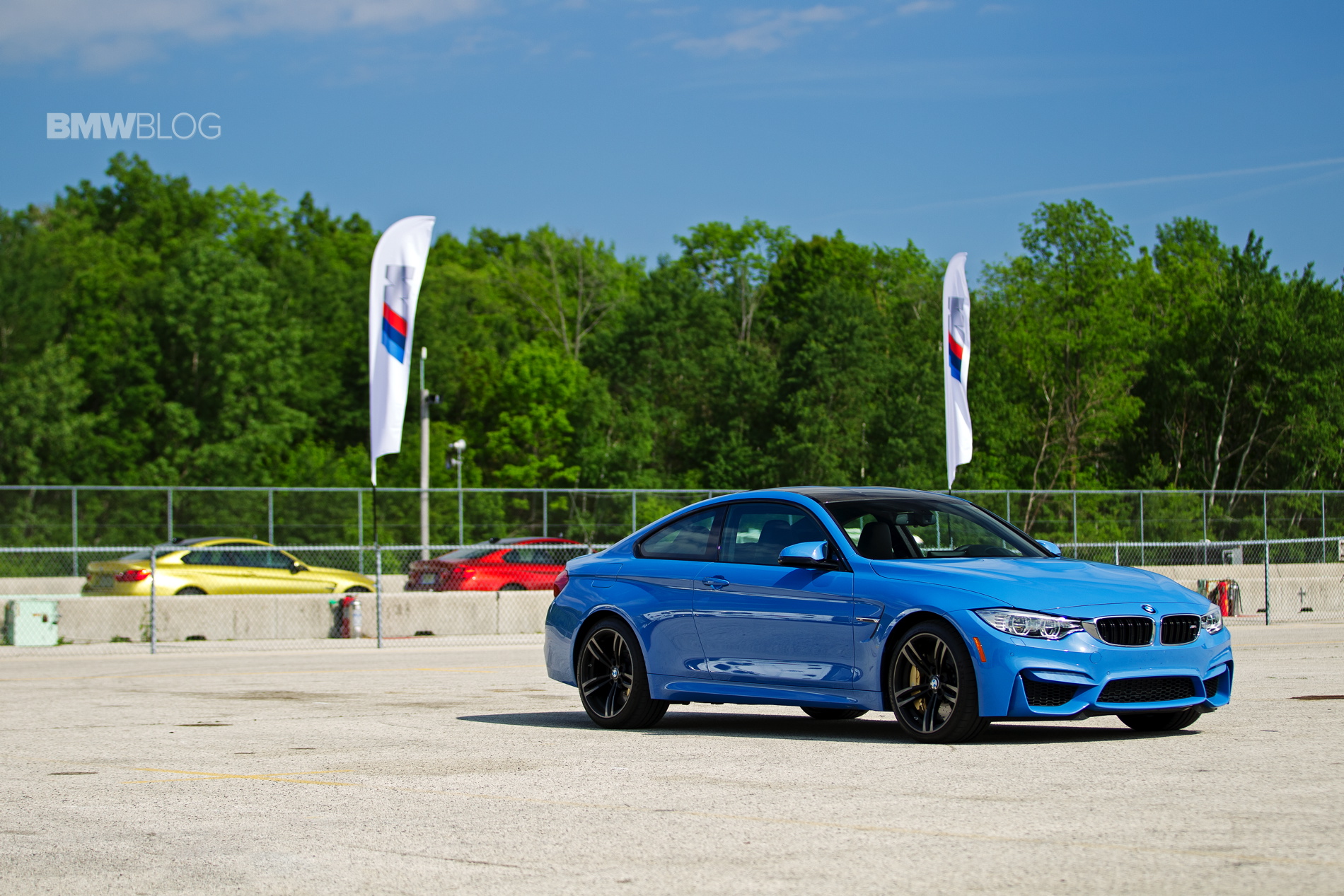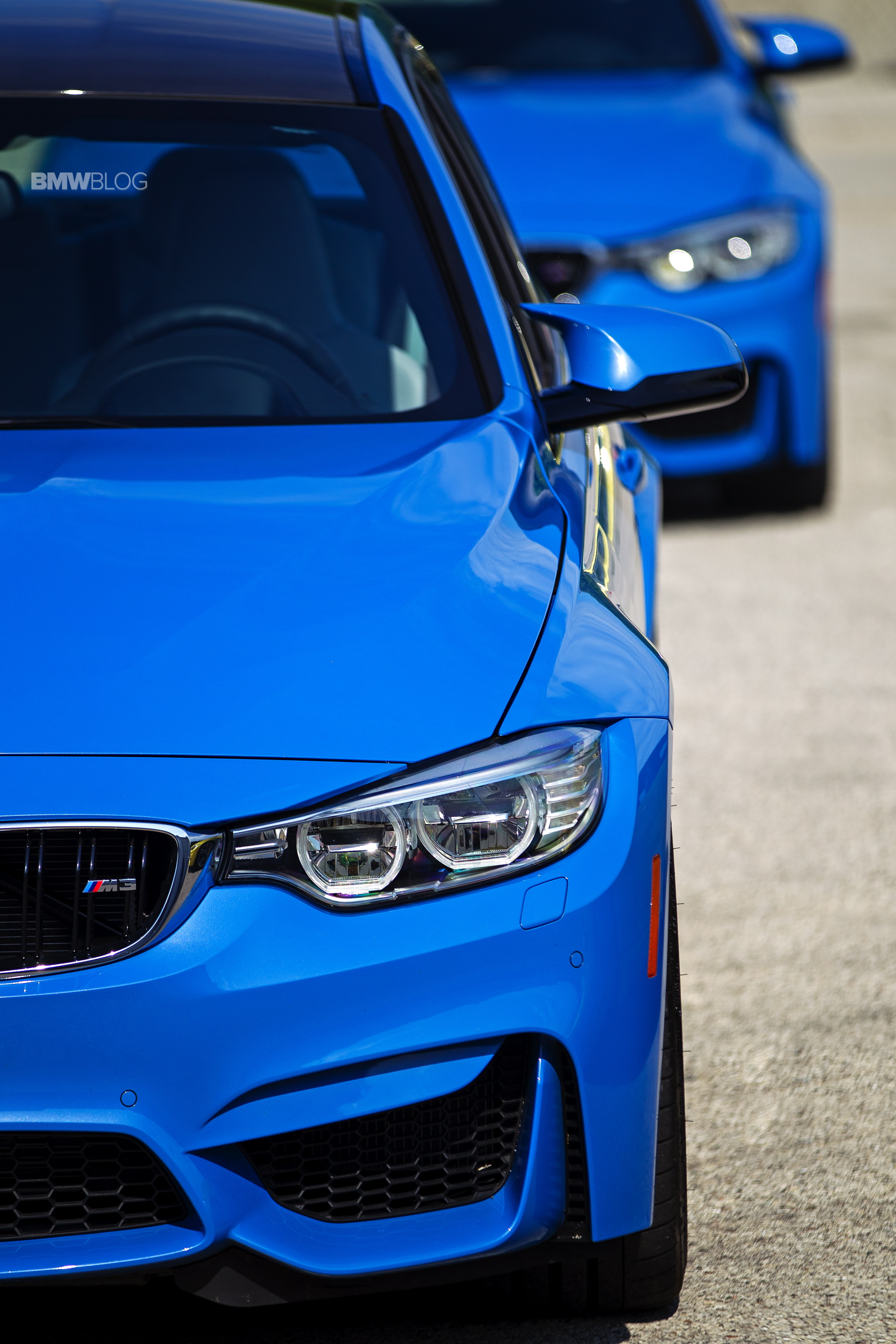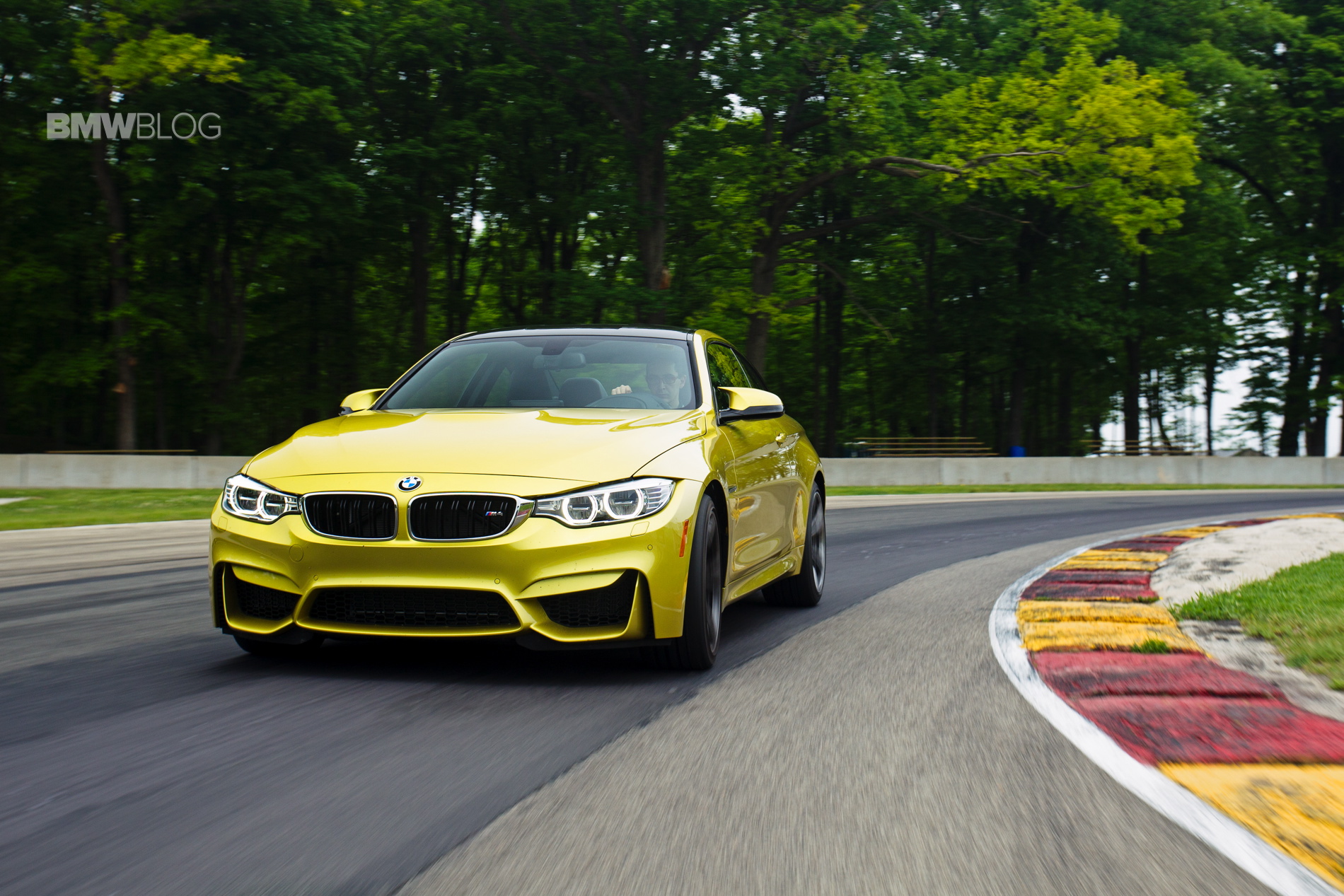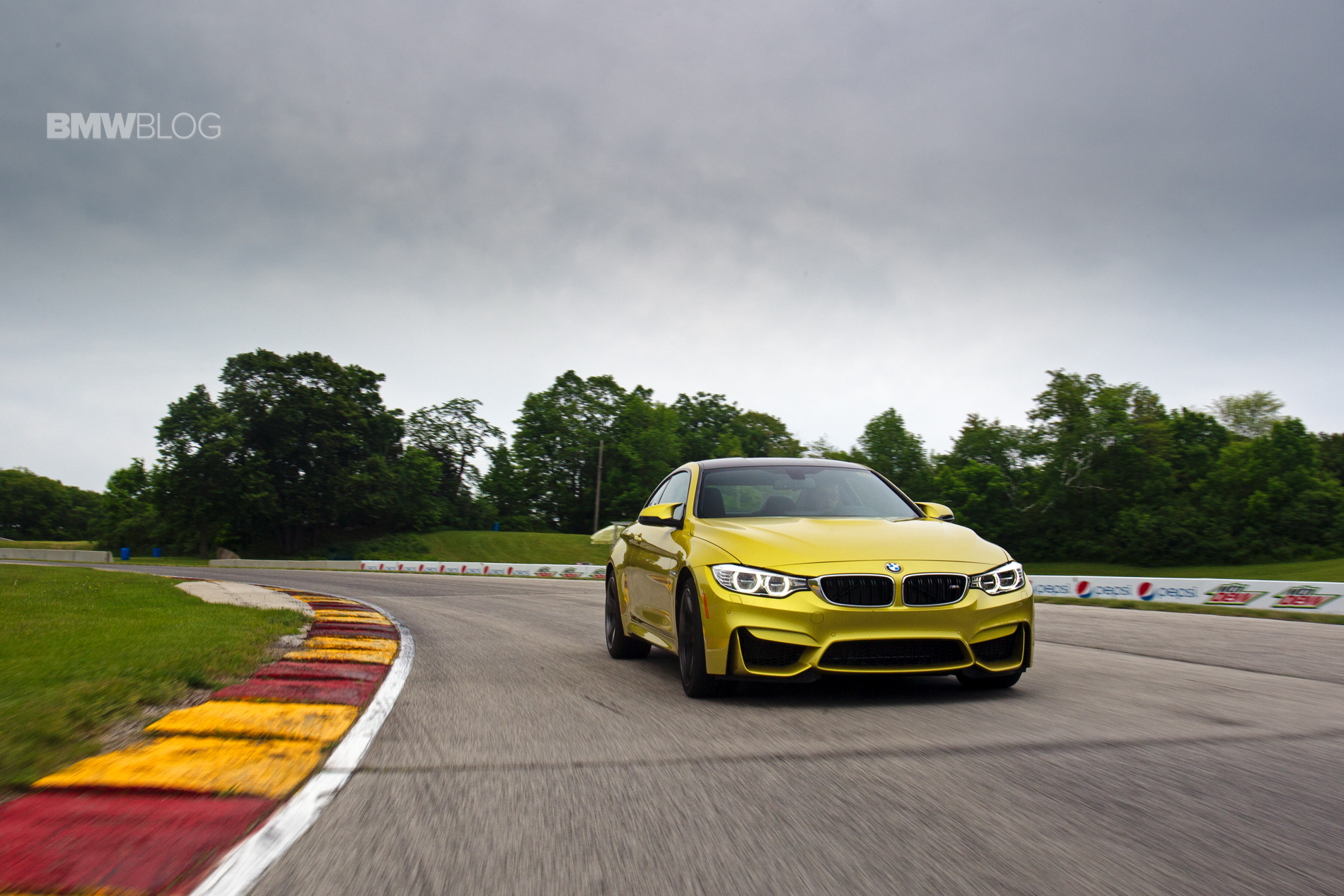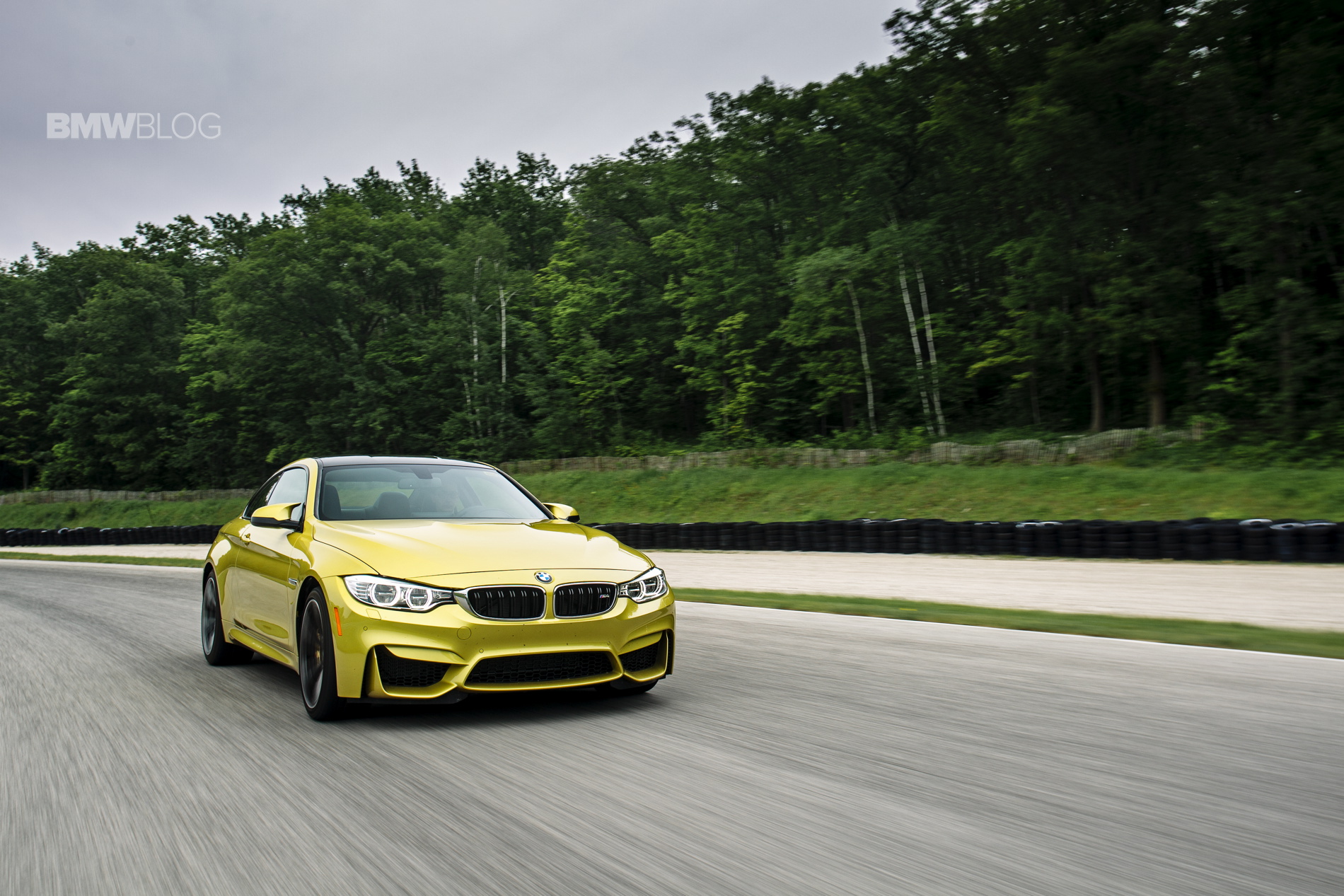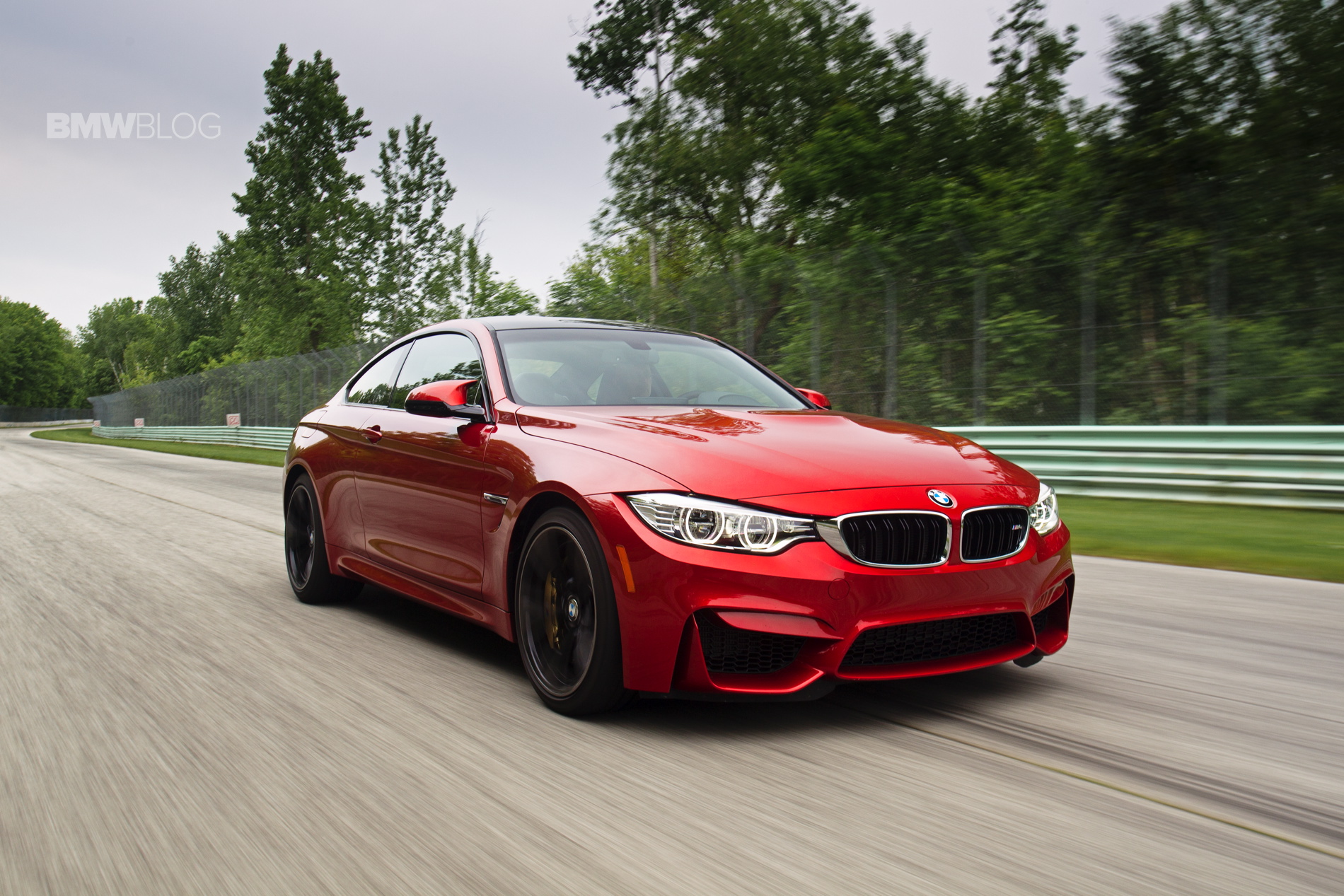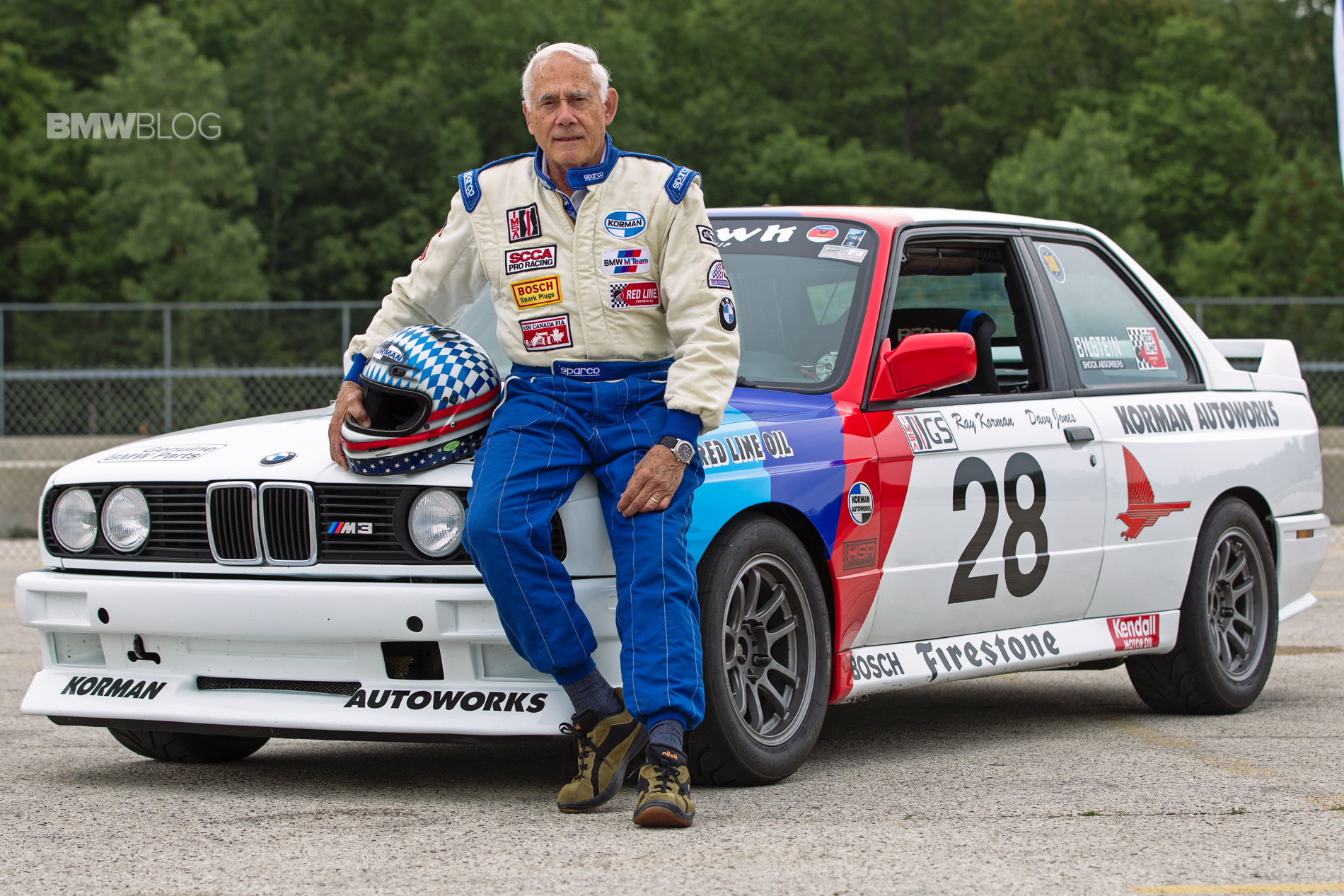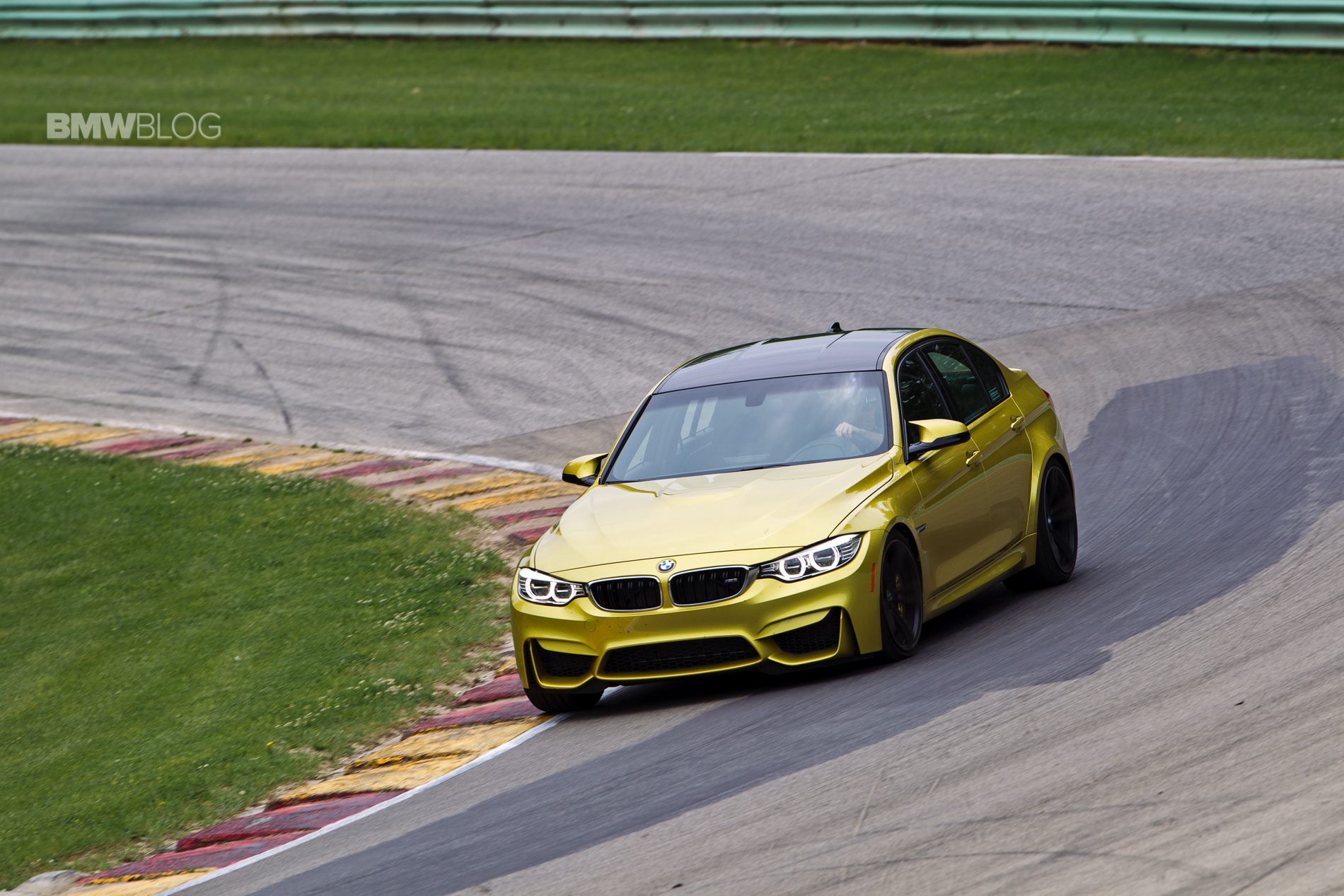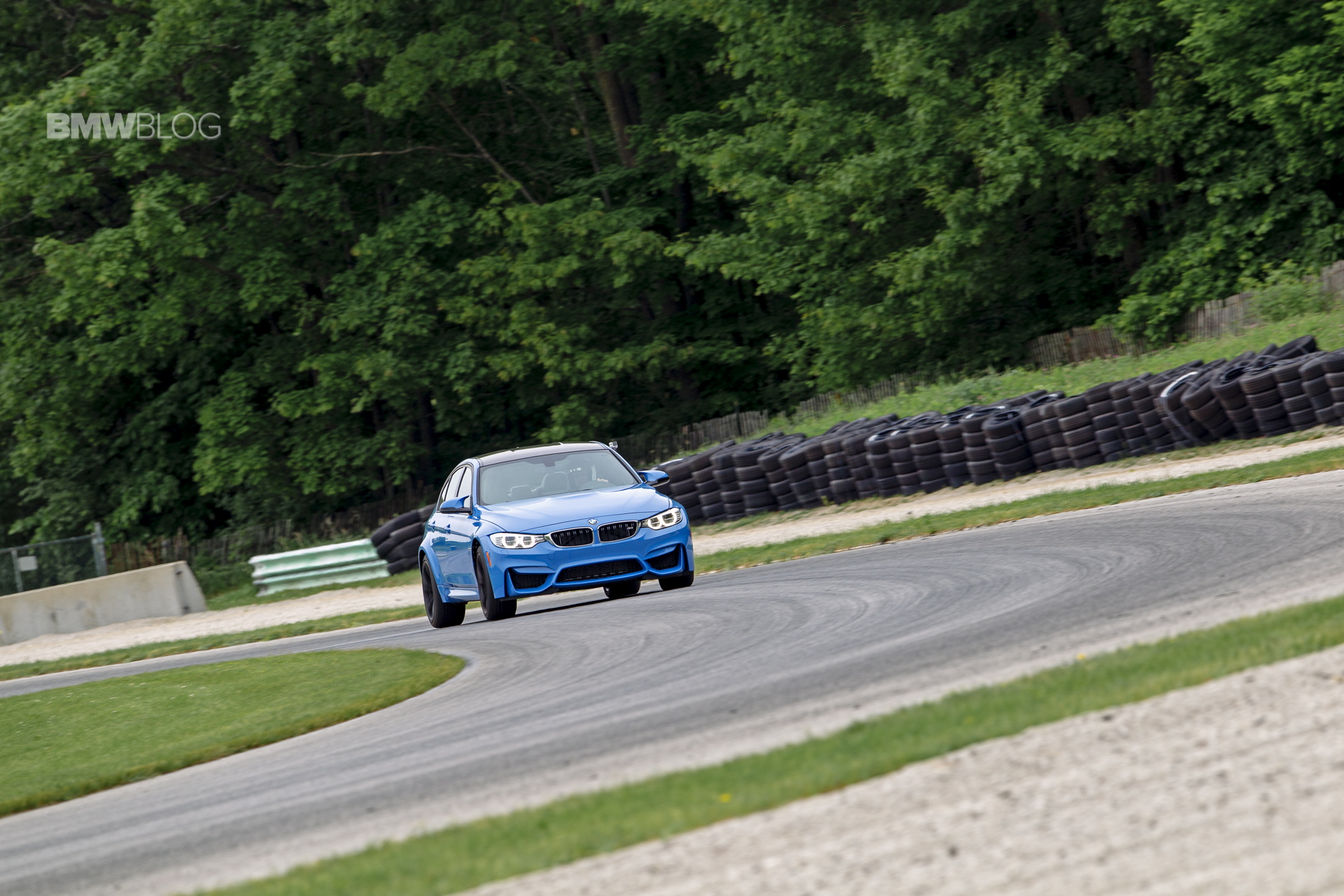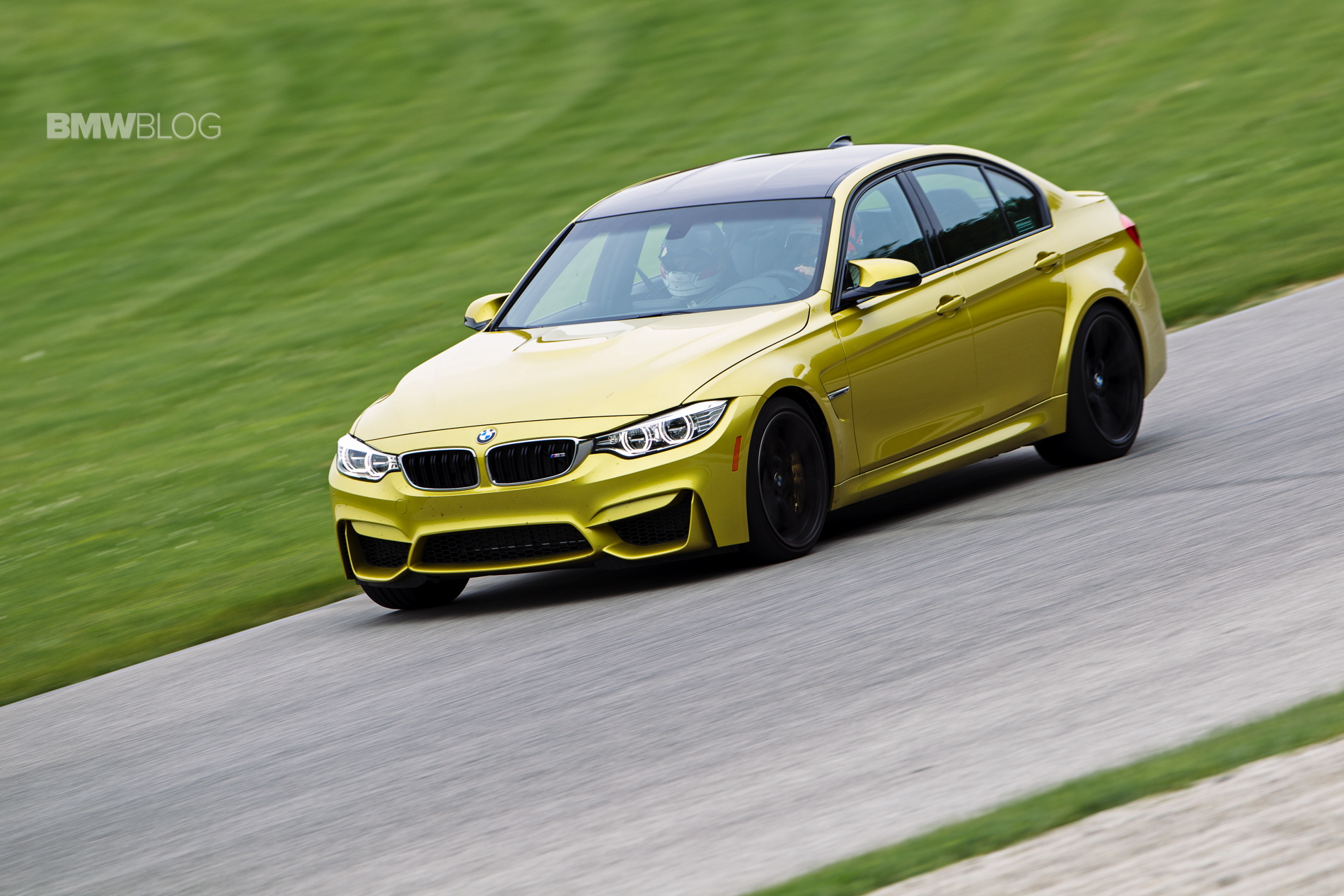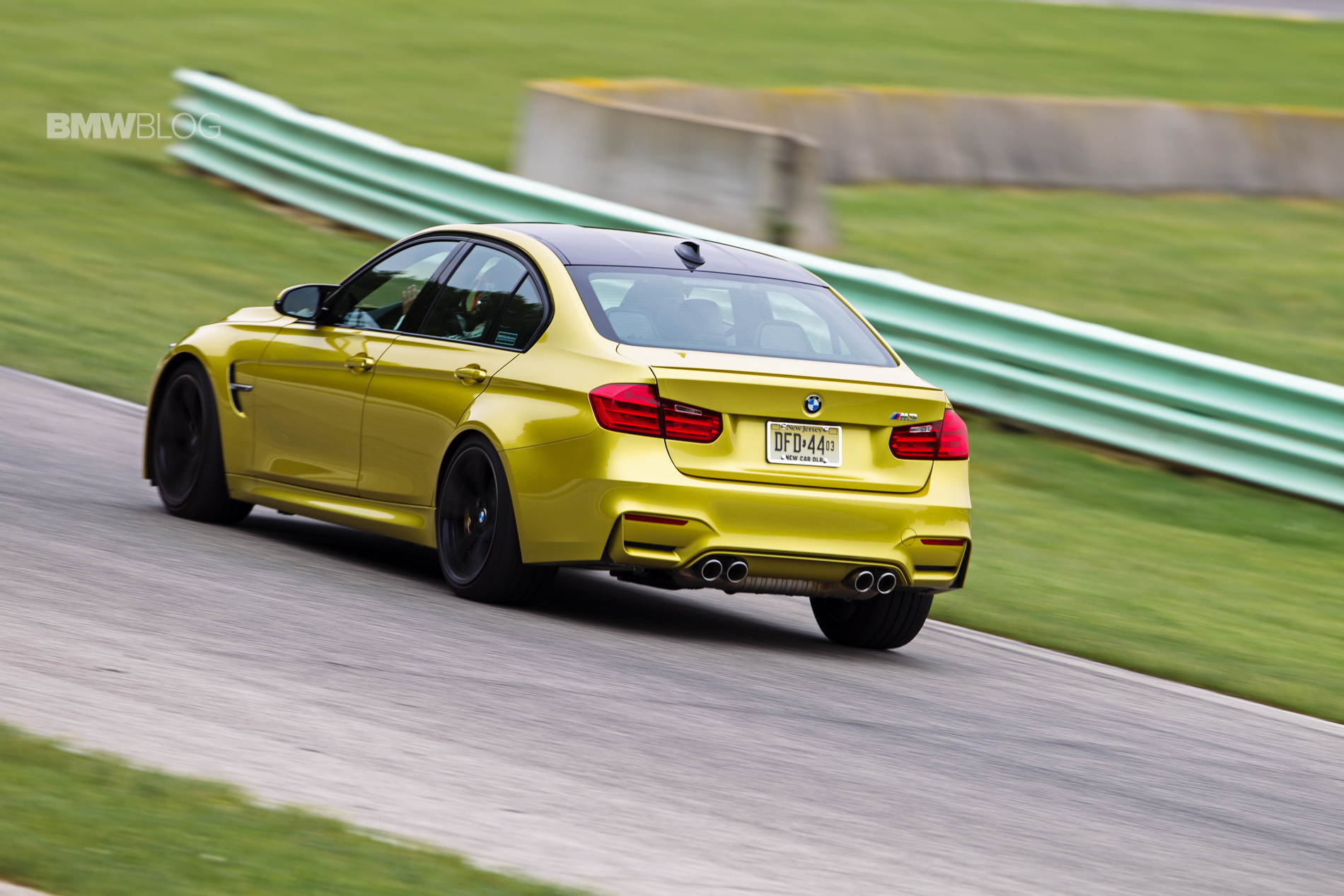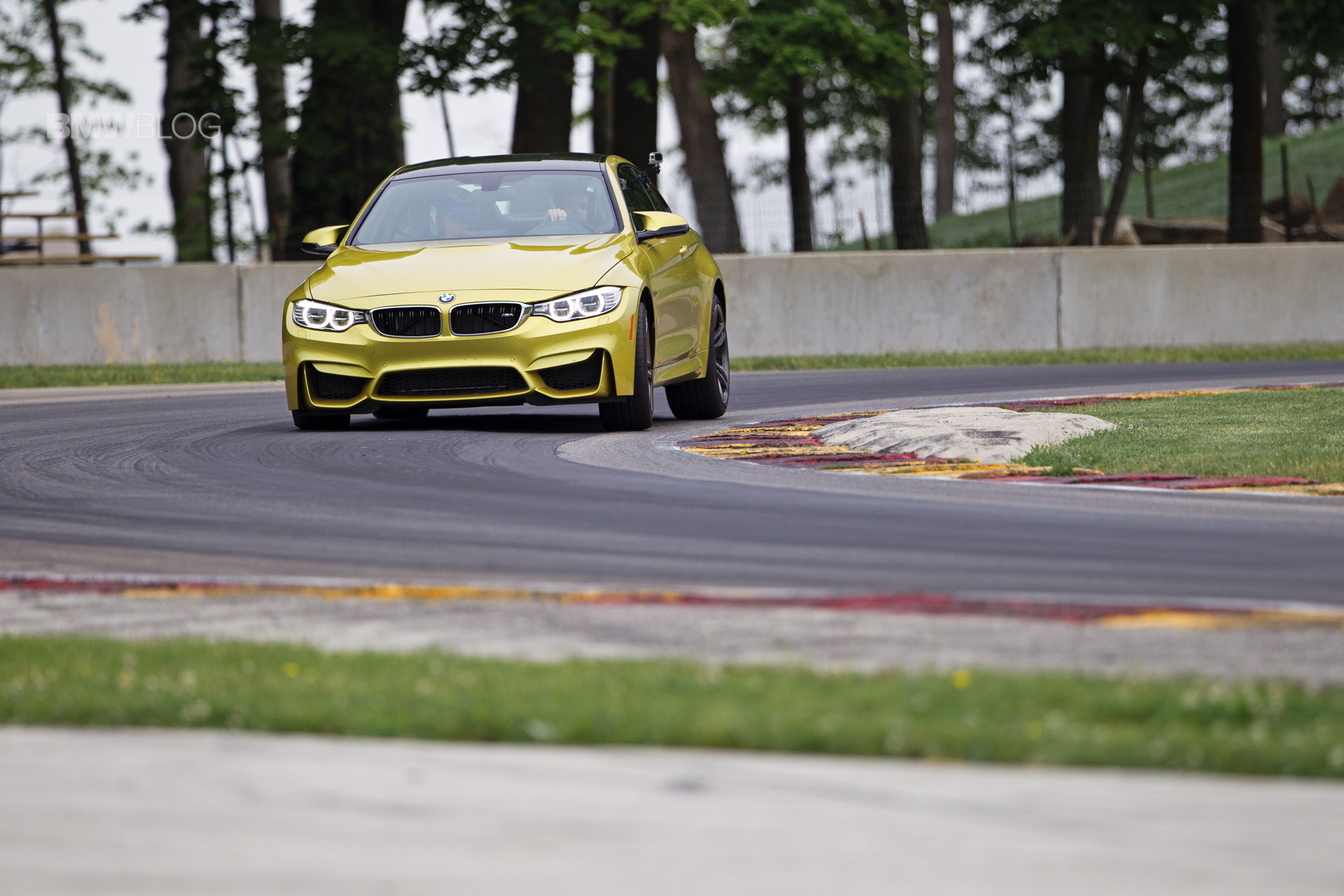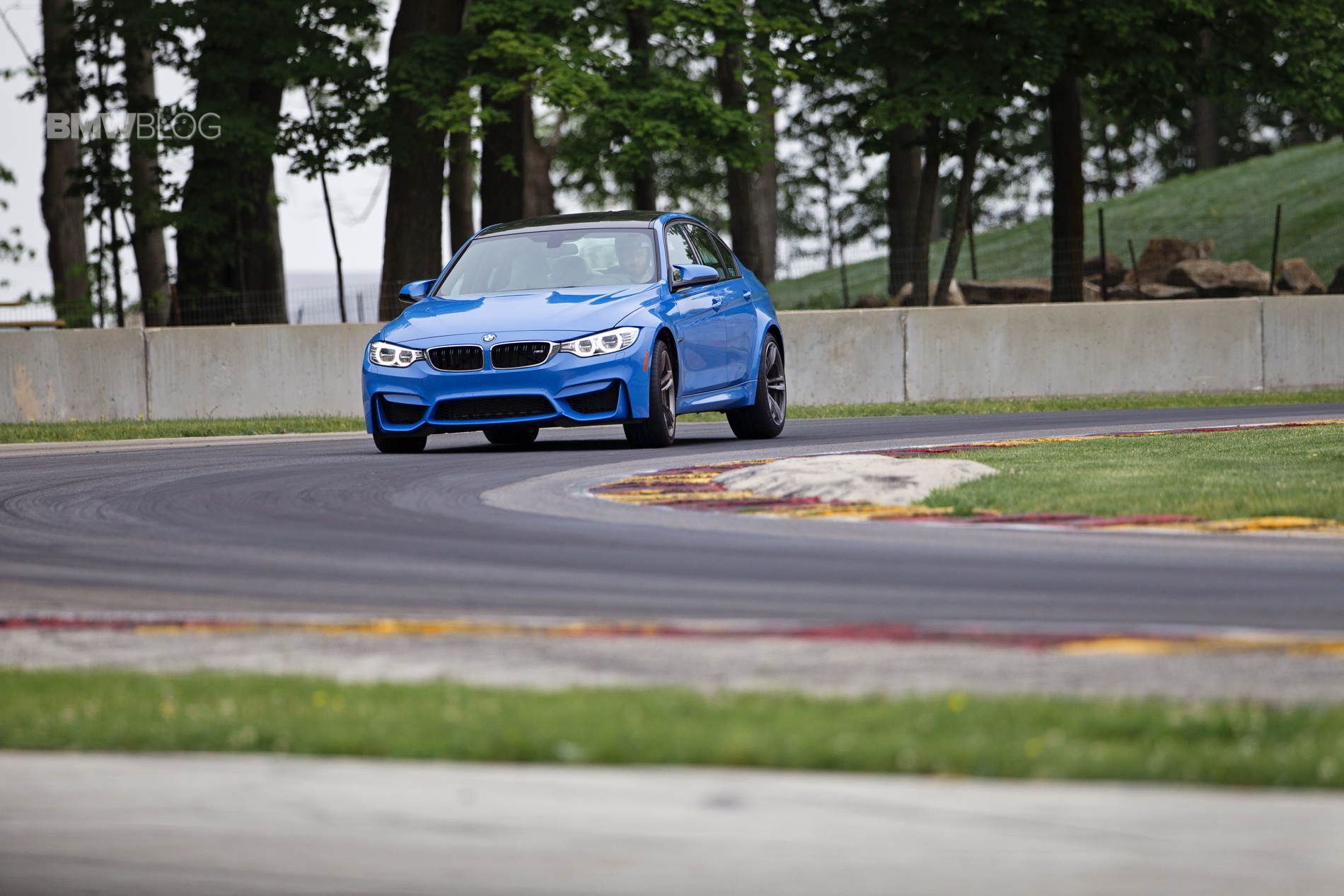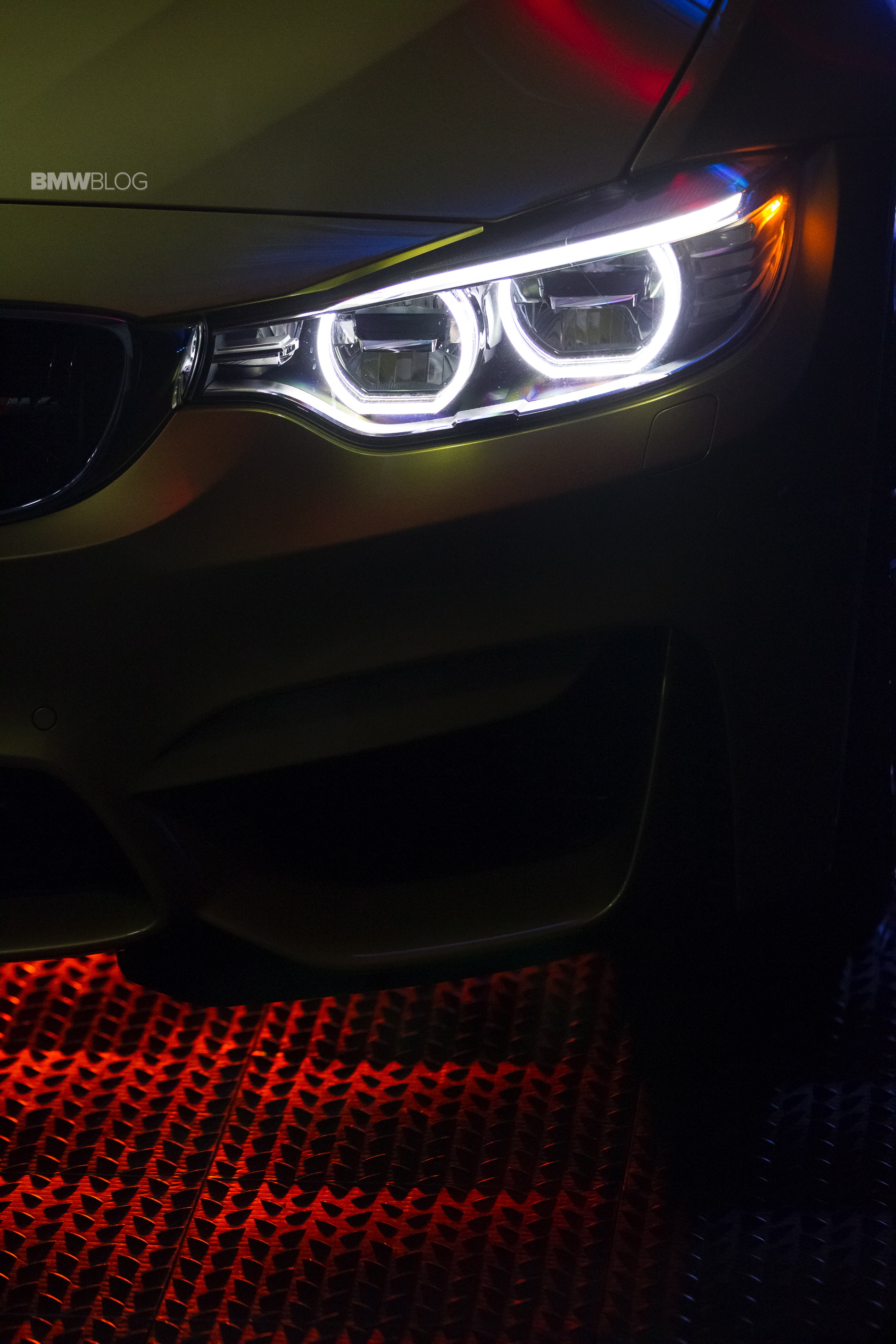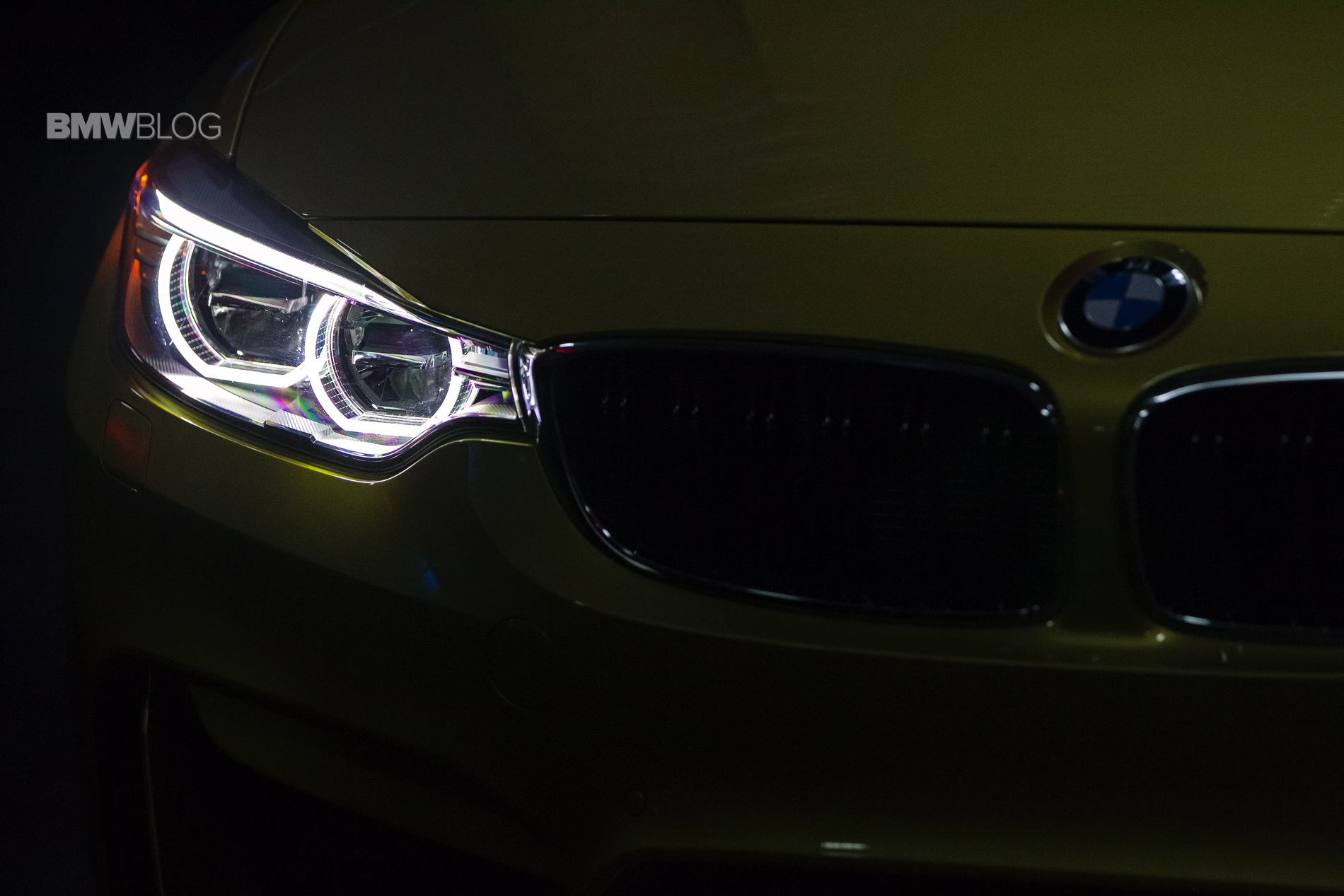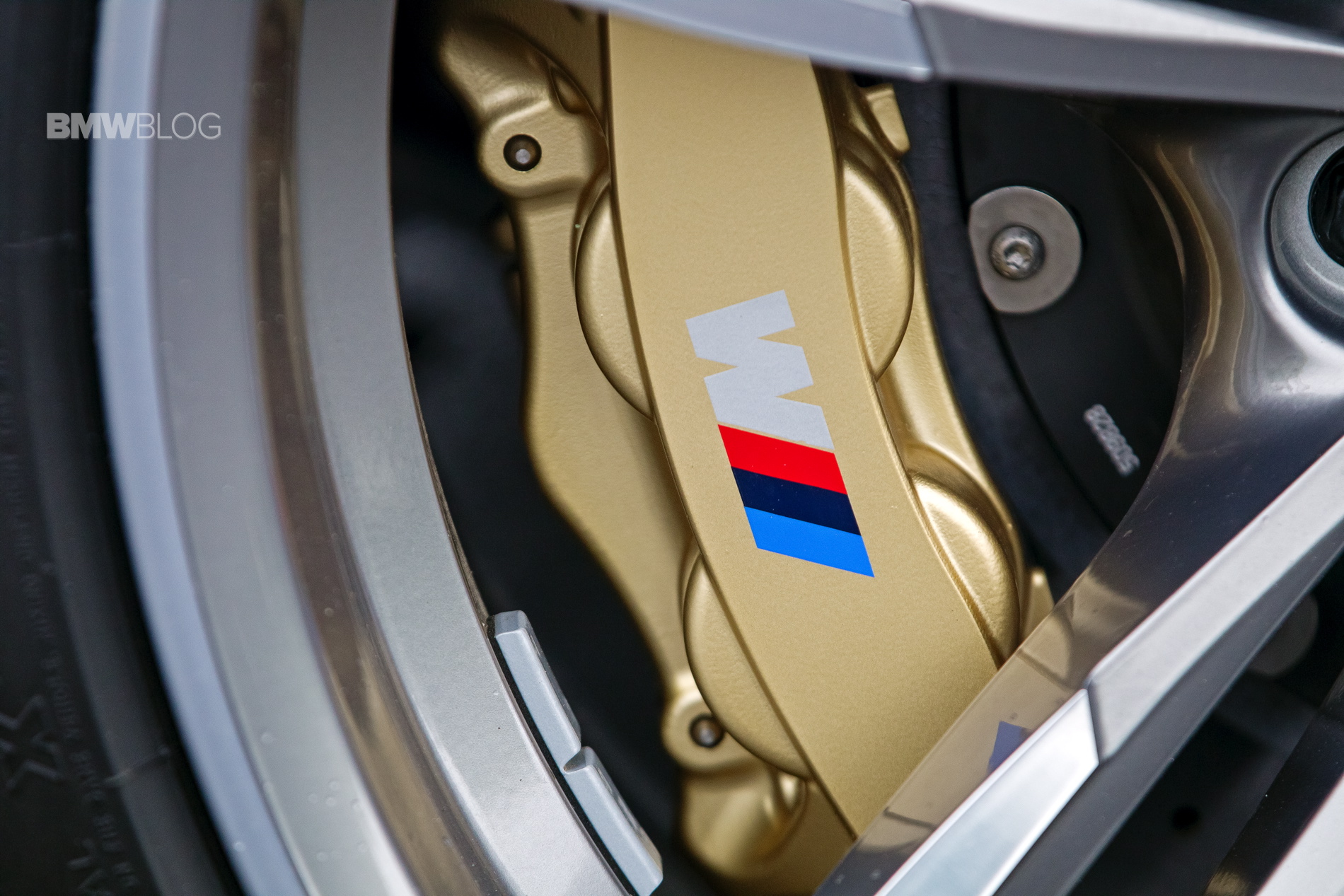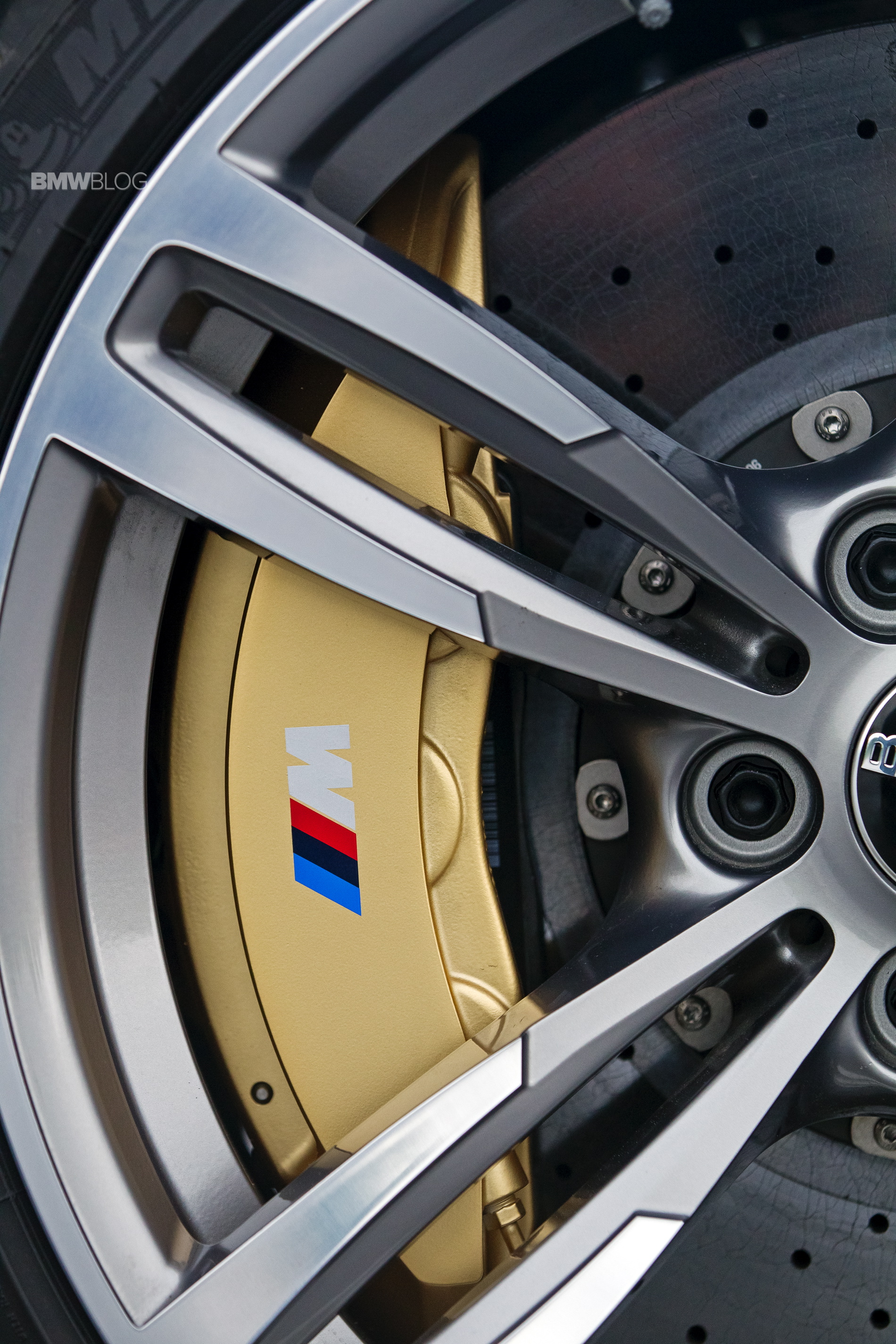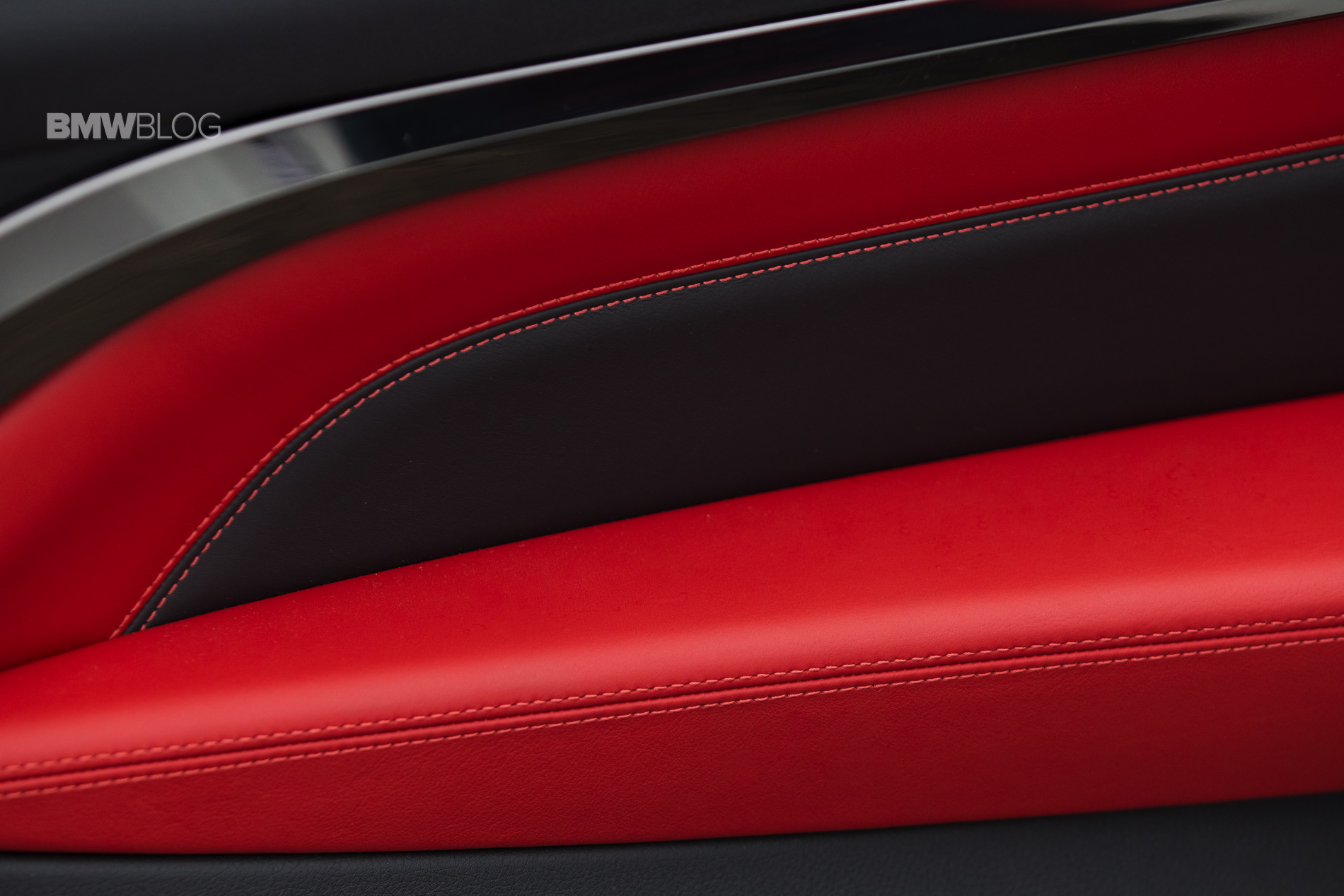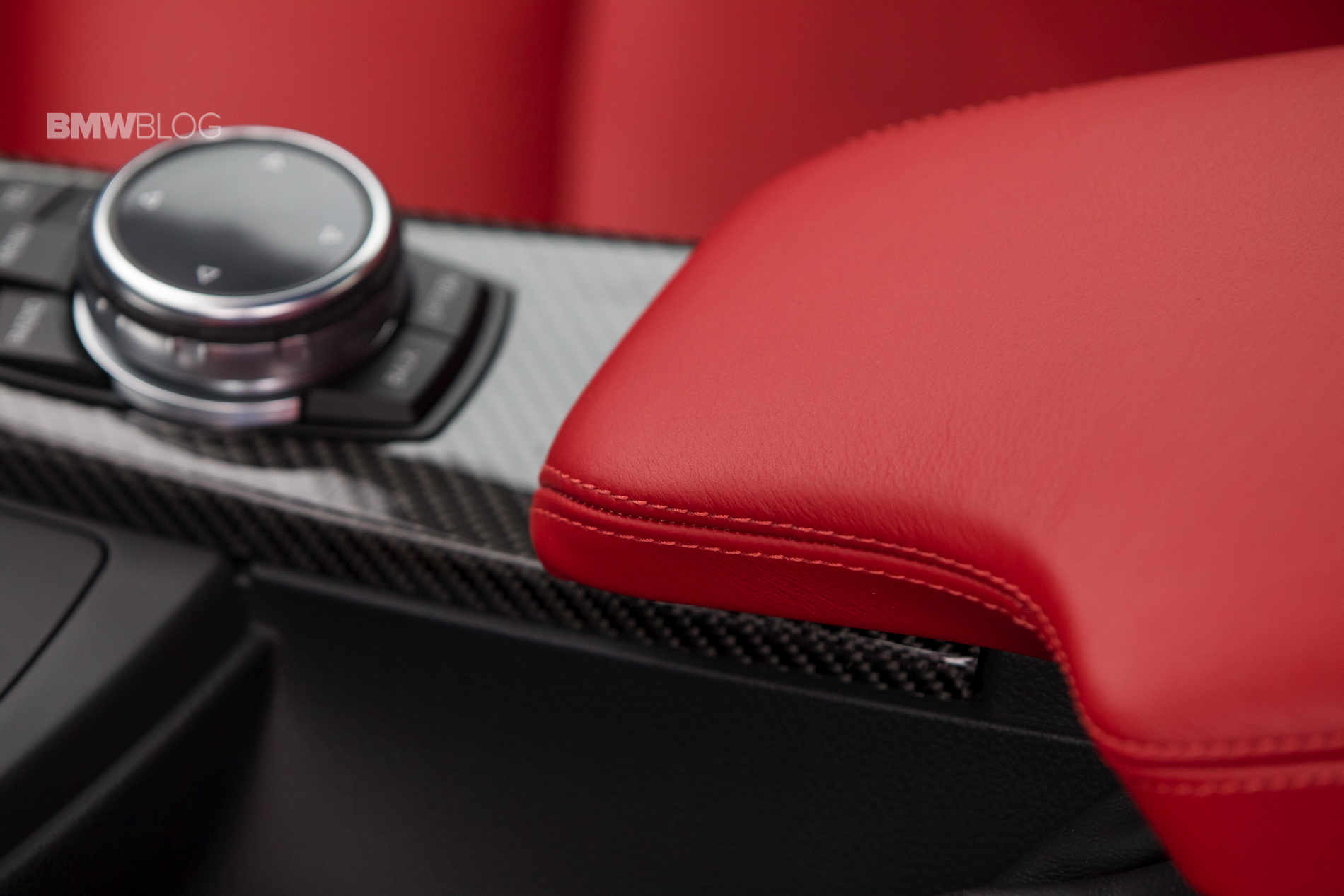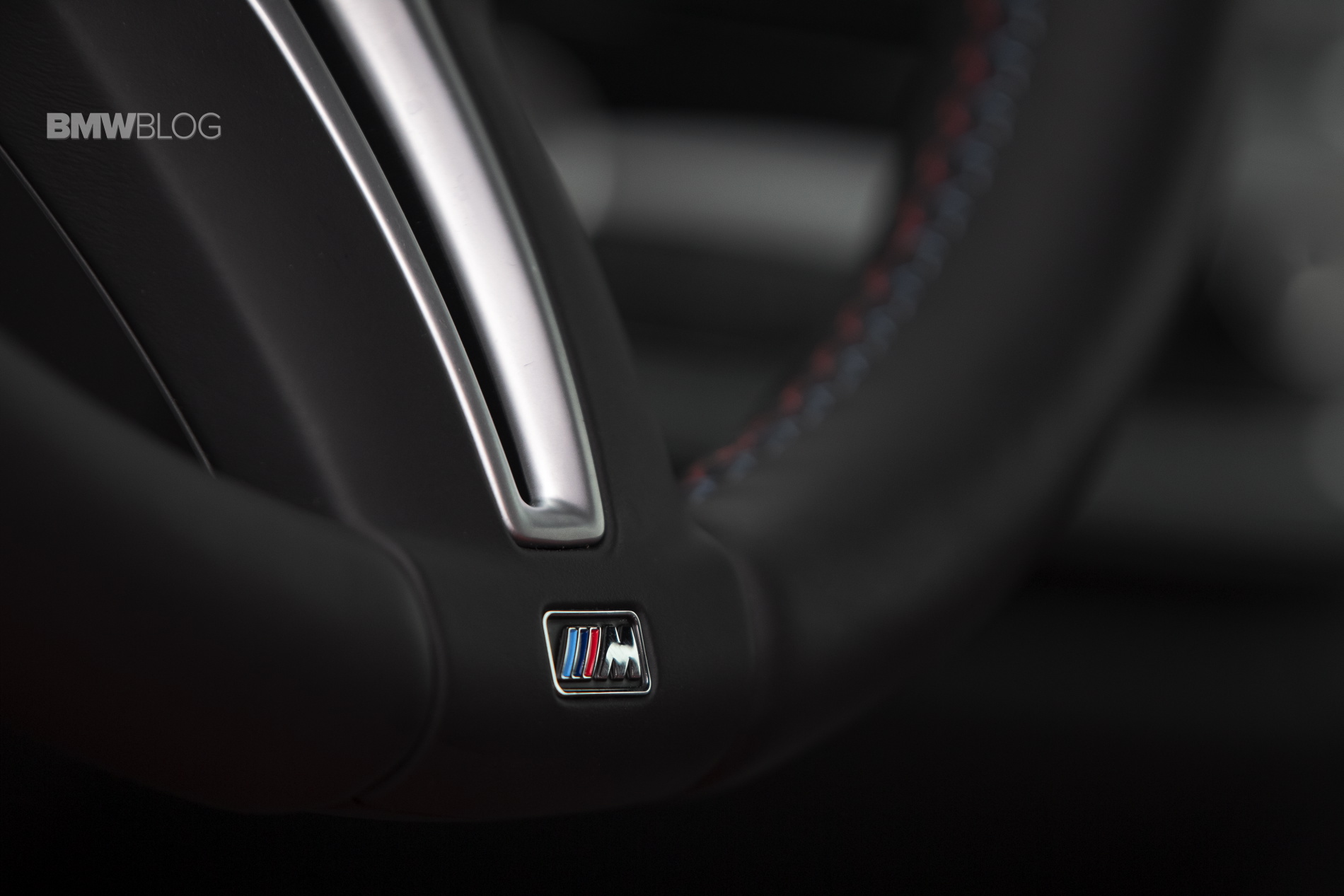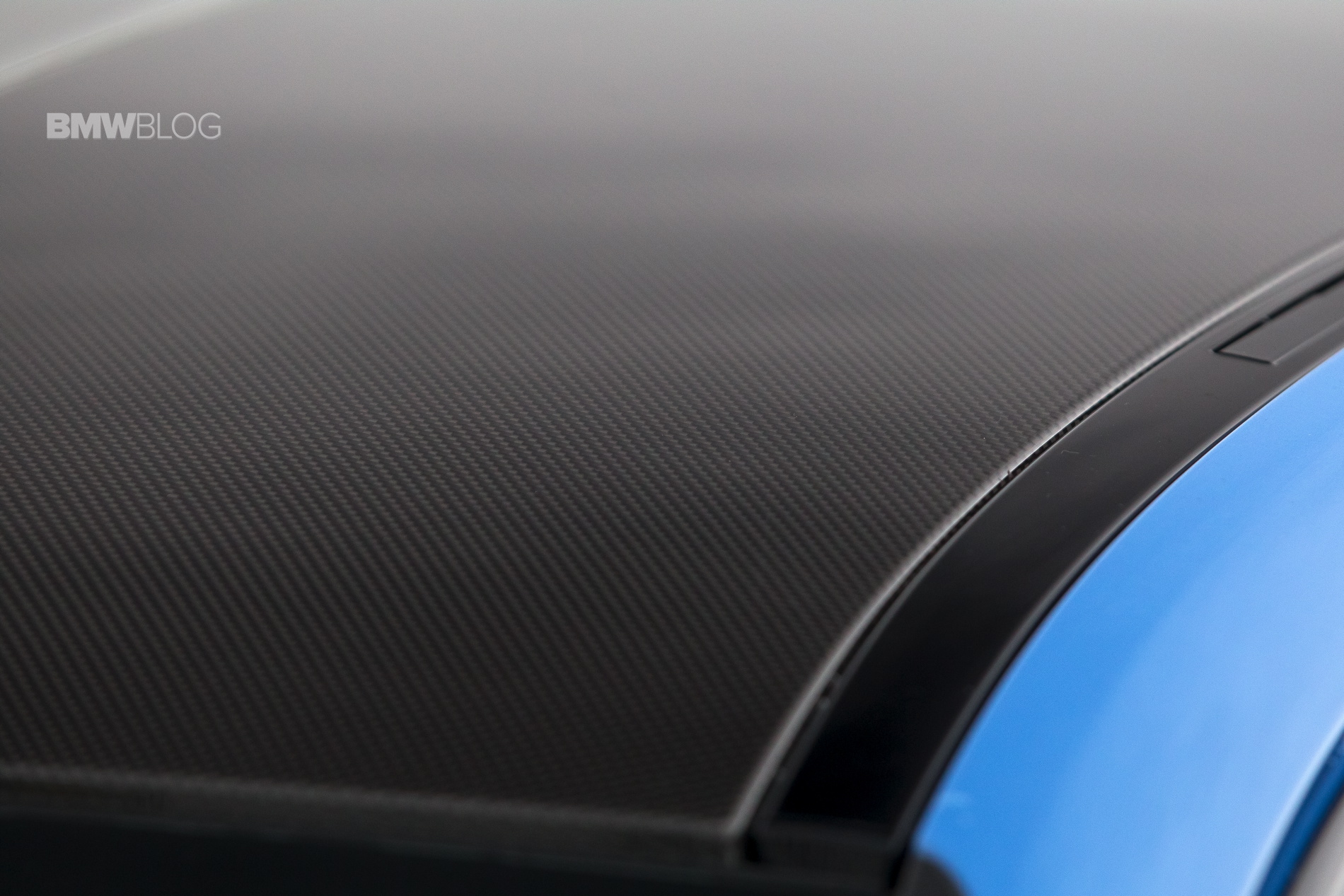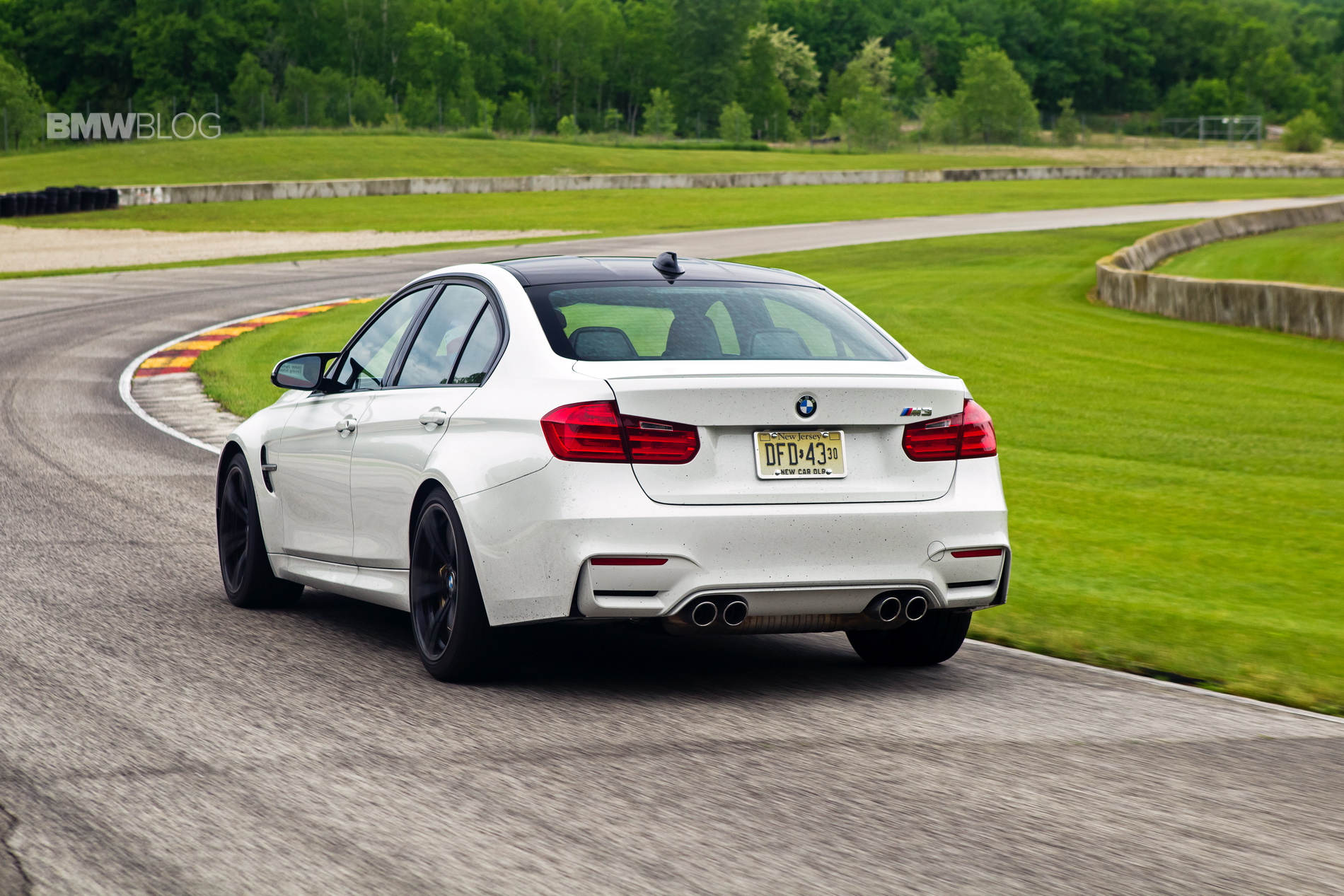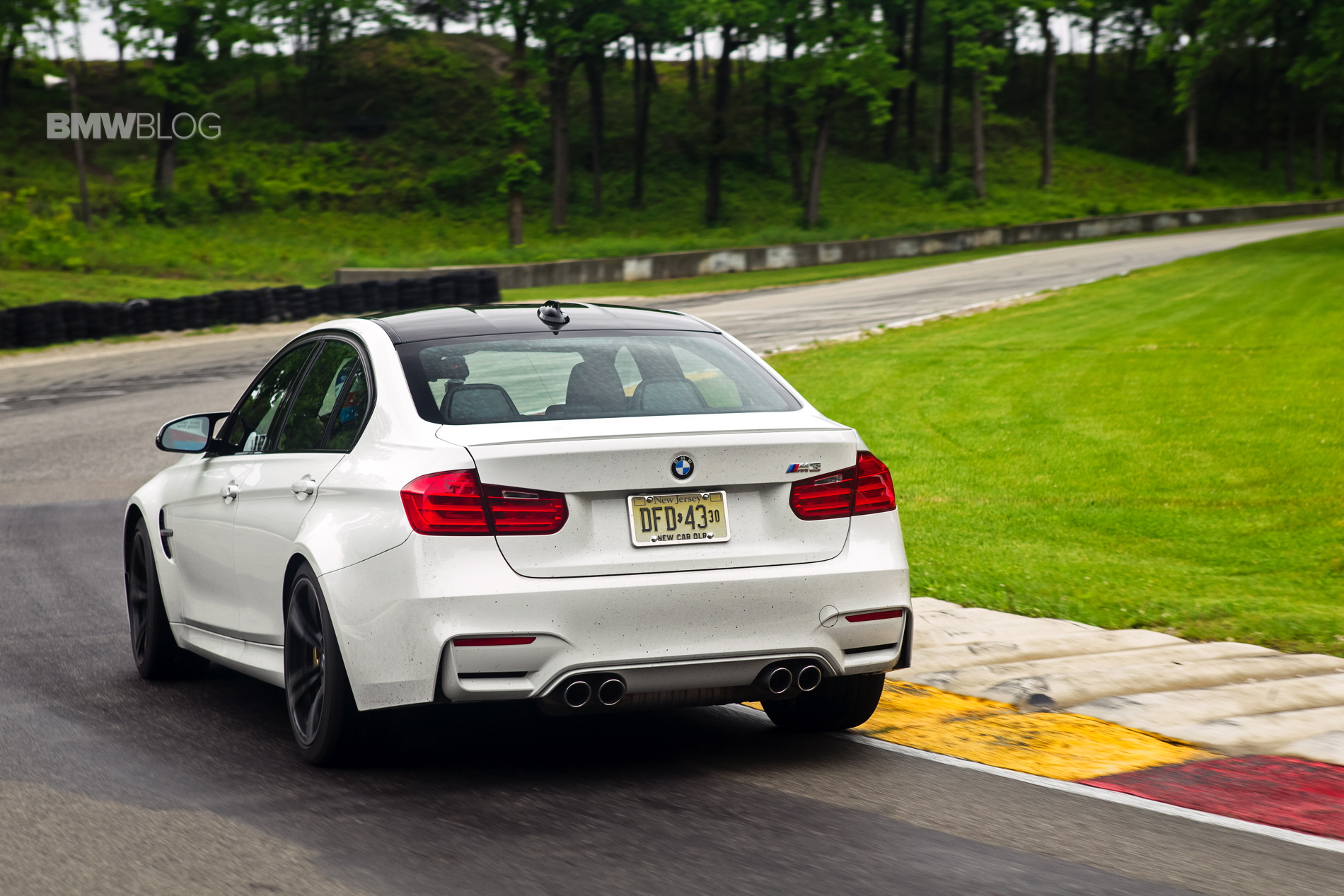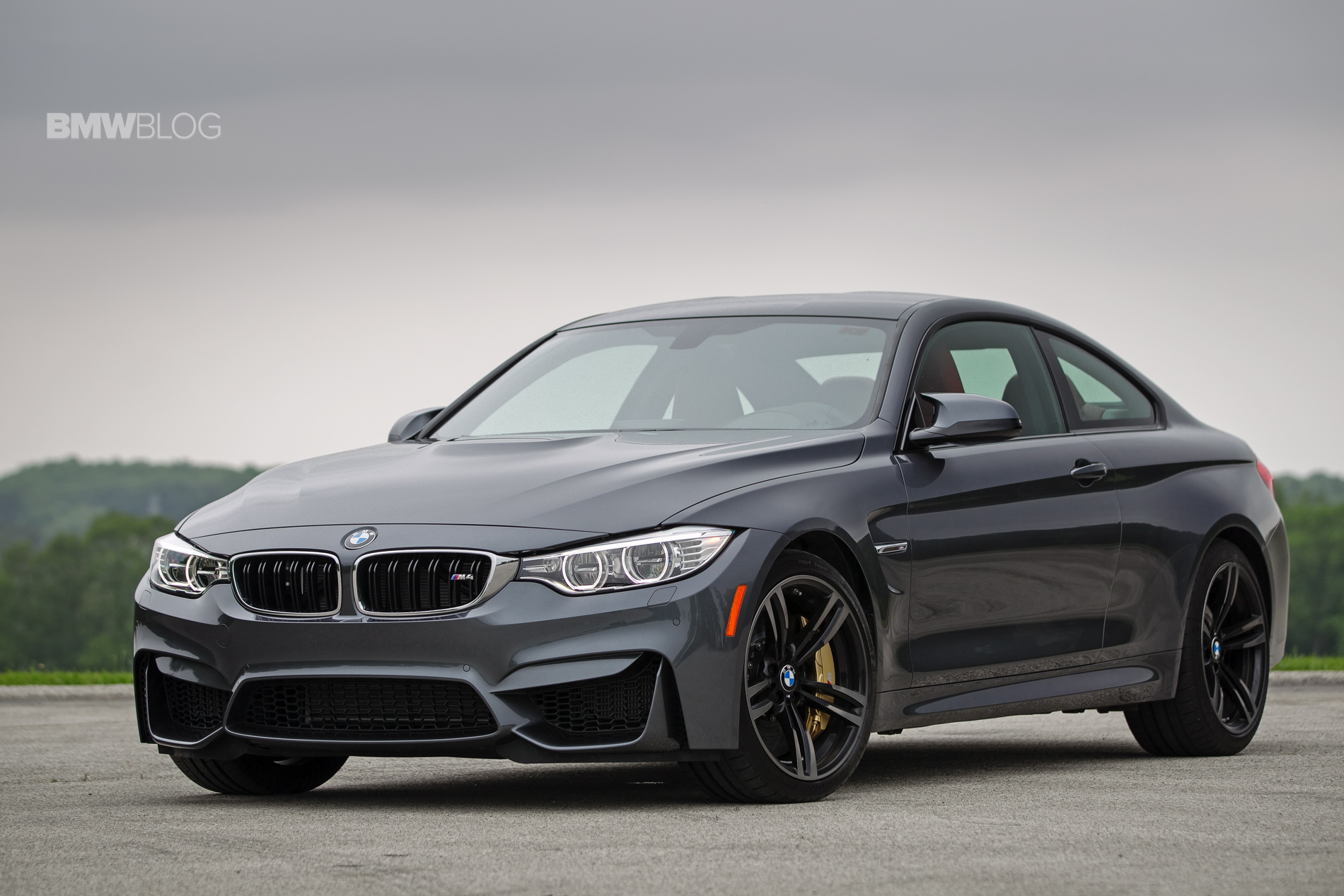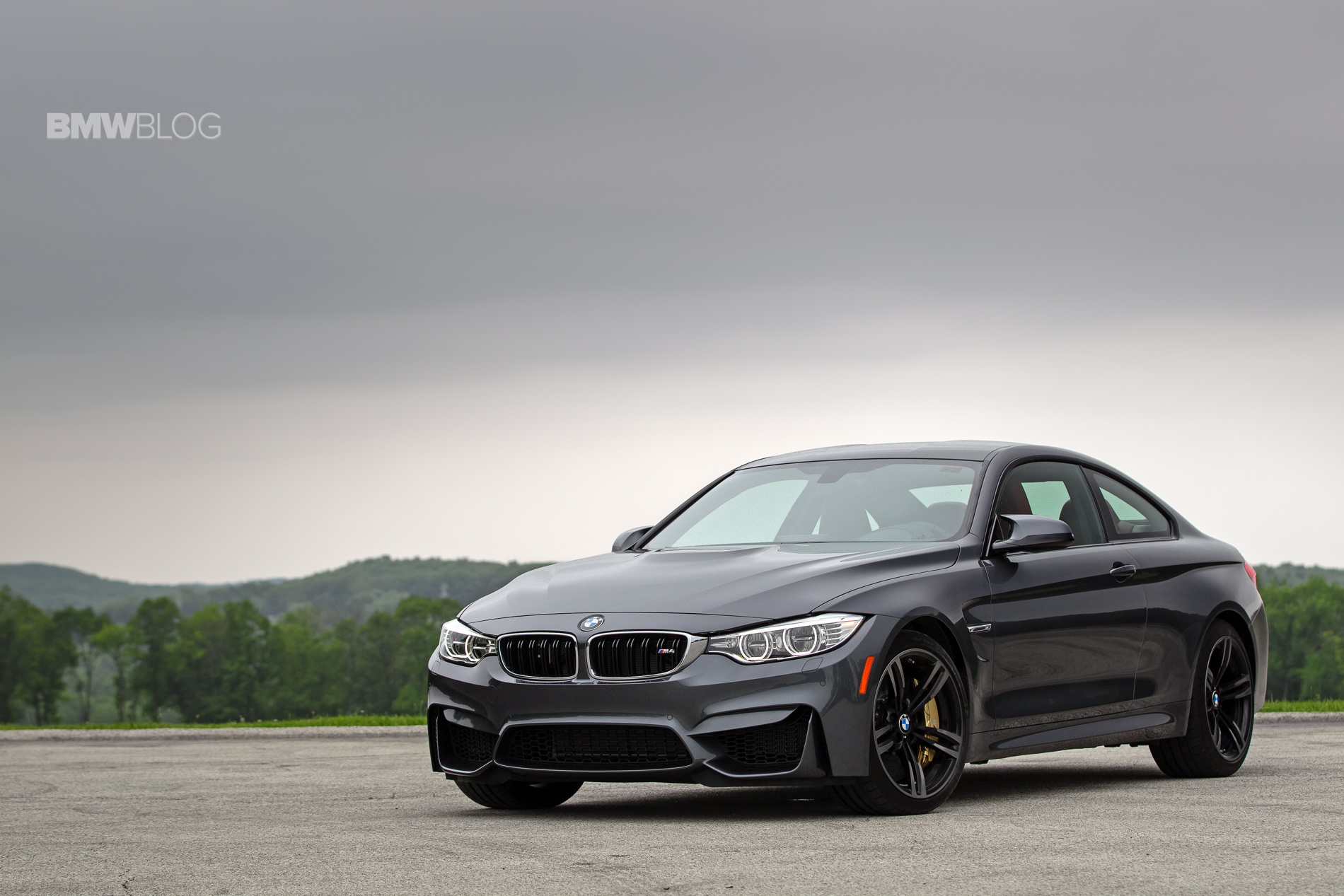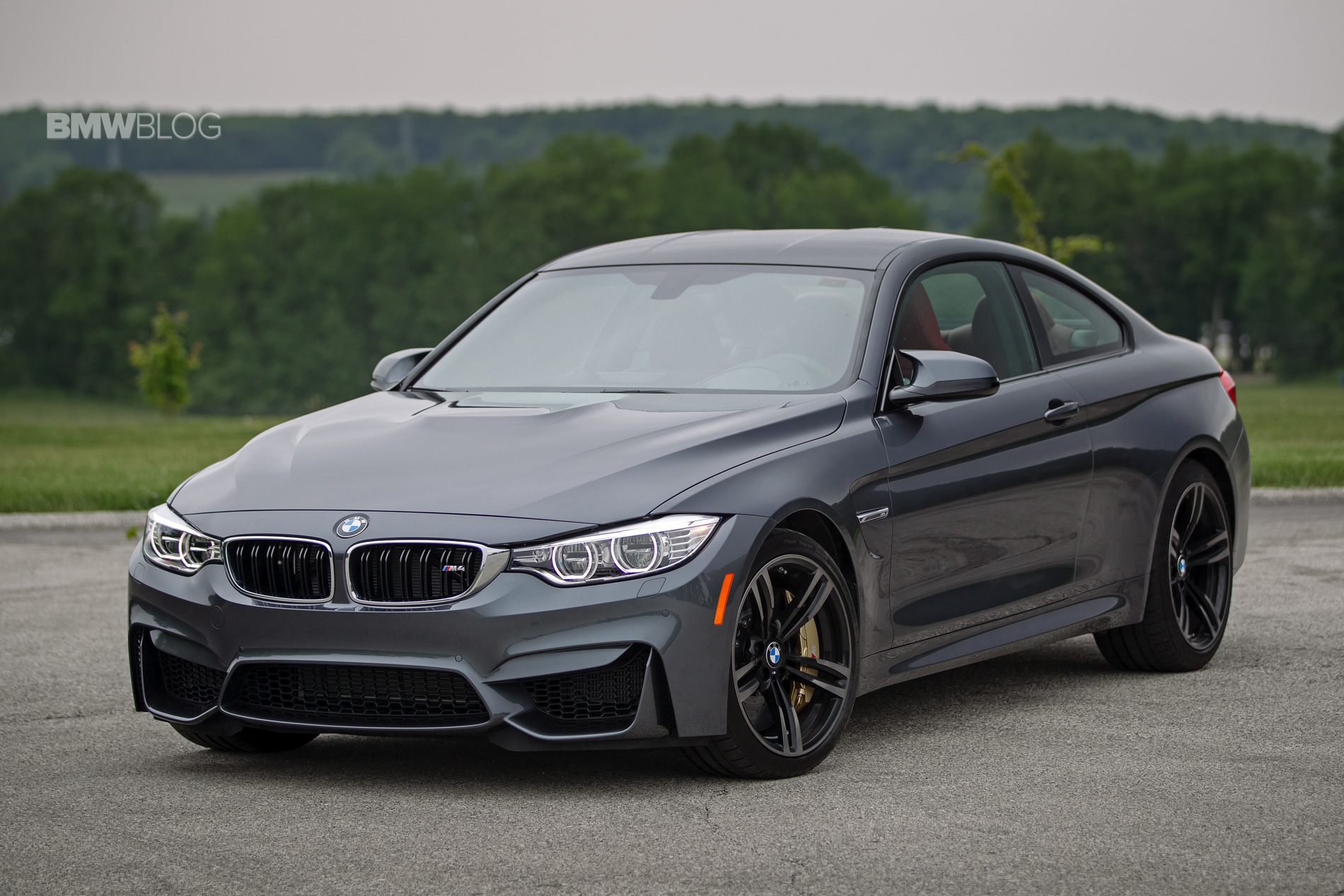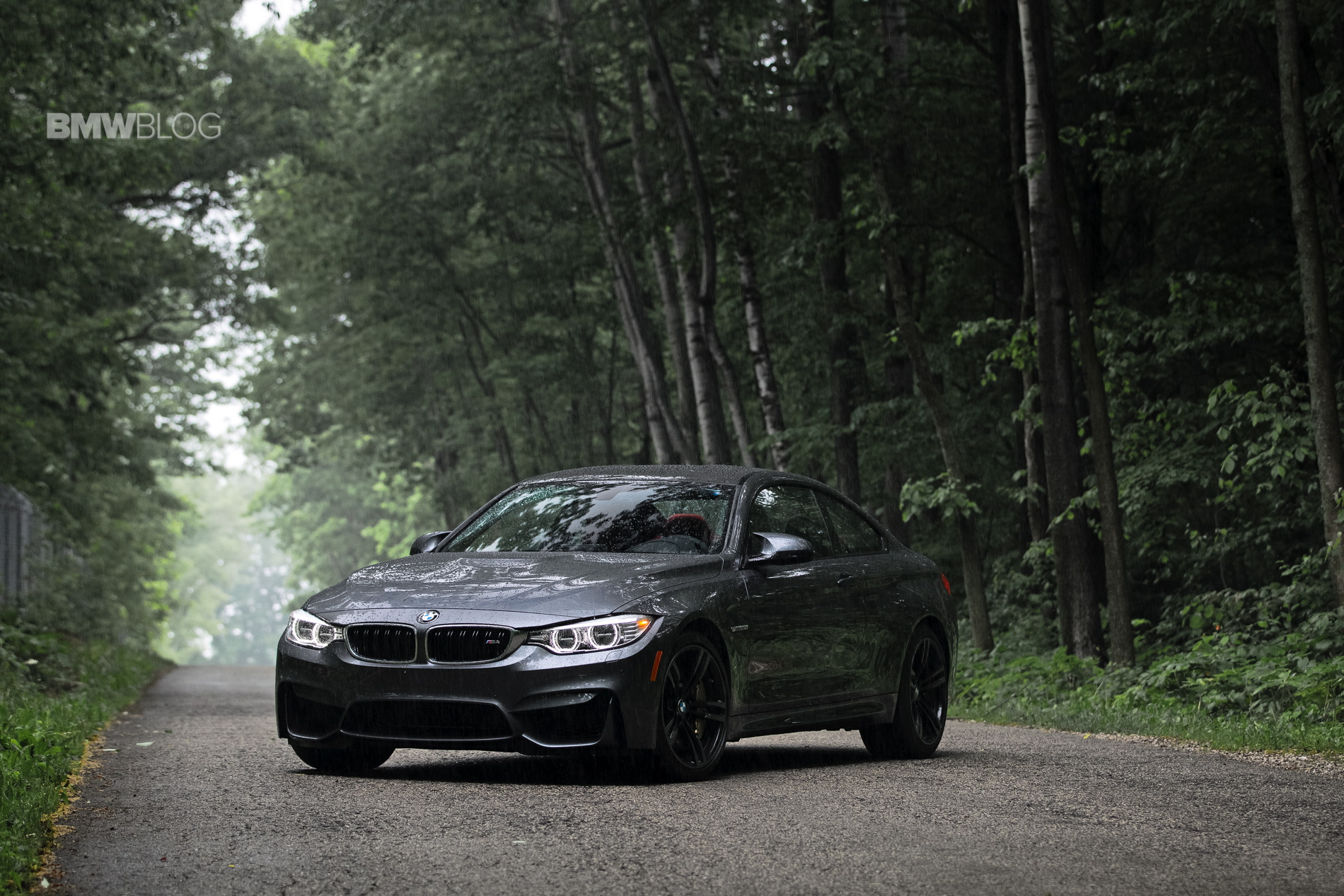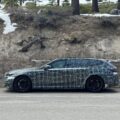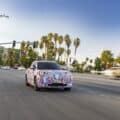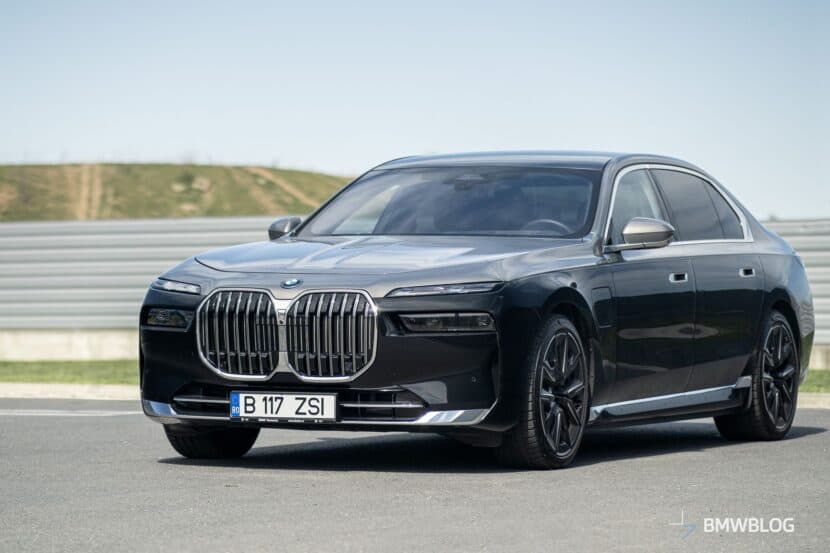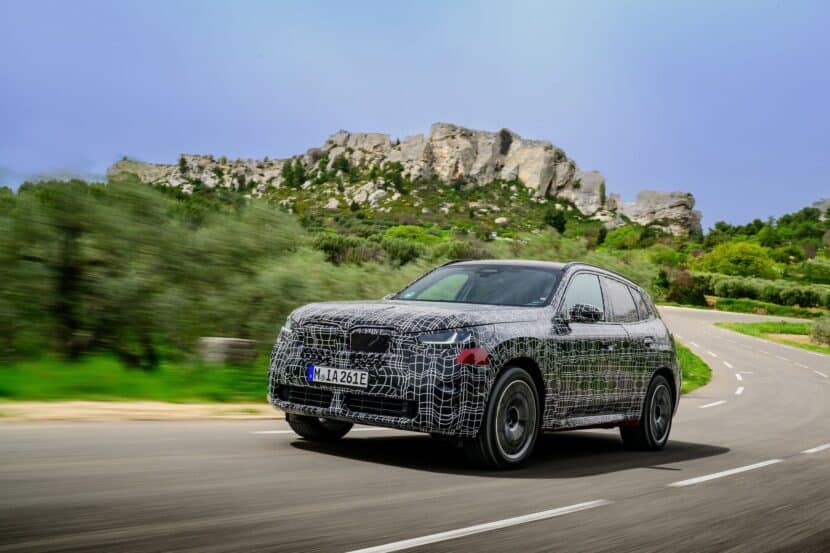Stepping into a garage lit only by old fluorescent bulbs and cloud-blotted morning sunlight, four generations of BMW M3 stood before me. Lined up from oldest to newest, a Hellrot E30 M3 is first, flanked by an E36 M3 Lightweight with an E46 M3 and Lime Rock E92 M3 coupe rounding out the group. Each car, representative of a different phase of BMW’s history starting with the humble, raw beginnings with the E30 M3 as a homologation special on down to the E92 M3 representing the peak of driver-centric technology converted to a superb platform on which to build a race car – 26 years on and the times have definitely changed.
Those changes are what makes each generation of the M3 so interesting to me. Discussing the M3’s place in history with a friend, we came to the conclusion that the shift from one generation to the next were very different cars in terms of how the lineage played out and perhaps what the M3 meant to the car enthusiast world. Compared to something like a 911 where the move from generation to generation feels like a slow evolution in its shape, size and engine configuration, the M3 has always been very much a car of the times, though, one that has also stood the test of time. More on that later.
Running my eyes over the four generations of the M3 leads me to the twins nestled behind a handful of tables to host members of media. Backlit by red and blue lamps, the twins are a Yas Marina Blue BMW M3 and the new-but-perhaps-not-new Austin Yellow BMW M4. Being a massive fan of the early 2000’s era BMW, the irony isn’t lost on me that these two colors look strangely reminiscent of the E46 M3’s launch colors of Laguna “Smurf” Blue and Phoenix Yellow.
Before spending too much time ogling the flared, menacing M car, we were treated to a presentation by BMW of North America CEO Ludwig Willisch who happened to be the head of M GmbH until just days after the single scroll, twin turbo S55 motor of the M3/4 was identified. The man behind the selection of that engine? Our next speaker, Albert Biermann, VP of Engineering for M GmbH and someone tasked with walking a room full of non-technical laymen through all of the carefully engineered technical advancements of M GmbH’s latest offerings. Mr. Biermann’s sporting nature is not to be questioned, either. He’s a BMW lifer and someone who helped sort out the original E30 M3 in addition to aiding Robert Ravaglia win a Group A championship. Beyond that, he’s spent his last 31 years working in the development of both race and road cars.
The Diet
The bulk of Mr. Biermann’s presentation centered on the most important advancements of the latest M offerings: weight savings. Over the last few decades, safety and luxury have muscled their way into M cars resulting in weight creep. With the F80 and F82, BMW M sought to remedy this with the use of lightweight materials with 4kg stripped from the aluminum hood along with an additional 3kg taken from the nose of the car – not to mention the savings found in the motor by dropping two cylinders. Moving to the rear of the coupe, Herr Biermann and his team found an additional 4kg of savings using a composite rear trunk lid similar to the M3 CSL. Inside the car, the use of lighter seats weighed out to save 10kg while pounds have been cut underneath the car via savings in the CFRP-built driveshaft. All-told, the M GmbH claims a savings of approximately 180lbs over the outgoing M3 which in turn should yield improved driving dynamics by cutting weight over the front and rear axle and at the corners of the car.
After a briefing on track safety and a quick 3-lap instructional tour of Road America – we were left to explore the limits of M3 and M4. My first stint was at the wheel of a DCT-equipped M3 with the optional carbon ceramic brakes with the lovely if not questionably painted gold calipers. The historic circuit certainly not lacking in hairy-chested opportunities to flex M muscle such as grip levels at the scabbed block of Armco and concrete known simply as “The Kink” where drivers had to commit to the speed and turn-in lest the wall find itself with a new shade of what’s-the-name-of-that-F1-circuit yellow.
The Engine
Tearing down the pit road exit and off into Turn 1, I was immediately greeted by a familiar Bavarian noise via the S55 motor. Perhaps not by coincidence, the aptly-named S55 sounds distinctly like the straight-six that came before it via the naturally aspirated S54 engine found in the third generation M3. While at low rpms, the S55 lacks gruff and grumbly ruckus of the S54, at 4,000rpm on toward the 7,600rpm redline it’s hard not to think that the S55 has a bit E46 M3 CSL induction noise in its note(heresy, maybe but a keen ear will catch similarities). It makes for a welcome departure from the E92 M3’s V8 which felt a bit quiet at times. To the early critics of the M3/M4’s exhaust note, get behind the wheel, keep the gears low and revs high and you’re in for an aural sensation.
Beyond it strictly BMW scream, the S55 impresses with output. While displacement and cylinder count are both down and horsepower has climbed a measly 2%, torque is up by a massive 38% or 111lb-ft over the outgoing 4.0-liter V8 lump. This mountain of torque, thanks to the twin-scroll turbo setup, lends to a much improved seat-of-your-pants driving experience. Compared to the engine it replaces, the S55 surged forward at the behest of my right foot as if it wanted to rip itself from the engine mounts and plow forward through the sculpted, lightweight nose. So much does the M3 want to put down its power, in most corners I found I could easily spook DTC when jumping on the throttle early at a corner exit. While annoying to see a tiny yellow light in the instrument cluster flashing back at me like a German engineer standing trackside disapprovingly shaking his head, it eventually helped me to better time my inputs making for cleaner exits from a corner thereby clicking off faster laps and kept me out of the Armco.
Interestingly, BMW has managed to achieve in the S55 a turbocharged power plant that never quite feels like a turbocharged power plant. While the S55 doesn’t have the sky high redline of the outgoing S85, there’s never a plateau in the power band until you reach the upper echelons of the revs. While the V8 begged you to take it all the way to the rev limiter to extract power, the twin scroll ‘six feels as though by the time you hit 7,000rpm it’s time to move onto the next gear. So, a motor with all of the benefits of turbocharging and most of the free-revving characteristics of a naturally aspirated engine? Count me in.
As good as the S55 is by itself, paired with the DCT ‘box, the combination is a winner. While a manual was on hand for road tests, I was unable to give it a shot. Disappointing, yes, the combination of the S55 with the 7-speed gearbox made the three pedal option a distant memory as I streaked through The Kink as a blur of iridescent blue. Set to Sport Plus mode (on track, we were all dialed into M2 settings with for the car dialed to maximum aggression), the transmission popped off angry, if not brutal, upshifts as I hurdled down the front straight watching fellow enthusiasts snap off photos before I hit the braking zone for Turn 1. Downshifts were equally sharp, and with appropriate braking done at the entry to a corner, downshifts could be fired off with the same cyclic rate as an H&K MP7. Not surprisingly, DCT will more than likely be the transmission of choice for most buyers and they wouldn’t be wrong. Aside from the convenience factor in everyday driving, it never feels intrusive or disruptive in the driving experience like its earlier M forefathers of SMG II and SMG III.
Steering/Handling
With regard to inputs, the M3/M4 has what I would call “modern” steering. Now standard with the servotronic steering system (albeit tuned to suit the manic nature of the M models over the standard 3 and 4 Series cars) there is a noticeable lack of sensation from the wheel as compared to the F80/82’s predecessors. At track speeds, the steering weighted up nicely requiring more thought and heft to be put into your angle of attack on a corner. However, turn-in did result in a sense of vagueness in where the front tires were lining up leaving me to somewhat intuit that I was on-line. After a handful of laps I came to the realization that I had to put a bit of faith in the steering inputs and that if I kept my eyes up, the car would take the corner with aplomb. A few more laps in, the steering inputs felt intuitive once I acclimated to how it worked. The wheel itself was comfortable in hand with just the right thickness allowing easy access to the paddles with just the mildest of reaches to click off a gear change.
While I never quite felt at home with the steering inputs (this is one of the very few areas that the M3/M4 strongly resembles its baseline F30/F32 relatives) I did find that the wheel required minimal maintenance mid-corner to keep the nose pointed in right direction. Pouring the coupe or sedan into a corner I could fix my arms in position and the car would track through the turn with little need for further adjustments via the wheel.
The ease by which I could steer the M3 via the wheel meant I could rely on the S55’s power to steer the sedan with throttle inputs. This proved especially helpful through the Carousel in the latter portion of Road America. This corner proved to be an excellent benchmark for the M3 and M4 as I felt that the coupe was more inclined to carry higher entry speeds and then maintain grip throughout the sweeping turn as compared to the sedan. When pushed, both cars were highly communicative in terms of keeping me aware of status of grip and angle at any time – the handling no doubt a byproduct of the aforementioned weight savings. However, the M3’s Michelin Pilot Super Sports would give in to torture sooner than those of the M4 as the tires would begin to chirp at the edge of adhesion. Goading the sedan further, I would have no doubt taken full advantage of the electronically controlled, multi-plate differential and felt that the sedan would have more than willingly participated in an epic, controlled drift; spraying the circuit with French clag.
Brakes
On a quicker lap, I found myself cresting the hill just beyond the exit of Turn 14, perhaps even catching a little bit of altitude as the traction control light was protesting the entire way up the incline, before hitting a top speed of just over 150MPH before hitting the braking zone to Turn 1. I said it with the M5 and M6 and have said it of 911’s and the like that I don’t believe in the need for ceramic brakes. They’re squeaky on the road, highly expensive and sometimes, depending on the brand, come with garish, gold brake calipers.
With a ghostly “150MPH” staring back at me via the heads up display and a rapidly approaching hard right-hander growing in the horizon beyond that, I felt it was the appropriate time to try out the six-piston front, four-piston rear M carbon ceramic brakes. Initial brake feel is a bit squishy and vague but pushing further, I was rewarded with a rapid scrub off of speed. With a road surface somewhere around the consistency of a teenager’s face, the M3 squatted hard under braking, the rear feeling as if it were ready to rip chucks of tarmac up in its efforts to bring the 3,540lbs sedan (3,530lbs for the coupe) feeling as though it might squirm around though it never set a polished 19 inch wheel wrong. Slowed to an appropriate entry speed, I flung the tri-color-stitched steering wheel over and on through the first turn.
It turned out that, after spending most of the day building more and more confidence with pushing my braking points farther out that I was wrong about ceramic brakes. Is $8,150 for the optional brakes a lot of cash considering an M4’s base price of $64,200? Yes – it’s 13% of the base price. Are gold calipers silly looking? Yes. But is the strength of the brakes for anyone who intends to track their car worth it? Absolutely.
Conclusion
As the afternoon began to draw to a close, I went out and turned my last few laps of anger around Road America in M3’s and M4’s just to get any last takeaways I may have missed on the car. In doing so in either guise, coupe or sedan, the car absolutely flatters the driver. An M3/4 equipped with the optional M adaptive suspension (a steal at $1,000), advanced weight savings throughout the car and the characterful S55 motor make for a compelling near-exotic. Hustling around a track, the F80/82 M cars without a doubt shine and make their drivers look like a Hans Stuck or Bill Auberlen. The M3 and M4 give the enthusiast a reason to have faith that BMW M are in good hands despite the change in direction to turbo power for arguably BMW’s most important sports car. Beyond that, it’s difficult to not be content with where the M3 and M4 will fit into the legacy of M GmbH.
The growl of the straight-six motor and the matching exhaust note feel like a tip of the hat to the E46 M3. The application of carbon fiber-reinforced plastics and associated weight savings along with significant advancements in driver systems feels distinctly E92 M3. The maturity from the F80/82 generation over the last reminds of the evolution from the E30 to the E36. For the first time, perhaps, the M3 of a new generation feels like a cohesive embodiment of all generations before it. Look past the arguably silly naming convention for coupes and sedans and look past the turbocharged motor (or don’t, it’s fantastic either way) and you’ll find that Bavaria still has right to claim itself as home of the Ultimate Driving Machine.
Look for our road test review shortly.
Reviewed by Andrew Murphy on
.
The new BMW M3 and M4 Coupe tested on the race track
For the first time, perhaps, the M3 of a new generation feels like a cohesive embodiment of all generations before it. Look past the arguably silly naming convention for coupes and sedans and look past the turbocharged motor (or don’t, it’s fantastic either way) and you’ll find that Bavaria still has right to claim itself as home of the Ultimate Driving Machine.
Rating: 4.8


